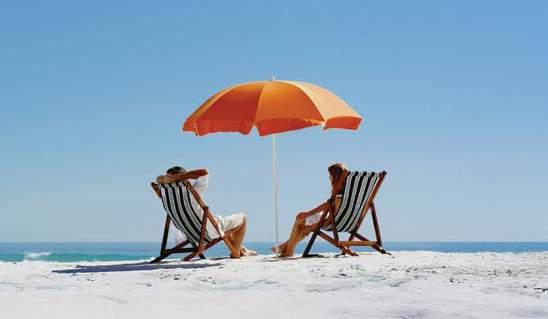
The best places to retire in Australia


The best places to retire in Australia
Managing editor
Bronwyn Mandile
Art director
Mara Cheshire
Designer
Jovelyn Gonzales
Contributing writers
Carolyn Tate, Bron Maxabella
Content production
Maddie Southall, Rob-Yna Peña-Lopez
Marketing & growth
Rachel Lim, Grace Chen, Nicolas Rivarola, Catherine Phung
Operations
Megan Burgess, Rachel Monahan
Engineering
Dennis Leon, Varun Sehgal, Jason Rudling, Navin Khadka, Jono Yan, Lauren Mulholland, Den Tsou, Long Le, Brian Ong, Reynald Kean Ortiga, Adrean Palafox, Ralph Bibera
Head of Legal & Compliance
Ralph Timpani
Managing director
Ash Frenken
Citro acknowledges the Traditional Owners of Country throughout Australia and pay our respects to Elders past and present.
Top 50 retirement locations are based on Citro's assessment detailed at the end of this guide. While every effort has been taken to check the accuracy of figures in this guide, readers should verify all information. This guide contains general information only and is not financial advice or recommendations of financial products..
This guide is published by Citrus Innovations Pty Ltd, 50 Bridge Street, Sydney, NSW 2000 ABN 25 667 285 654
joincitro.com.au Phone 1300 869 596

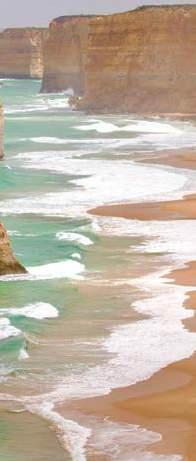
There’s a moment when the idea of “retirement” shifts from something in the distant future to something you’re actively planning for. For many of us, that shift comes with a question: where do I want to be for this next chapter?
This guide is here to help you explore the answer.
At Citro, we know that where you live shapes how you live. That’s why we’ve done the legwork to uncover the towns and suburbs across Australia that offer the right mix of lifestyle, affordability, healthcare and community. Places where you can truly thrive in retirement, not just reside.
To create this list, we dug into Cotality data then researched communities across the country to compare housing costs and availability, healthcare options, transport access and lifestyle factors. We also spoke with experts like OpenAgent’s coCEO Johanna Urrutia and AMP’s Chief Economist Dr Shane Oliver, who reminded us that affordability is already shifting the seachange and treechange trend into new areas.
Another thing we learned is that the data can’t tell us everything. That’s because retiring isn’t about ticking off someone else’s perfect life list; it’s about finding the place that feels right for you. A place where you can walk to a café, catch a footy game on the weekend, tread the boards in a local theatre production, take the grandkids fishing and bump into a friendly face at the local markets… or none of the above. What’s on your list?
Thanks for being here. I hope this guide inspires new ideas, fresh possibilities and a deeper sense of what the good life looks like in the years ahead.
Warmly,

Bronwyn Mandile Managing Editor, Citro
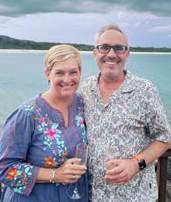
Why regional Australia 5 is calling your name
There comes a time when the city noise starts to feel a little... loud.
Goodbye big house, hello big life? 9
It usually starts with a feeling. That the family home is too big, too much, or just doesn’t fit life anymore.
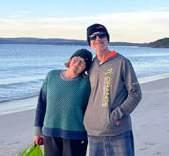
Escaping the rat race: Michelle and Alex’s move from Sydney to Shell Cove 65
Their move from Sydney's north shore to Shell Cove, near Kiama NSW, has given them the beachside lifestyle they dreamed of.

Happy Howerd: downsizing and thriving in Western Australia 141
When retirement is on the horizon, downsizing is often the practical next step.
Joseph and Colleen's Mount Barker working retirement 159
While many are ready to put their feet up for a well-deserved rest, this couple chose to follow their passion into the wine industry.
How we found our top 50 241 What makes a location truly liveable?
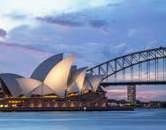
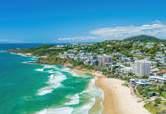

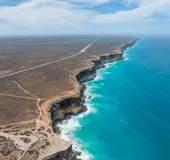


There comes a time when the city noise starts to feel a little... loud. The traffic, the crowds, the cost of just about everything. No wonder so many Australians are eyeing off a quieter life in the regions; one with more space, more trees and potentially fewer zeroes on the property listings.
From breezy coastal towns in Victoria to laidback river communities in inland NSW, regional Australia is stepping up as a serious option for retirement. The pace is gentler, the people say hello at the shops and – let’s be honest – the home prices don’t make your super sweat.
Of course, trading in city life for country calm isn’t just a lifestyle choice; it’s a big move with real considerations. Here’s what’s making regional living so appealing and what you’ll want to think through before making the move.
Let’s start with the obvious. The cost of housing in most capital cities is enough to make anyone reconsider their postcode. According to the July 2025 Cotality Housing Chart Pack, the median house price in Sydney is over $1.2 million; Brisbane is sitting at $926,000; Melbourne and Perth are just under and just over $800,000; and Canberra and Adelaide are around $850,000. Meanwhile, you could pick up something spacious and sundrenched across regional Australia for half the price, or even less.
“You may want access to good lifestyle and amenities and excellent health infrastructure, but then you find the area is just too expensive and you've really got to go somewhere else,” says AMP Chief Economist Shane Oliver. “For instance, South East Queensland and Northern New South Wales rate
highly on virtually all lifestyle aspects, but demand has meant they’ve become less affordable.”
Selling the family home in the suburbs and buying in a regional hotspot can free up hundreds of thousands in equity, which is an attractive prospect for anyone planning to boost their retirement nest egg. However, make sure the affordable location you choose ticks all the boxes.
“The most affordable markets tend to be located a longer distance from essential amenities and services,” says Tim Lawless, Executive Research Director at Cotality. “Logically, supply and demand play a critical role in determining the value of housing. Areas located further afield but with less amenity will attract a discounted price, while areas that are high in amenity and commutable to a major city tend to have the highest housing values.”
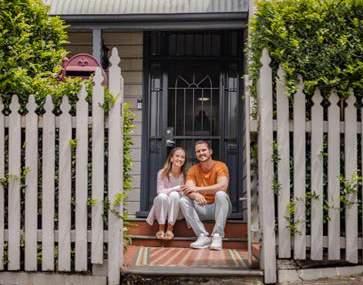
The ‘availability’ part of the equation can also be tricky. While demand for regional housing has surged, supply hasn’t always kept up.
“As the most popular markets become out of reach for mainstream buyers from a pricing perspective, there is evidence that demand is spreading further afield,” says Tim. “The Wide Bay region of Queensland is a good example of a coastal market that has been in high demand as growth ripples north from the Sunshine Coast.”
Popular retirement towns like Byron Bay, Torquay, or Port Lincoln have extremely tight markets, with low vacancy rates and limited new development. Which is why their more open neighbours Ballina, Sawtell and Victor Harbor made it into this guide instead.
“The influx of popularity of certain areas does tend to have the impact of making them less affordable,” says Shane. “We hear those complaints regularly about the inability to buy in or rent, people are effectively shut out of areas due to rising demand and a lack of suitable properties.”
That trickles into other aspects of lifestyle choices too: if service providers and families can’t afford to live in an area, healthcare and lifestyle opportunities are often compromised too.
Shane believes local and state governments should be doing more to move away from ‘free-standing house on a big block’ thinking and use the land already released in regional areas more strategically. “It would just make more sense to think about what's likely to occur in terms of population growth, what age they're likely to be, what the
demand is for higher density living and set aside areas for that and develop that,” he says.
While the regional dream’s alive and well, it’s worth being flexible. If your first-choice town has a tight housing market, a nearby spot with a similar vibe (and more available homes) might just surprise you.

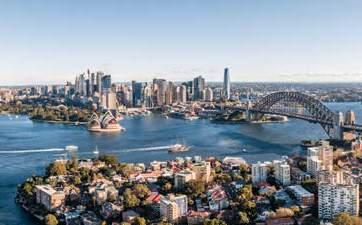

“Importantly for retirees, if they are looking for housing that is located further afield, they will need to do their due diligence to ensure essential services such as health care and social opportunities are available,” says Tim.
Not every regional town has a major hospital or a wide range of medical specialists, or even access to these facilities nearby. If you’ve got a complex health condition or need ongoing care, this can be a dealbreaker. And, think ahead: even if you’re in good health when you first retire, how likely is it that you’ll stay that way? According to the Australian Bureau of Statistics, 86.6% of older Australians have one or more longterm health conditions and 52.3% have a disability.
“People tend to underestimate how important access to healthcare is,” says Shane. “Particularly if you're
just retired and you're 65 and you're perfectly healthy... and then as you get older you find you don't have the medical facilities that you actually need. So I think initially there could be a tendency to prioritise the location in terms of lifestyle... but that may become an issue as you get older.”
That said, many regional centres have excellent healthcare options, particularly if you’re near a larger regional town like Albury or Wodonga, Mount Gambier, Launceston, Toowoomba, Nowra, Wagga Wagga or Newcastle. It’s worth playing the long game and doing your homework: What’s the local hospital like? Is there a good GP nearby? How far is the nearest specialist or private clinic?
This doesn’t have to be a barrier, but it should be a big part of your decisionmaking process. Plan to either move to a centre that has good healthcare in the first place, or at least factor in a second move down the track as your health needs dictate.
Gone are the days when moving regionally meant complete cardependency (although, let’s be honest, in many places it still does). But an increasing number of regional towns are improving local bus networks, adding ride-share services, increasing community transport services and investing in pedestrianfriendly infrastructure. All this is important during retirement because chances are, eventually, you may no longer be driving.
Proximity to a train station or an airport can also make a huge difference. Especially if you plan on making international travel a big part of retired life. Being able to fly straight into your hometown feels particularly luxurious at the end of a long-haul flight. Plus, if you want to regularly see family (or have them come to you), don’t discount the value of an easy connection.
Lifestyle: slower, yes, but also richer
Of course, the biggest pull of regional life is lifestyle. Nature on your doorstep, a strong sense of community, slower mornings, longer chats. In many towns, walkability is getting better, and you’re more likely to bump into a friend at the markets than spend an hour stuck on a freeway.
There’s also more opportunity for intergenerational mingling than you might expect. The best retirementfriendly locations are also good places for young families and visitors, which can really add energy to everyday life.
“Regional areas can become quite vibrant and young places. Think of the Gold Coast – it’s dominated by older people, but there are lots of backpackers and young workers too. So you've still got a good mix there,” says Shane.
Plus, let’s not forget that it’s often the young people in town who open the fun cafes and set up opportunities for things like volunteering, bushcare, joining a book club, or learning how to golf, salsa dance or woodcarve. So look for a good generational mix when you’re settling on an area you like.
So, is regional retirement right for you? It really depends on your needs, your finances and how flexible you’re willing to be. But if you plan carefully, ask the right questions and stay open to new possibilities, a relocation might just offer the retirement lifestyle you didn’t know you were craving.
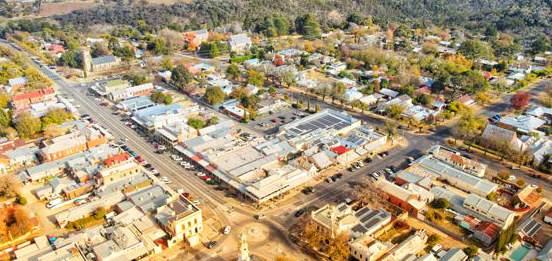
It usually starts with a feeling. That the family home is too big, too much, or just doesn’t fit life anymore. For many Aussies, downsizing isn’t about giving something up, rather it’s about moving towards something better. Whether it involves a move around the corner or a seachange or a treechange, downsizing is all about freedom, simplicity and a fresh new chapter.
The shift is on: lifestyle moves in retirement
These days, retirement isn’t so much about winding down as it is about shaking things up. For many, that means starting something – and somewhere – completely new. From breezy coastal towns to peaceful hinterland escapes, thousands of older Aussies are turning decades of home equity into a lifestyle that offers more freedom, more ease and a whole lot more sunshine.
The latest data from OpenAgent based on movements from June 2023 to May 2025 shows that nearly 4 in 10 downsizers (37%) are in regional areas, confirming what many of us already suspected: the regions are alive and well.
“Retirees have always chased treechange and sea-change dreams, but today the regional pull reaches well beyond that age group – it’s a wholeof-market shift that took off during
COVID and never reversed,” confirms Johanna Urrutia, co-CEO of OpenAgent. The latest Commonwealth Bank Regional Movers Index (RMI) report confirms it: net migration into regional Australia is still 51 per cent above the pre-COVID average.
While that headline reflects a broader shift across all generations, it has a
ripple effect for older downsizers. When younger families head for bigger blocks, more affordable housing or a slower pace outside the city, parents and grandparents often follow. “Proximity to family is one of the strongest motivators we hear, so the broader regional wave actually reinforces the classic retiree move rather than replacing it,” says Johanna.

OpenAgent co-CEOs Zoe Pointon and Johanna Urrutia suggest people first test-drive a few retirement locations by staying there for a few weeks at different times of year. Image: OpenAgent
“What ties any kind of late-life move together is the mindset change,” Johanna says. “Downsizing is no longer a ‘last resort’ but more so a lifestyle upgrade. With less upkeep, no dependents and a healthy slice of equity unlocked, this next chapter can be some of the best years of your life.”
OpenAgent data supports this, showing that nationally 94% of people are selling freestanding houses with many then opting to buy smaller, easierto-manage homes.
For some, it's a move closer to family, friends or health services; for others, it's about joining a like-minded community, hitting the beach every morning, or finally having the space to plant a veggie patch.
“OpenAgent typically hears the same kinds of motivations and they aren’t really trend-driven,” says Johanna. She outlines the key factors motivating downsizers –whether they’re staying put or relocating:
1. Unlocking equity: After years of growth, many owners walk away with a significant gain and want to use that to give themselves financial freedom in later life.
2. Upgrading: Moving locations often means you get more house for the same or less money.
3. Future-proofing: That means, singlelevel living to avoid juggling stairs and, in
some cases, a much smaller property to cut down on maintenance, or combat soaring power costs.
4. Proximity: A move that puts people closer to family, friends and quality healthcare delivers the support network most of us need as we age.
5. Lifestyle freedom: Living close to amenities you can walk to plus weekends spent sightseeing, visiting grandkids, enjoying the beach or walking a bushtrack.
Regional areas across Australia are becoming increasingly attractive retirement destinations and it’s not just about the slower pace or beautiful landscapes. Government investment in healthcare, infrastructure and transport is steadily improving access to essential services in many regional towns.
Cotality data shows that buying in regional Australia makes good financial sense too. The key is to be strategic about what you can afford balanced with access to infrastructure.
“Logically, supply and demand play a critical role in determining the value of housing,” says Tim Lawless, Executive Research Director at Cotality. “Areas located further afield but with less amenity will attract a discounted price, while areas that are high in amenity and commutable to a major city tend to have the highest housing values.”
The RMI report indicates that regional areas are growing due to better
employment opportunities, enhanced digital connectivity and lifestyle upgrades helping to reverse the traditional flow of people to cities. In March, the Australian Housing and Urban Research Institute paper Understanding why people move to, or from, regional Australia reported that more people are leaving cities than moving to them and they are more likely to become homeowners in their new location. The study identified 3 key areas where government resources can have the biggest impact: housing supply, healthcare services and local transport infrastructure. Along with lifestyle factors, comparatively more affordable property is the biggest drawcard for retirees looking beyond the suburbs to find their ideal lifestyle in regional Australia.
“‘Lifestyle’ locations remain in high demand and tend to have some common themes such as proximity to water or greenspace,” says Tim. “Unsurprisingly, the most popular of these locations also tend to have high price points.”

The OpenAgent data combined with Cotality’s latest regional market update shows that while metro areas still attract more downsizers overall (63% stay metro), there's a strong trend towards regional living in several key states.
• New South Wales leads the treeand sea-change trend, with nearly 46% of downsizers heading for the regions. From the Southern Highlands to the Central Coast and Northern Rivers, it seems NSW retirees are embracing the slower pace and natural beauty of regional areas… not to mention the lower housing prices?
• Queensland isn't far behind, with 42% choosing regional towns. With its sunny climate and relatively affordable housing in beachside places like the Sunshine Coast and Hervey Bay, the sea change appeal is clear.
• Western Australia sees a similar story, with 43% heading to regional areas, likely drawn to areas like Margaret River, Albany or Bunbury.
• Victoria, however, is holding tight to metro living, with a whopping 80% of downsizers staying in urban areas. The lure of Melbourne’s cultural life, public transport and downsizerfriendly apartments remains strong.
Nationally, the OpenAgent data shows that downsizers are overwhelmingly selling houses (94%) rather than units (6%). This isn’t surprising given that many empty-nesters are coming off decades of home ownership in suburban family homes.
“Anecdotally, many retirees are looking for modern low maintenance properties, potentially overlooking houses for medium density options that provide a blend of low maintenance and high amenity,” confirms Tim. “Medium density housing options provide an element of convenience in that they can be ‘locked and left’ without too much requirement for ongoing maintenance.”
But while the appeal of lowmaintenance living is clear, there’s still a lingering misconception that downsizing means compromising. In reality, many retirees are using the equity from their long-held homes to upgrade their lifestyle, not downgrade it.
“A lot of people still picture downsizing as ‘settling’, trading a beloved family home for something smaller and second-rate. The reality is the opposite,” Johanna explains. “Because you’re cashing out of a high-value asset, you can often step up into a newer, low-maintenance home that actually fits the way you live now.
“Move out of the city and the equation gets even sweeter: regional dwelling prices are still far lower, so your sale equity stretches further.
Holding for the long haul then cashing in
One thing is certain: Aussies like to stay put until retirement. The OpenAgent average downsizer has lived in their home for over 15 years, with many holding on for even longer. And after that kind of tenure, they’re walking away with more than just memories.
The national median capital gain for downsizers is a tidy $577,000. In New South Wales, it’s even higher at $767,000, while South Australians pocket an impressive $625,000. Even in states with more modest property markets like Western Australia and Tasmania, gains of $452,500 and $500,000 respectively are typical.
\On a per-year basis, the numbers get even more interesting. New South Wales leads again with $50,705 in annual capital growth, followed by Queensland and South Australia.
For retirees, that kind of money can mean:
• A super top-up for extra income
• Paying off debts or mortgages
• Funding travel and hobbies
• Helping adult children or grandchildren
Sea change: chasing the coastal dream
The vision of waking up to ocean air and grabbing a coffee in your thongs is still very much alive. Coastal communities offer a relaxed pace, natural beauty and that intangible sense of escape from city life.
Johanna confirms that the dream of coastal living is far from fading. In fact, it’s evolving to suit a more practical kind of paradise. “We talk to a lot of agents, and what we tend to hear about the seachange buyer’s typical wish-list is quite consistent: a coastal village feel, flat promenades that lend themselves to easy walks and bike rides, reliable high-speed internet and access to a hospital or medical centre to feel safe. In other words, they want that ‘everyday feels a bit like a holiday’ feeling without sacrificing connectivity or healthcare,” she says.
In particular, retirees are favouring regional coastal hubs like:

• NSW: Ballina, Yamba, Tuncurry
• VIC: Brighton, Rosebud, Paynesville
• QLD: Hervey Bay, Port Douglas, Coolangatta
• SA: Victor Harbor, Kangaroo Island, Wallaroo
• TAS: Huonville, Launceston, St Marys
• WA: Esperance, Fremantle, Mandurah
But coastal living isn’t just about aesthetics. These areas often have good health services, growing lifestyle precincts and active retiree communities.
“As the most popular markets become out of reach for mainstream buyers from a pricing perspective, there is evidence that demand is spreading further afield,” says Tim. “The Wide Bay region of Queensland is a good example of a coastal market that has been in high demand as growth ripples north from the Sunshine Coast.
“Importantly for retirees, if they are looking for housing that is located further afield, they will need to do their due diligence to ensure essential services such as health care and social opportunities are available.”
Not everyone wants sand in their sheets. For some retirees, the lure of the country – and often cheaper real estate – is strong.
“Budget often tips the scales as inland hubs within a two-hour drive of capital cities usually offer more bang for your buck than coastal cousins, making the lifestyle upgrade easier on the wallet,” Johanna says. “But that’s not the only reason people opt to go inland. These buyers are chasing the same fundamentals, like a friendly community and good services, but the flavour is different. They lean toward cool-climate towns where an arts scene, farmers’ markets and extra land for a veggie bed or workshop replaces the lure of the ocean.”
Tree change destinations that are stirring interest are:
• NSW: Armidale, Belligen, Katoomba
• VIC: Beechworth, Echuca, Maryborough
• QLD: Tamborine Mountain, Stanthorpe, Milton
• SA: Mount Barker, Murray Bridge, Greenwith
• TAS: Clarence District
• WA: Bridgetown, Mount Barker
These spots often offer more space, stronger community connections and opportunities to reconnect with nature or even start a hobby farm.
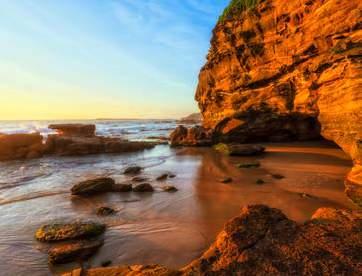
Not all downsizers move away. A significant portion simply shift to smaller homes in the same suburb or nearby, often to stay close to their support networks.
“Mini-moves within the same postcode are popular too,” says Johanna. “Many owners prefer to stay in their neighbourhood but swap the big family home for a low-maintenance townhouse or apartment.”
Local downsizers are looking for “lowmaintence living”, not necessarily a radical lifestyle change. Think step-free entry, wider corridors, walk-in showers, and smart, single-storey floorplans or a reliable lift for apartment living.
“If a downsizer is seeking an apartment, then low-strata and well-run complexes keep fees down so more of the unlocked equity can fund travel, dinners out and other entertainment instead of special levies,” Johanna says.
If you’re thinking of selling up but staying put, consider how well your neighbourhood will age alongside you. Look at things like walkability, access to public transport, nearby healthcare and supermarket options and whether the area has a strong sense of community. Will you still feel safe and supported there in 10 or 20 years? Are there parks, clubs or local events to keep you socially connected? And will you be able to access them if you can’t drive in future?
The downsizing trend is about more than just moving house. It’s a lifestyle decision, a financial strategy, and often, a deeply personal fresh start.
Not to mention packing up a life. Every drawer holds memories, every cupboard a chapter of your story. There’s the physical work, of course, but it’s the emotional labour that often takes people by surprise. Sorting through decades of belongings means making countless decisions about what to keep and what to let go of. It can feel like grieving parts of your past, even when you're excited about what’s next.
“We recently ran a survey and found that one in three sellers will end up in tears,” Johanna says. “There’s a lot of pressure on anyone selling their property, but when it comes to downsizers, typically, the stress can be really centred around the emotional aspect of selling the family home – which you may have lived in for decades – as well as stress about the financial outcome, and navigating all the nuances when it comes to funding their retirement, pension eligibility and super.”
In all, downsizing is proving to be a smart move that balances freedom with financial wellbeing. And whether that’s to go bush, coastal or just to a sleek apartment around the corner, people are reshaping what retirement looks like in Australia.
Source: Data based on OpenAgent downsizer activity from June 2023 to May 2025 across all Australian states and territories.

Planning is definitely key. Something we recommend as a starting point is getting an understanding of your property’s value, and the easiest way to get that ball rolling is to get a quick online estimate. This gives you a ballpark figure before speaking to agents about what they think your property might sell for in the current market.
A conversation with an agent is a must so you can understand the true market value of your home, but not just any agent. You should be talking to the top performers in your area, and we recommend speaking to at least three.
A good agent will be able to give you an indication of what sale price you might achieve for your home.
Once you know your numbers, get crystal-clear on why you’re moving.
• Do you want to be nearer to family or key services?
• Does the new place have to be single-level, no-maintenance, or in a gated community?
• Is there a dream location you’ve always pictured, or is maximising leftover cash the priority?
Write down your must-haves and rank them. Having a clear pecking order keeps decision-making simple when the right property appears.
You can then start thinking about the kind of property you can purchase next, where it will be located and how much you might have left after purchasing. Make sure you test-drive some of the areas you’re considering moving to. Spend some time there, preferably across different times of year – hit a few open homes, attend a few council-run events and ask the locals plenty of questions (visiting the library and asking the librarians your questions is another option).
Live like a local: shop at the local shops, try out the transport options (public transport, taxis, community buses) and investigate healthcare options.
These are just starting points, but you can access OpenAgent’s guide to downsizing and selling the family home and selling hub to get more information about what to expect during your selling journey.
Sea change or tree change? Either
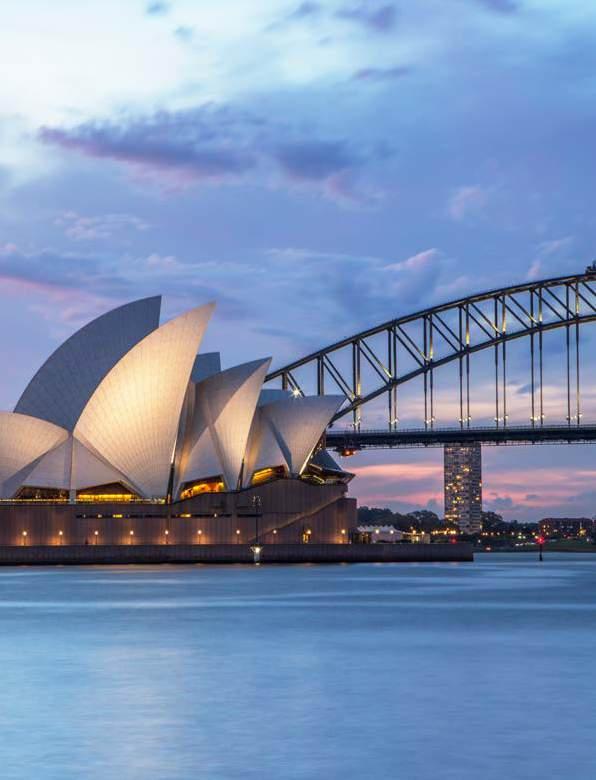
Summer
13°C to 26°C (occasional highs reaching 30°C)
Winter
1°C to 12°C (can drop as low as -7°C)
Average rainfall
763mm
Transport links
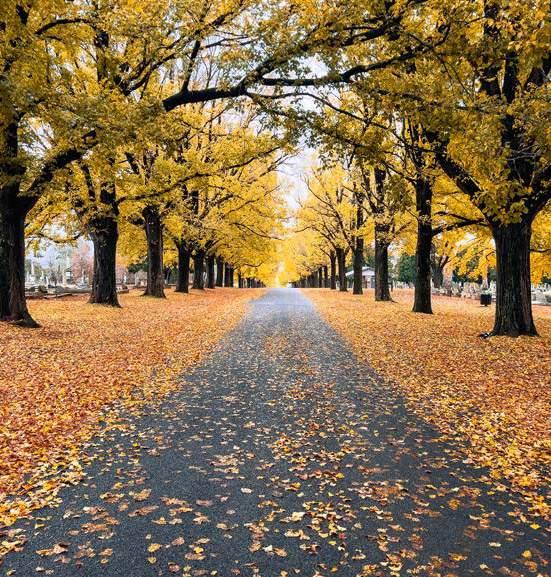
Affordability
Traditional custodians
The Anaiwan people
Discover the perfect blend of urban sophistication, charming country life and natural beauty in the multicultural university town of historic Armidale.
Why you might like it
Armidale was Citro’s 2024 number one retirement location pick and it’s easy to see why. About halfway between Sydney and Brisbane, the town is a bustling administrative centre, with easy access to national parks, gorges, cool-climate vineyards, waterfalls and wildlife habitats. All at a fraction of the cost of living in either of the big cities.
As the home of the University of New England, it’s a multicultural and sophisticated city too – with people from over 80 nations calling Armidale home. It also has all the infrastructure and amenities you need for a comfortable life.
Armidale Autumn Festival is a highlight of each year, offering a showcase of local talent, food options and of course the magnificent autumnal colours.
NEW
Median dwelling price
• University town
• Leafy cool climate
• Multicultural
Distance to nearest major hospital Armidale Hospital is in Armidale
Distance from nearest capital city Sydney, 535km
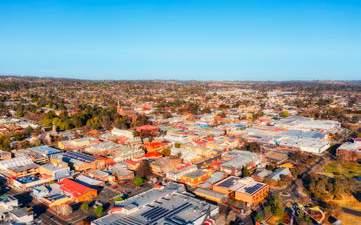
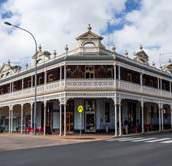
For culture lovers, Armidale boasts the best regional gallery in NSW outside of the main metropolitan cities – New England Regional Art Museum – with major collections valued at over $40 million. The museum also hosts regular events, workshops and art classes.
Armidale has a twin cinema, a music conservatorium, a community symphony orchestra and several choral groups you can join. Students studying theatre at the University of New England also put on regular shows throughout the year.
History buffs can enjoy the biennial Bach Festival, celebrating the music of German composer Johann Sebastian Bach.
If you love the outdoors, there’s plenty to keep you occupied, with bushwalking in Oxley Wild Rivers National Park and surrounding areas, trout fishing and sailing and helifishing on Malpas Dam.
Armidale is also the start of the Waterfall Way, 185km of scenic road that links Armidale with Coffs Harbour and passes through various waterfalls, valleys and rainforest bush. Wollomombi Falls is one of the highlights of the way, with a 240-metre drop (one of the state’s highest) easily seen from a viewing deck.
For a local tipple, there are plenty of wineries and breweries to visit. Try Welder’s Dog and Great Hops craft breweries, as well as Petersons Wines or Whyworry Wines for cellar door tastings.
If you like the idea of a sustainable life, you might want to consider getting yourself a hobby farm on the outskirts of the city. There’s also a variety of houses and apartments in the Armidale suburbs to choose from.
If you’d like to get involved in the local community, Garden Volunteers is a not-for-profit group that cultivates community while improving the historical gardens of Saumarez Homestead. The Armidale Volunteer Referral Service is another pathway to volunteering. It matches people to opportunities that suit their skills and interests.
Armidale Golf Club offers a scenic 18-holes and regularly welcomes new members. ‘Servies’, the Armidale Ex Services Memorial Club is a thriving social hub, with a bar, cafe, bistro and gelato bar.
Jacaranda Social Club has a variety of activities going on, including coffee catch-ups, pottery classes, creative arts programs and bus outings.
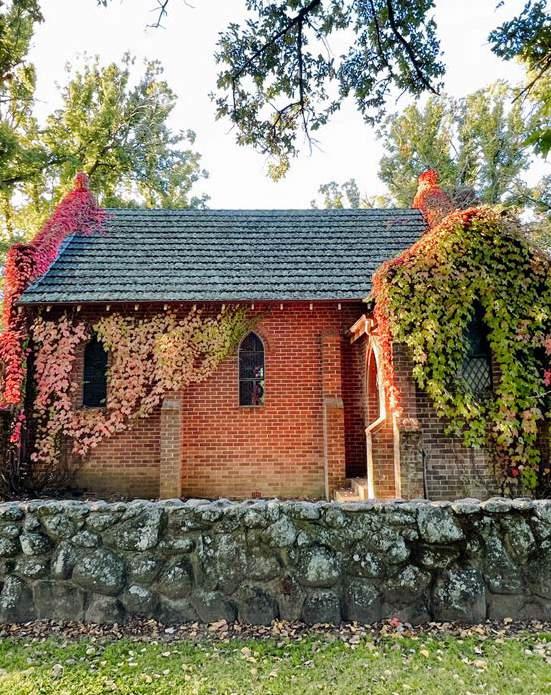
Summer 16°C to 28°C
Winter 9°C to 20°C
Average rainfall
1765mm
Transport links

Affordability
Traditional custodians
The Bundjalung people

Ballina is a coastal paradise with great beaches, great food, great fishing and an equally great community to welcome you.
Why you might like it
If you like the feel of Byron Bay but not the crowds or the price tag, Ballina could be for you.
Located in northern New South Wales, on the banks of the Richmond River, Ballina perfectly blends country town charm with coastal living. It’s got the relaxed, beachy vibe and cafe culture the region is famous for without the less-than-relaxing tourist crowds.
Ballina is big enough to have all the amenities you need, including excellent healthcare, but small enough to still be a tight-knit community (that happily welcomes newcomers). And if you’re a regular traveller, it’s hard to underestimate just how good it is to have a well-serviced airport right at your door.
Median dwelling price
• Close to Byron Bay
• Subtropical climate
• Beach, river and waterways
Distance to nearest major hospital Ballina District Hospital is in Ballina
Distance from nearest capital city Brisbane, 160km
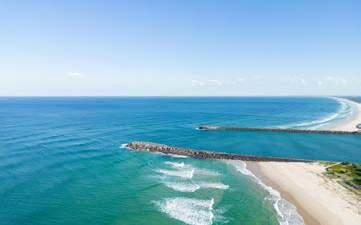
The first thing that will strike you about Ballina is its natural beauty. Surrounded by stunning surf beaches, the area is also home to several national parks – perfect for those who love the outdoors. If you’re looking to explore ancient World Heritage-listed rainforest, Nightcap National Park is a mere 45 minutes away.
Perhaps the second thing to strike you about Ballina is the iconic 35-tonne Big Prawn. And if that’s not enough of a hint that this is a seafood lover’s paradise, the myriad fresh seafood suppliers and restaurants should do the trick.
The Ballina Fisherman’s Co-op has fresh and cooked seafood, as does Northern Rivers Seafood.
You can also go out and catch your own haul, with plenty of boat ramps, jetties, sea walls and rocky outcrops to fish from, as well as the Richmond River, with a variety of bream, whiting, flathead, jewfish, trevally, blackfish, mangrove jack and tailor living here. And if you like your fishing to be a social activity, The Ballina Angling Club is always looking for new members.
Social and fun
Apart from the beaches and seafood, it’s Ballina’s strong sense of community that draws people in. There’s always something to do and plenty of ways to get involved and meet new people.
The Ballina Cup, a thoroughbred horse race, is held every January at the local track and is known for its food, drink and fashion. And the Ballina Art Society hosts an exhibition each November, as well as hosting classes and workshops throughout the year. Ballina’s what’s on website keeps you up to date with events and opportunities like a group platypus walk, meeting locals for a sundowner, taking craft classes and much more.
Byron Bay is only half an hour’s drive down the road, so you’re close to big events like the Byron Bay Bluesfest, as well as the Byron Bay Writers Festival and the Byron Starlight Festival.
Ballina boasts a huge range of clubs and social groups to join, including the local RSL, Men’s Shed, Dragonboat Club, walking and gardening groups, croquet, petanque and the Ballina Concert Band. There is also a bustling calendar of trivia, bingo and raffles at the many local pubs and clubs. You can check out the full list of activities and events on the Discover Ballina website.

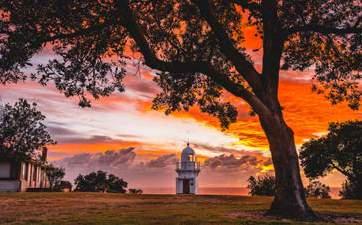
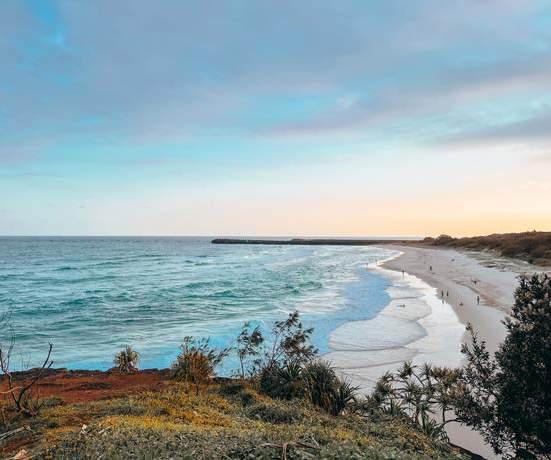
Summer 13°C to 29°C
Winter 0°C to 13°C
Average rainfall 615mm
Transport links

Affordability
Traditional custodians
The Ngunnawal people
Love the modern conveniences of the big city, but want less traffic and more affordability? Belconnen offers a busy lifestyle with room to breathe.
Why you might like it
If you love suburban living with its everyday conveniences, but still want to be connected to the hustle and bustle of a big city, Belconnen in Canberra’s northwest could be for you.
Catering to a range of lifestyles, the district has plenty of action, but also gives you room to breathe. Being only 7km from the Canberra CBD, the area is well-planned out with good roads, public transport and accessible amenities.
Canberra has a high standard of living at a generally lower cost than other Australian cities, so you can enjoy being close to the action in Belconnen without the major expense of a similar property in an inner suburb of Sydney or Melbourne.
Belconnen is known for its array of native plants and nature walks, which range from easy to intermediate, with many being under 5km. You can see some of the more popular bushwalks here. The National Bonsai and Penjing Association is also located 10 minutes away in Bruce and it boasts 75 trees on display at any one time.
Median dwelling price
• Capital lifestyle
• Canberra living
• Room to breathe
$829,607
Median weekly rent $658
Population 106,061
Distance to nearest major hospital Calvary Bruce Private Hospital is 4.8km away
Distance from nearest capital city Canberra, 7km


GIO Stadium is in neighbouring Bruce, where you can watch the Canberra Raiders and Brumbies play, as well as see motorsports and a range of big stadium concerts.
And there is plenty in the area to keep you busy, with the local Westfield having cinemas, shops and eateries – plus you’ll also find a library, swimming pools and dozens of cafes and restaurants lining picturesque Lake Ginninderra.
Lake Ginninderra is also a popular local spot for picnics and barbecues and the western section also has a sandy beach, swimming enclosure and boat launching ramp. Fishing in the ACT can hook you Murray cod, golden perch, brown trout, redfin and carp.
For golfers who like the 19th hole as much as the rest of them, The Burns Golf Club is a hub of activity and opportunities to meet people. With huge screens for live sport, a bistro open for lunch and dinner and a busy social calendar of activities, it’s open every day.
The Belconnen Senior Citizens’ Club is a group of lively over 50s who get together to have fun and learn new skills, including craft, stretch and balance classes, dancing, table tennis, line dancing, singing and indoor bowls. They pride themselves on their warm and welcoming atmosphere.
All of this is on your doorstep in Belconnen, but if you want more, you just have a venture out a few kilometres to the rest of Canberra, where you’ve got all the comforts and amenities of a big city. Some highlights include Lake Burley Griffin, Mount Stromlo Observatory and of course, Parliament House.
Canberra is also a cultural hub, with a rapidly growing arts scene. The Canberra Writers Festival brings authors, publishers and readers together every year and Enlighten Festival transforms the city with stunning illuminations, street performances and a dazzling hotair balloon event.
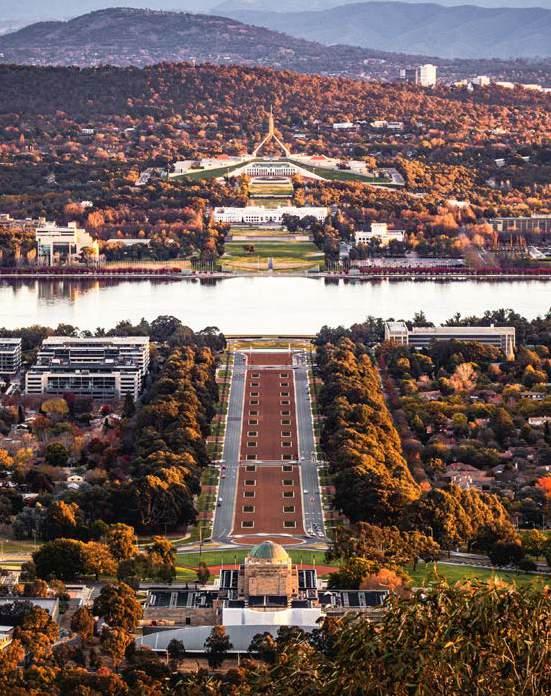
Summer
18°C to 31°C
Winter 6°C to 22°C
Average rainfall 1520mm
Transport links
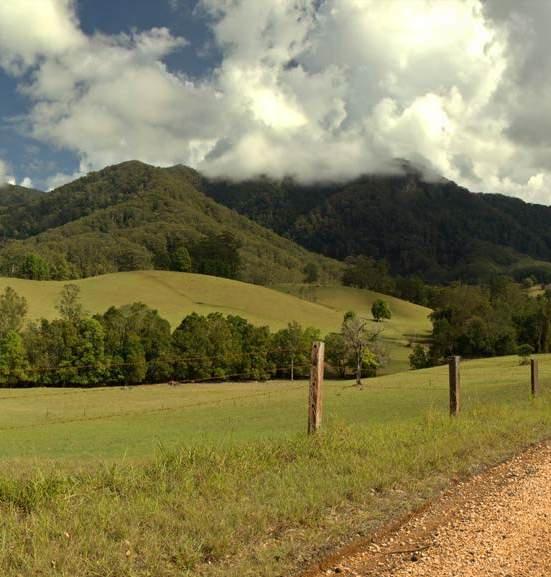
Affordability
Traditional custodians
The Gumbaynggirr people
Enjoy a rich arts and culture scene with plenty of foodie delights and natural wonders in Bellingen.
you might like it
Located on the Waterfall Way on the Bellinger River, Bellingen is a diverse arts community that brings together rich ecosystems, diverse wildlife, and plenty of food options.
Bellingen Shire Council is home to the Bellingen Readers and Writers Festival, an annual celebration that brings together world-renowned literary icons with like-minded attendees.
Being a smaller town, Bellingen also has the benefit of a strong, powerful community with regular opportunities to stay connected with events, markets and social activities.
Median dwelling price
Median weekly rent
• Rich in arts and culture
• Close to Coffs Harbour
• Lots of outdoor adventures
$824,005
$647
Population 13,278
Distance to nearest major hospital Coffs Harbour Health Campus is 25km away
Distance from nearest capital city Sydney, 547km

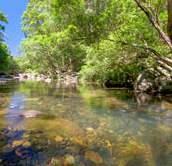
For movie lovers, The Dark Room is a vibrant boutique cinema that evolved from one of the last remaining video stores in Australia. The collection of films available include timeless classics, cult favourites and hidden gems.
The Bellinger Museum is run by volunteers of the Bellinger Valley Historical Society. The museum has a range of exhibits surrounding early First Nations Australians history, pioneer settlements and a collection of historical paintings, photos and objects from Bellinger Valley.
Adding to Bellingen’s vibrant art scene is the Nexus Community Art Gallery, which is also volunteer-run. There are two exhibition spaces that showcase new exhibitions every four weeks.
Bellingen is just a 15km drive from Urunga, home to The Art Space. This community gallery holds around a dozen exhibits a year and is also home to a gift shop containing locally made artisan items.
Food options in Bellingen range from pub grub in the Federal Hotel to Cedar Bar & Kitchen, a newer venue set in a charming 113 year-old church. Another recent addition is Za’atar, which serves Israeli-style dishes in an eat-in or takeaway setting.
Located half an hour from Bellingen is the Dorrigo National Park, which offers stunning scenery combined with cascading falls, boardwalks and bushwalks.
Bellingen Canoe Adventures offers stable canoes and kayaks with backrests for a comfortable, smooth ride along the Bellinger River. Each guided tour also offers a chance to learn, with lessons on First Nations’ significance and ceremonies that took place in the Bellingen region.
For fans of birdwatching, the Bellingen Birders are a welcoming group of birdwatchers that regularly meet to enjoy and appreciate local birdlife.
Being located near the coast, Bellingen is just a hop, skip and a jump away from some beautiful beaches, including North Beach at Mylestom and Hungry Head Beach at Urunga.
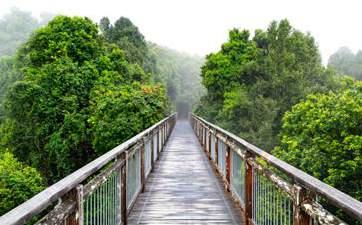

Sara Howard and her husband Jason, both in their 50s, have mastered the art of the gradual transition from their Sydney base to their dream coastal home in Scotts Head, NSW. Their two young adult sons are back in Sydney, looking after the family home while they pursue their sea change dreams.
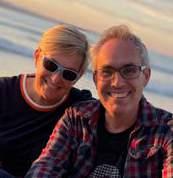
For years, Sara and Jason dreamed of having "the best of both worlds" – keeping a place in Sydney while establishing their own coastal retreat at the beach. The inspiration came from Jason's grandparents who, in the 1970s, had successfully split their time between Sydney's North Shore and the NSW Central Coast.
No empty nest required
These days, retirement isn’t so much Their approach offers a fresh solution to the modern dilemma of adult children who may be reluctant to leave home. Rather than waiting for an empty nest, they've flipped the concept – creating independence for their sons while pursuing their own dreams.
"We realised we're both business owners. We could actually bring that forward,” Sara explains. “We could run our businesses from our coastal place and come and go once we got the kids through school."
After spending a decade holidaying up and down the coast between Sydney and Brisbane, they discovered Scotts Head, a five-hour drive north of Sydney, during the Covid lockdown in 2020.
There’s no place like home– a new home, that is!
"Just immediately as we walked out on the verandah of this holiday house, we went, oh my God, this is the place," Sara recalls. The small village community, with its two cafés, supermarket and chemist, offered everything they wanted in a beach location.
They bought their four-bedroom home in July 2021 – a former Airbnb that came fully furnished, making the transition quick and easy. The property's practical advantages sealed the deal, says Sara: "It's 10 minutes off the freeway, 10 minutes drive to Woolworths… 45 minutes to an airport at Coffs Harbour, 45 minutes to a university, to a bigger hospital."
What Sara and Jason are doing now – living between their two homes and increasing their time in Scotts Head each year – is a recognised phenomenon in coastal communities.
"We talked to people in Scotts Head once we bought the house and they said, ‘Oh, you're transitioning’," she laughs. "It's quite a common thing. People will buy a holiday house and they'll come and go until gradually it gets to a point where, when it’s time to go back to Sydney, you don't want to get in the car and go home."
Sara says the transition has exceeded all expectations so far.
"I didn't know what it would be like to live in a small community and I didn’t have set expectations, but it's better than I imagined,” she says. “Plus, I'm probably at the right age now to appreciate the simpler pleasures of life more."
Making friends proved surprisingly easy through the beach, local café and community groups, with Jason making the effort early to get into local volunteering.

"We've met some really lovely people. So the friendship thing surprised me in a good way," says Sara.
As for the challenges, Sara says they’re manageable.
"Just the distance,” she says. “Five hours is a big drive, so if something happened to my dad or my kids and I wanted to be there immediately, that's a sacrifice."
There's also the trade-off of city conveniences. "There's no Uber Eats - the Bowlo is pretty much it if you want to walk to dinner. In fact, there’s no Uber... you are living a much simpler, pared-back life, but I like it that way,” she says.
Sara and Jason's approach offers a blueprint for others who might be ready to make a move, but still maintain
ties to their city life. Rather than selling the family home immediately, they're planning to wait until their sons are established and then eventually downsize to a Sydney unit, while maintaining their coastal base.
It’s an option that Sara acknowledges is not open to everyone, but for some it’s surprisingly doable.
"If you're in the fortunate situation that you bought a family home 10, 20 years ago, you could sell that, buy a small apartment and also afford to buy a place in your sea change or tree change community," she explains.
For Sara and Jason, Scotts Head is an intentional, conscious, connected way of living – with the security of maintaining ties to their previous life while embracing their dream future.
Summer
16°C to 32°C
Winter 5°C to 14°C
Average rainfall
475mm
Transport links
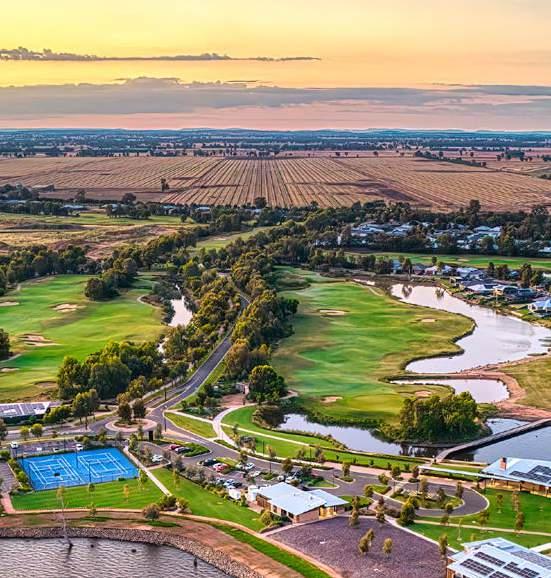
Affordability
Traditional custodians
The Wiradjuri people
Yearning for a simpler life, where the people are kind and the setting is wholesome? Berrigan offers true-blue country charm.
Why you might like it
If quiet country towns and a simple way of life sound like heaven to you, Berrigan could provide the retirement lifestyle of your dreams.
A traditional agricultural area, known for its vineyards, grain, fruit, potatoes and cattle farming, Berrigan has a 1950s charm that seems to have frozen in time.
Being a small town, it’s a quiet life here, but Melbourne is only a 3-hour drive south and major shopping centres are nearby – with Shepparton and AlburyWodonga each around an hour away.
The region is a golfer’s paradise, with some fantastic golf courses, including Wagga City Golf Club, Murray Downs Golf and Country Club, Corowa Golf Club and Yarrawonga Mulwala Golf Club Resort.
You’re also close to Rutherglen wineries, Corowa Whisky and Chocolate, a motor museum in Deniliquin and cod fishing on the Murray River.
Distance to nearest major hospital Berrigan Multipurpose Service is in Berrigan
Distance from nearest capital city Canberra, 633km

THIS AREA HAS A RICH FIRST NATIONS
HISTORY, WITH THE NAME OF THE TOWN COMING FROM THE LOCAL WIRADJURI WORD FOR ‘WEEPING EMU BUSH’
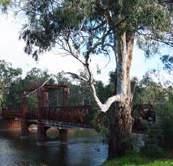
Warm and welcoming
Berrigan is a popular retirement choice because of the warm and welcoming nature of the locals. Not only do many choose to move here, it’s also claimed quite a few grey nomads who were passing through, fell in love with the country charm and decided to stay.
The Berrigan Community Golf and Bowling Club is a social hub that hosts regular events and casual dining, plus it also has a dam great for catching trout and other native fish.
Berrigan War Memorial Swimming Pool offers free entry, you can join the Berrigan District Race Club and the Berrigan Red Cross welcomes volunteers.
Since 1891 the town has come together for the annual Berrigan Show on the October long weekend. If you’ve ever experienced a proper country show, you’ll know the weekend is a highlight for a reason.
Berrigan has quite a few compact units and one-bedroom homes, which are a great choice if you’d like to keep things small. You’ll also find bigger homes in town and as you head out to more rural properties.
If you’re a walker, you’ll love the range of flat walking trails in the area and the sweeping fields of canola that carpet the land in yellow in the spring. The Berrigan Heritage Walk is a great way to get to know the town and settle in, taking you through 20 different locations, including the Heritage Museum.
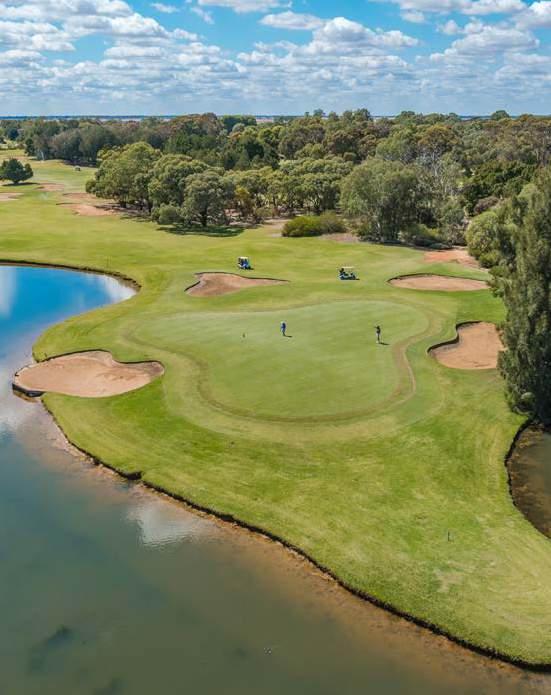
Summer
18°C to 28°C (summer min and max/ yearly rainfall)
Winter
6°C to 18°C (winter min and max/yearly rainfall)
Average rainfall
850mm
Transport links
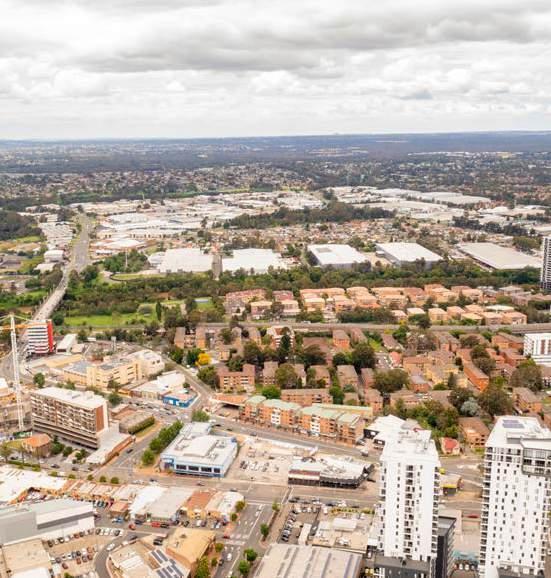
Affordability
Traditional custodians
The Cabrogal clan of the Darug Nation
If you want suburban living with close proximity to a major city, Casula offers a mix of convenient amenities, transportation options and a strong community feel.
Why you might like it
Casula’s location makes for easy access to major transportation routes, including the M5 and M7 motorways and a train station that directly connects to the Sydney CBD.
Casula is home to the Casula Powerhouse Arts Centre, a cultural facility with a schedule of exhibitions, performances, festivals, screenings and theatre shows. And for a taste of nature among urban life, Casula Parklands offers shaded picnic shelters and separate off-leash dog parks.
Median dwelling price
• Suburban living with city proximity
• Affordability
• Convenience and access to transport
$1,165,461
Median weekly rent $787
Population 16,584
Distance to nearest major hospital Liverpool Hospital, 4.3km
Distance from nearest capital city Sydney, 38km

Not only is Casula in close proximity to Sydney’s CBD, but it’s also only 4km away from Liverpool, a major city centre in South Western Sydney. Liverpool is home to Westfield Liverpool, a large shopping centre which includes a cinema and a range of restaurants.
Transport-wise, Liverpool has a train station and numerous bus routes that connect to surrounding suburbs in South West Sydney, as well as the Sydney CBD.
More locally, Casula Mall offers a range of specialty shops including grocery stores, pharmacies, restaurants and an Australia Post.
If you’re a foodie, you’ll love Casula’s rich array of international cuisines, including Italian, Lebanese, Turkish and Thai.
Located in the heart of the Casula Powerhouse Arts Centre is Bellbird Dining + Bar, which also features an extensive wine range designed to pair perfectly with your meal. Other top picks are Sahara Cafe & Grill for Turkish food, or Crossroads Hotel for a hearty pub meal.
With full kitchen facilities and an outdoor electric barbecue and play area, Casula Community Centre is a popular site for family functions and community events, such as workshops and performing arts classes.
Just next door is Casula Library, which also hosts a busy calendar of events such as a knitting group, workshops on computer and technology basics and history talks.
To help you stay active, the Liverpool Seniors Walking Group is hosted by the Heart Foundation and meets each Monday at 9:30am.
For a slice of history, the Liverpool Regional Museum is designed to preserve and promote the region’s cultural heritage through collections, exhibitions and public programs. With free entry, there is both a permanent exhibit and changing exhibits that are designed to engage and inspire the community. Guided tours are also available and if you’re keen you might like to volunteer to show others around.
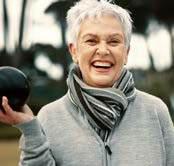

Summer 14°C to 26°C
Winter 4°C to 14°C
Average rainfall 1054mm
Transport links
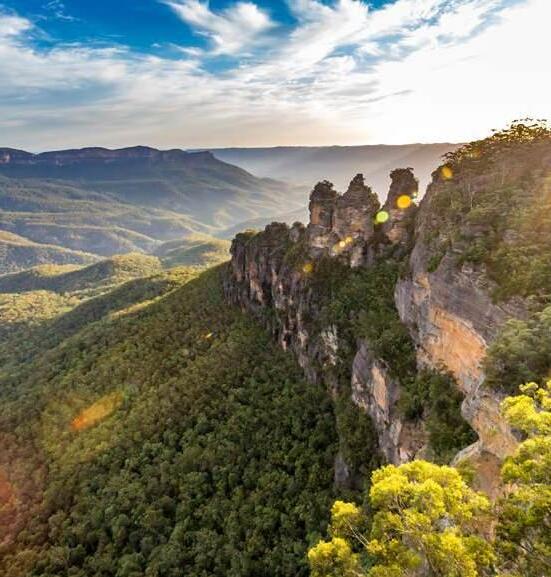
Affordability
Traditional custodians
The Dharug and Gundungurra Peoples
If scenic mountain views and peaceful bushland are what you’re after, but you don’t want to sacrifice big-city amenities, Katoomba is the best of both worlds.
Why you might like it
Katoomba puts you at the centre of the iconic Blue Mountains just a 90-minute drive to Sydney and on the city train line. You’re in the hub of the Blue Mountains, with plenty of supermarkets, shops and places to eat.
Many move to the Blue Mountains for the natural beauty, peace and calm energy. It’s a magical place full of lookouts, waterfalls, historical walking tracks, First Nations culture and history and historic architecture.
Summer can be warm and dry, like many places in Australia, but in autumn, the place comes alive with a kaleidoscope of colour as the leaves change from green to red, amber, yellow and earthy brown. If you’re lucky, you might see snow during the chilly winter (especially in nearby Blackheath). Then, in spring, the land comes alive again with a sea of boronia, wattle and waratahs in bloom.
Median dwelling price
• Fresh mountain air
• Vibrant arts scene
• Train links to Sydney
$843,875
Median weekly rent $626
Population 8,268
Distance to nearest major hospital Blue Mountains District ANZAC Memorial Hospital is 1.7km away
Distance from nearest capital city Sydney, 100km
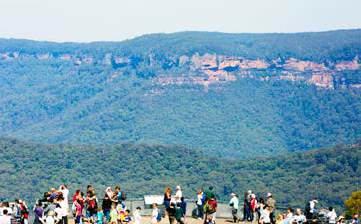
IS 800 STEPS DOWN TO THE
BELOW (JUST REMEMBER THAT YOU ALSO HAVE TO WALK BACK UP!)
Bush retreat-style homes are the go here, tucked between headlands of bush and often surrounded by scenic views of the Blue Mountains. A few traditional wooden cottages remain, some with expansive views over the valley.
Tourists come to Katoomba for the iconic views of the Three Sisters mountain formation from Echo Point and to ride the scenic cableway at Scenic World, but many long-term residents say they can never get enough of the scenery, no matter how long they’ve lived here.
Live music fans will love the annual Blue Mountains Blues Festival, gigs at The Bootlegger Bar and The Baroque Room at the Carrington Hotel (the hotel’s historic Grand Dining Room is also a must-visit).
For yoga lovers, Mid Mountains Chair Yoga is a gentle class, but there are lots of yoga schools in the area. If the gym is more your style, there are plenty of gyms and fitness classes to suit every kind of workout.
For green thumbs, the Blue Mountains Organic Community Garden hosts a weekly gardening event where you can help maintain the land, create art, plant seeds and even pick fruit and vegetables to take home.
Up the road, the Katoomba Men’s Shed is a local community of mateship and wellbeing, where local men can connect, use the facilities to work on carpentry projects and participate in groups, such as computer club and the model railway group.
Katoomba also has a Probus Club, an RSL that hosts plenty of shows by touring musicians, comedians and performers and a rural fire brigade that is entirely staffed by dedicated volunteers.
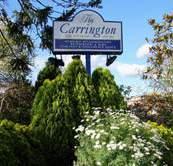
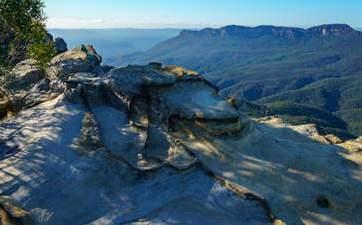

Summer 9°C to 23°C
Winter 3°C to 14°C
Average rainfall
665mm
Transport links

Affordability
Traditional custodians
The Wiradjuri People
With everything you need for the tree-change of your dreams, Orange is welcoming to newcomers and it has a thriving food and wine scene. What are you waiting for?
Why you might like it
Located in the heart of New South Wales, Orange is a tree-change retirement dream. It’s so open to newcomers that the local council runs welcome events for new residents several times a year.
The affordability is one of the town’s most attractive features, with Californian bungalows in the city, or rural properties with country views and room for a horse – all for about half what you’d expect to pay in Sydney.
Elegant streetscapes, beautiful parks and the small community vibe will make Orange feel like home in no time. It’s an area of four distinct seasons, with mild summers and cool winters.
Orange was a site of the Gold Rush era, which brought infrastructure to the area and made it an important business centre. The beautiful parks and gardens that are enjoyed in the city today were developed during that era.
• Regional hotspot
• Good hospital and lifestyle
• Historic homes and acreage
Distance to nearest major hospital Orange Health Service is in Orange
Distance from nearest capital city Sydney, 255km
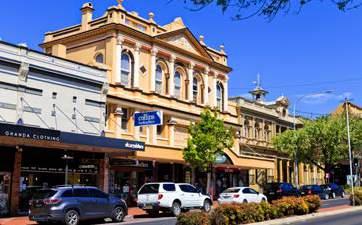
The region’s quality wine and produce features heavily in its bustling cafe and restaurant culture and several events are held to celebrate this vibrant foodie scene.
The Food of Orange District (FOOD) Week is an annual highlight and the fortnightly Orange Regional Farmers Market is a great place to find fresh, locally sourced produce.
Orange is part of Wiradjuri land –which was the largest First Nations territory at the time of European settlement, covering the Central West slopes and plains. Today around 6.2% of the population identify as Aboriginal or Torres Strait Islander.
Orange Health Service is one of the largest regional hospitals in NSW, so most of your healthcare needs can be taken care of locally, now and into the future.
If you want to get social, the Ionian Club is a women’s friendship group that welcomes newcomers to the area and the Senior Citizens Association is a great network that hosts a community lunch almost every week day.
The Seniors Village Hub is another place for over 55s to take part in inclusive activities, maintain health and wellbeing, socialise with like-minded people or simply enjoy a cuppa and a chat with friends. Some of their activities include tai chi, art group, chair yoga, craft and Scrabble.
You’ll also find every kind of interest group, like the Orange Art Society, Male Voice Choir, Orange Social Dance Group and more.

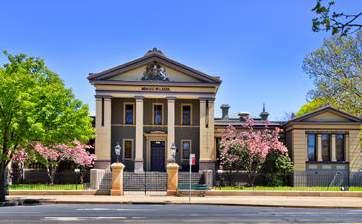
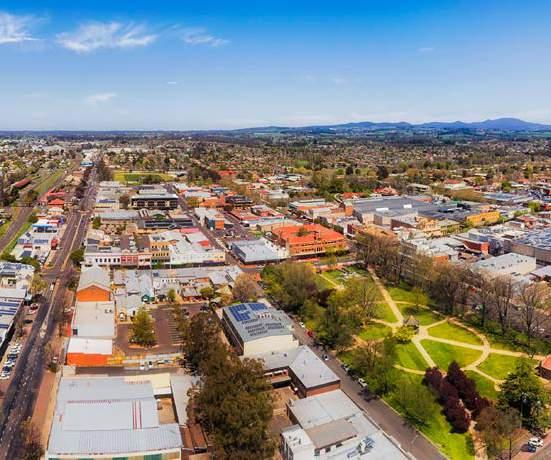
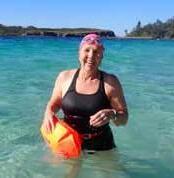
Seana Smith, 60, and her husband Paul, 59, have been making some strategic retirement moves – from early retirement in Orange, to their dream coastal life in Jervis Bay, NSW, proving that sometimes the best retirement plans evolve over time.
At 60, Seana Smith knew it was time to stop putting everyone else first. After Paul retired young, they initially moved to Orange with their twins, who were in high school, leaving their two older adult sons in Sydney.
These days, retirement isn’t so much While they loved the slower pace and the regional living in Orange, they missed being near the ocean. When the twins finished school and headed off to university, Seana and Paul decided it was time to make their next bold move.
"I turned 60 and I just thought, you don't know how long you've got in life," Seana explains. "My mum died at 79 and she had dementia by the time she was 75. The kids were leaving
home anyway, and so we decided we were going to go and do what is best for us, really, after putting children at the front of all our decisions for many, many years."
Their dream destination was Jervis Bay, three hours south of Sydney –a place that felt like home because they'd been visiting for family holidays for decades.
"We had always thought that we'd end up in Jervis Bay, so we had this long, long-term plan to end up there,” Seana explains. “We thought it would be years down the track, but then we accelerated it when the kids left."
Holiday destination turned new home
Seana says the familiarity factor was crucial for their successful transition. "Coming to somewhere that was really familiar to us was important for us,” she says. “Having moved once, we didn't want to move again.
"Moving somewhere where you've been on your holidays – I still feel as if I'm on my holidays and we're living here now."
Seana and Paul made the move in January 2025, buying a house big enough to accommodate visiting children and friends. The strategy has paid off beautifully – with their home often full of visitors.
Seana likes to get up early to swim in the bay and watch the sunrise and says she still buzzes with the thought, "I can't believe I live here!”
Change of pace was a welcome change
The change of pace from city living has also been a welcome one for the couple.
"I didn't know what it would be like to live in a small community and I didn't have set expectations, but it's better than I imagined," Seana says. "Plus, I'm probably at the right age now to appreciate the simpler pleasures of life more."
Community building has happened naturally for Seana through her passion for ocean swimming. She joined the local winter swimming group and found a welcoming, active community.
"Most people are retired and that whole question of 'what do you do' has gone. It's like now people are thinking ‘who are you’, rather than ‘what do you do’, because work has become quite immaterial."
Paul, meanwhile, is embracing lifelong learning, studying creative writing after previous courses in editing and publishing and even Wiradjuri language

when they lived in Orange. He'll often walk their poodle for two hours along the beach.
"The poor dog!" Seana laughs.
Seana says any challenges have been practical but minimal. "Just finding the sort of advice that I need," she says, “like finding a trusted mechanic or garden help for our tropical garden – I’m not used to looking after palm trees! It's just all that comfort-zone stuff."
But the benefits far outweigh any settling-in difficulties for Seana and Paul. Both originally from rural Scotland, coastal village life feels natural rather than isolating and they believe the lifestyle is doing wonders for their health.
"Paul sometimes says, because we get up and we walk the dog on the beach and I'm going swimming, that just the lifestyle here is going to give us another decade," says Seana.
Rather than feeling disconnected from friends she’s left behind, Seana finds the relationships have deepened. "I think that rather than having to feel as if I need to make new friends, I'm really loving having friends to stay for the weekend,” she says. “That has been a great joy actually, because you're able to spend more time together when people come to stay with you."
For others thinking about a move, Seana advises thinking carefully about timing and familiarity. "We could have moved down here when the kids were younger," Seana reflects, but she says she's grateful they waited until they could prioritise their own happiness without compromise.
For Seana and Paul, Jervis Bay is the perfect result of years of thoughtful planning – a place where swimming at sunrise, long beach walks and the simple pleasure of living somewhere beautiful are now their everyday reality.
Summer 18°C to 27°C
Winter 6°C to 18°C
Average rainfall 1163mm
Transport links
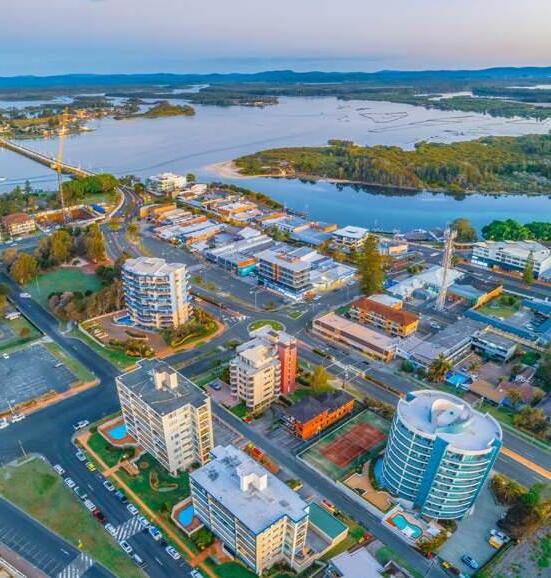
Affordability
Traditional custodians
The Biripi People
Spectacular coastal living near big postcard-worthy beaches and spectacular lakes on the Mid-North Coast. If you want to be a part of a thriving, active community, beautiful Tuncurry is beckoning.
Why you might like it
It’s hard to talk about Tuncurry without mentioning the entire Forster-Tuncurry area.
The twin towns of Forster-Tuncurry are a holiday-style area with plenty of accommodation, great seafood (they claim to have the best Sydney rock oysters you’ll get anywhere), abundant cafes, good fishing, surfing and swimming areas and a relaxed lifestyle with plenty to do.
Nearby Booti Booti National Park is popular for birdwatching and bushwalking – the endangered Little Tern breeds on two of Wallis Lake's many islands.
Median dwelling price
Median weekly rent
• Twin town living
• Beaches, lakes and more
• Water lovers’ paradise
$695,788
Distance to nearest major hospital Manning Base Hospital, Taree is 32km away
Distance from nearest capital city Sydney, 300km

THEY’RE ‘TWIN TOWNS’ BUT WE THINK TUNCURRY HAS THE EDGE ON FORSTER – VISIT BUSY FORSTER FOR ALL ITS AMENITIES
As with many coastal holiday towns, there are plenty of units available to rent or buy in Tuncurry, many built on big blocks with a lawn and only a stone’s throw to the water.
The leisure options are plentiful. Tuncurry Rock Pool is a popular swimming spot in clear, protected waters and the nearby walkway is great for an afternoon stroll.
The Coominya Pub – also known as the Bellevue Hotel – is a local favourite with a well-run bistro serving classic pub grub. Seafood lovers can visit one of the many oyster farms and eat super-fresh seafood by the sea. Try Colin Wren Oysters or nearby Blue Coast Oyster Co.
The Forster-Tuncurry region is also home to some of the best fishing on the Mid-North Coast. This local guide provides advice on the best sites, times and baits you’ll need. And only a 17-minute drive from Tuncurry is Black Head Headland, a shallow reef perfect for a day of fishing.
If you’re looking to stay fit and active, Forster Tuncurry Rehabilitation and Gym offers a range of options, such as reformer pilates and strength training.
The Great Lakes Women’s Shed is a community group of local ForsterTuncurry women, where you can gather for fun activities, hear from guest speakers and learn new skills. Group classes at the Shed include painting, mosaic art, carpentry and jewellery making.
Linked Community Services arranges regular outings for locals. Trips vary, with recent ones being coffee catchups, lunch and breweries and attending musicals. A great way to meet people and get involved with your local community.
You might also want to join Sporties Tuncurry and the Tuncurry Beach Bowling Club hosts bowls tournaments and live sport coverage, as well as live music and bistro dining.


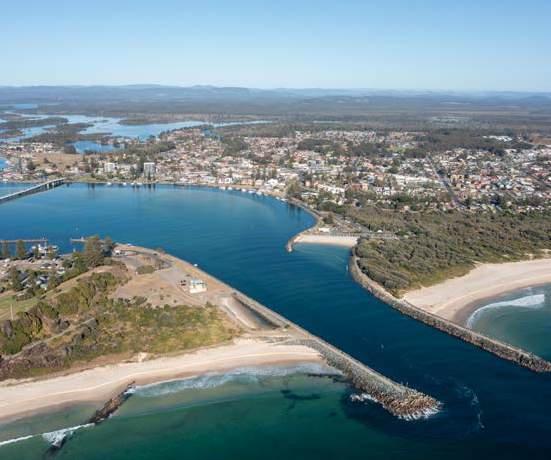
Summer 16°C to 32°C
Winter 3°C to 12°C
Average rainfall
600mm
Transport links

Affordability
Traditional custodians
The Wiradjuri people
Wagga Wagga is the largest inland city in New South Wales. With its historic architecture and beautiful natural surroundings, this vibrant city sits on the banks of the Murrumbidgee River.
Why you might like it
Wagga Wagga is the perfect base to explore art galleries, peaceful riverbank walks and a delicious food and wine scene, with a rich sense of heritage everywhere you turn.
The suburb offers a blend of affordability, community and plenty of access to amenities, with a relaxed lifestyle at its core. Compared to major metropolitan areas, the cost of living in Wagga Wagga is much lower, yet not lacking in access to healthcare and social activities.
There’s no shortage of outdoor experiences either. Lake Albert is located in the heart of Wagga Wagga, with a 5.5-kilometre walking track and opportunities for boating and fishing.
Located nearby is the Wiradjuri Trail, a 42-kilometre loop around the entirety of Wagga Wagga. It can be broken up into parts and is a great way to explore all the different river banks and hilltops that make up the city.
For a relaxing day out, the Wagga Wagga Botanic Gardens is set over 22 acres and holds various garden areas which showcase camellias, cacti, succulents and more. There’s also a free mini zoo and rainforest section on site.
Median dwelling price
Median weekly rent
• Wide, leafy streets
• Thriving food and wine scene
• Healthy dose of culture
$573,219
Distance to nearest major hospital Wagga Wagga Base Hospital is 2km away
Distance from nearest capital city Canberra, 200km
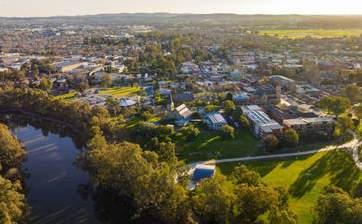
There are lots of food options in Wagga Wagga, whether you’re looking for a hearty breakfast or a great wine pairing with dinner.
The Fitzmaurice Cafe offers all-day breakfast with highly rated coffee and shakes and also has vegan and gluten-free options to suit all diets. For something more hearty, Thaigga combines traditional Thai dishes with modern twists on old favourites. The open kitchen style means that you can watch your meal being prepared in a relaxed dining atmosphere.
There are nearly 30 wineries in the region, including Borambola Wines – a family-owned business that produces 100% estate-grown wines from the Gundagai region and offers cellar door tastings. For beer lovers, Thirsty Crow brewery is a local favourite, offering tasty brews and tasty meats at Big Jimmy’s BBQ Smokehouse.
For produce lovers, you can pluck strawberries straight from the plant at Bidgee Strawberries and Cream, or you can also sample locally-grown olives at Wollundry Grove Olives for more of a savoury touch.
The Wagga Wagga Art Gallery is home to an incredible collection of glass, including fragile objects, jewellery, chandeliers and vases. Similarly, Ashculme Textiles displays a collection of homegrown alpaca and merino wares, blending hand craftsmanship with ancient techniques.
The Museum of the Riverina tells the stories of the people and events that helped shape Wagga Wagga and
the Riverina region, with over 15,000 objects, photographs, textiles and paper-based materials. On site at the museum is the Botanic Gardens site, which showcases Wiradyuri stories, sporting legends, life on the Murrumbidgee River and more.
There are also regular live performances hosted by the Wagga Wagga Civic Theatre, located on the beautiful foreshore of Wollundry Lagoon.




Summer 18°C to 28°C
Winter 8°C to 18°C
Average rainfall
1100mm
Transport links
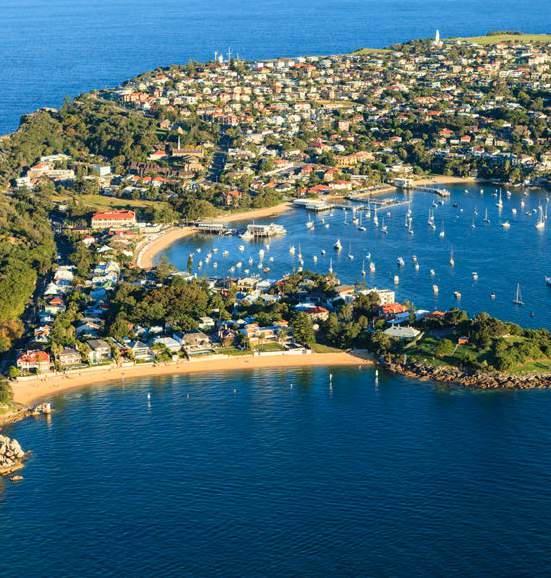
Affordability
Traditional custodians
The Birrabirragal people and the Cadigal people
Watsons Bay offers luxe Sydney living in one of the most in-demand suburbs in the country.
For the ultimate in luxe coastal living while also enjoying all that the big city has to offer, you can’t go past Watsons Bay. Located at the southern head of Sydney Harbour, this picturesque suburb offers stunning views, historic landmarks and a peaceful yet vibrant community.
People come from all over to experience Watsons Bay’s beautiful waterfront, including iconic beaches like Camp Cove and the enclosed harbour pool and sunbathing pontoons at Watsons Bay Baths. Morning swims and sunset walks along the cliffs of The Gap provide breathtaking views of the Pacific Ocean and the Sydney skyline.
Some of Sydney’s finest seafood restaurants are all in your neighbourhood. Doyle’s on the Beach is a local institution, offering fresh seafood with spectacular harbour views. For a more casual dining experience, the Watsons Bay Boutique Hotel provides a perfect spot for a leisurely meal or drinks by the water.
Median dwelling price
• Luxury living
• Panoramic harbour views
• Iconic dining options
$4,933,295*
Median weekly rent $1492*
Population 883
Distance to nearest major hospital
St Vincent’s Hospital is 10km away
Distance from nearest capital city Sydney, 10km
*Due to the small number of properties, values include Watsons Bay as well as surrounding suburbs Rose Bay and Vaucluse
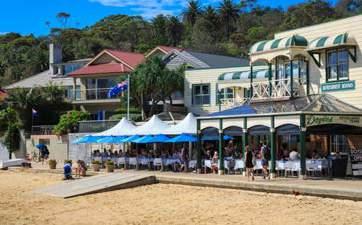

The community in Watsons Bay is small, but as part of the Woollahra Municipal Council area, which has a high proportion of residents aged 65+, there are plenty of activities and communities to join.
The Watsons Bay Library offers various programs and workshops and the Festival of Fun New Experiences runs each year, encouraging locals to try something new. Visit the council website for a list of regular activities and groups operating in the area.
If you love the outdoors, you’ll find plenty to do in Watsons Bay. The South Head Heritage Trail offers a scenic walk through historic sites and natural beauty, including the iconic Hornby Lighthouse. Sailing, fishing and kayaking are popular activities around this protected bay, with easy access to the harbour’s calm waters.
Healthcare in Watsons Bay is excellent, with nearby medical facilities in Vaucluse and Rose Bay providing comprehensive services. For more specialised care, the world-class hospitals and medical centres in Sydney are just a short drive away, ensuring residents have access to topnotch medical care.
Public transit in the area is also a stand out, making life easy for those without a car. Comfortably access the heart of Sydney from the Watson’s Bay Ferry Wharf or the bus services that run frequently. The area is very walkable and great for retirees who prefer car-free living.
While life on the water comes at a gold-plated price, the community has a safe, tight-knit feel and everyday conveniences are never far away. Cafes, pharmacies and grocery options are just around the corner and the neighbouring suburbs like Vaucluse and Rose Bay add to the local offerings as well.
Watsons Bay appeals to retirees seeking an active yet relaxed lifestyle, with a strong emphasis on wellbeing. Locals can take part in low-impact activities like tai chi in the park, coastal yoga sessions, or simply enjoy a daily stroll along the foreshore. The fresh sea air, quiet streets and abundance of green space contribute to a healthy, stress-free environment.
Whether you're meeting friends for coffee, joining a community class, or just soaking in the views, life here moves at a gentle pace, perfect for those looking to savour their retirement.

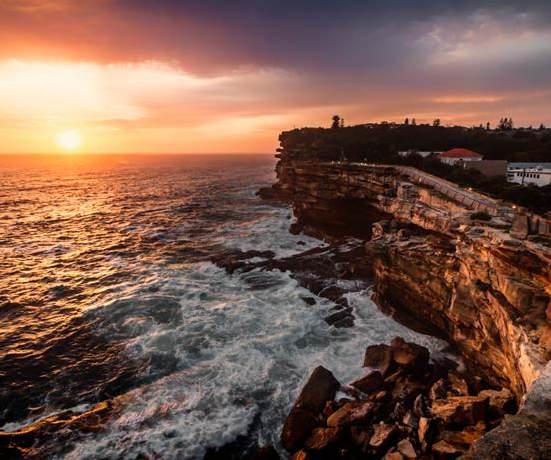

Michelle, 51, and her husband Alex, 54, have discovered that sometimes the best life changes happen when you listen to your kids. Their move from Sydney's north shore to Shell Cove, near Kiama NSW, has given them the beachside lifestyle they dreamed of – plus a few unexpected bonuses along the way.
Michelle and her husband started to feel trapped by Sydney’s relentless pace after 10 years living on the North Shore. "We were both feeling like it was just a little bit of a rat race,” Michelle explains. “We were just chasing our tails. There was always so much on the go and we were both a little bit overwhelmed by everything."
The couple, who had immigrated from South Africa, had always planned to move to the coast once their kids finished school. They'd been regular visitors to Gerringong on weekends, dreaming of a slower pace and easier access to the beach.
Then Covid changed everything.
"When Covid hit, we suddenly realised we're never going to be going into the office five days a week anymore," says Michelle. "Our kids overheard us talking one night and said, 'Well, why are you waiting for us to finish? We're quite happy to change schools.'"
So, Michelle and her husband accelerated their timeline. They moved to Shell Cove, just outside Kiama on the south coast, while the kids were in Years 8 and 10.
The location proved perfect for their lifestyle and practical needs. Michelle still works in Sydney twice a week, catching a direct train from Shellharbour to Redfern. "It used to take me an hour from St Ives to get to the office (26km away) and now it's an hour and 45, and I'm 100 kilometres away," she says. "When you're close to the office, you think it should be quick and you get frustrated. Now I can get on the train and do work, read or watch a movie."
They chose Shell Cove partly for its proximity to good schools in Wollongong, but also because they recognised its investment potential. "When we moved there, the marina was empty. They hadn't even filled it with water. Now it's all completed and we've already seen the property prices go up a lot."
The lifestyle benefits were immediate. Gone were the daily drives to reach Sydney’s beaches – now they're five minutes from the water. "We go for walks after dinner every night because we've got the marina just down the road. We didn't do that when we were in Sydney," Michelle says. "The kids have enjoyed the change in lifestyle too. And the ones that have benefited the most are our dogs, because they go to the beach every single day."
Michelle says building a community took more effort than when they'd arrived in Sydney because the children were older. "When we first got to Sydney, our kids were three and five. It was so easy to make friends through school," Michelle recalls. But with older kids and Covid restrictions, she had to be more proactive.
Building community on the green
With her husband away for work regularly, Michelle decided to seek out a way to meet new people to avoid feeling isolated. Her solution? Golf lessons. "I decided to take up golf. I thought, well, that's one good way of meeting people," she says. "A lot of our friends now are all from the golfing community."
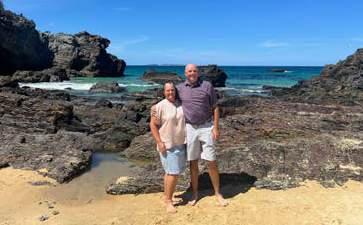
The move has delivered unexpected benefits beyond the lifestyle change too – including the cost of living in a smaller town. Services like Pilates cost a fraction of Sydney prices and healthcare is more accessible. "You can get appointments a whole lot quicker. When we were in Sydney, you'd go to the same practice and get a different doctor each time,” says Michelle. Here, because it's a smaller community, the doctor knows you."
After almost five years living in Shell Cove, Michelle feels settled. "I'm starting to bump into people that I know. You always know you're fitting in when you go to the supermarket and have someone to talk to," she laughs. "Now I'm starting to think, 'Oh, I better not wear my Uggs to the shops. I might know someone!'"
But the couple aren't done moving yet, with Shell Cove giving them a taste for an even quieter life. "This is getting too busy for us. We'll probably move even further down south in another 10 years," Michelle says. "Maybe a little sleepy hollow somewhere."
With both kids now finished school –one at university in Sydney, the other on a gap year in Europe – Michelle is adjusting to her empty nest life. "As much as you want the peace and quiet, suddenly when you've got it, it's not great," she admits. "You miss the noise and everything around you."
Michelle’s advice? “Go for it!”
Her advice for others considering a similar move? "Go for it. You won't regret it. But go in with the right attitude. It's going to be difficult at first and it does take time to settle in, but the benefits you have after the initial hard bits far outweigh it."
Summer 21°C to 28°C
Winter 10°C to 21°C
Average rainfall 1196mm
Transport links

Affordability
Traditional custodians
The Yaegl people
Yamba is a beachside town surrounded by beautiful beaches and marine animals like dolphins, sea turtles and migrating whales.
Why you might like it
Located at the mouth of the Clarence River on the North Coast of NSW is Yamba, a coastal town rich in national parks, wilderness reserves and wildlife. Its warm, pleasant temperature makes for a comfortable weather experience year-round and there are multiple fishing communities situated in Yamba to enjoy the great outdoors.
Yamba Fishing and Charters are the town’s premier deep sea fishing providers, supporting in adventures and sightseeing needs. There’s either full or half day charter bookings available to suit your preferences. For those who prefer going solo, fishing from the Clarence River banks is easily accessible and rife with fellow fishers.
There are also volunteer opportunities with Clarence Valley Council, including supporting local libraries, administration support and helping run Council events.
Median dwelling price
Median
• Coastal living
• Mild, comfortable climate
• A balance of recreation and relaxation
$902,566
Distance to nearest major hospital Yamba District Hospital is in Yamba
Distance from nearest capital city Brisbane, 230km

The active Yamba Community Facebook group is a great way to connect with fellow residents. Members can share resources and discuss community-related topics in a safe and quick way.
Yamba Seniors Inc is another community group that meets on the first Friday of the month from 9:30am at Yamba Bowling Club. There are also regular excursions organised within the group throughout the year, including day trips, bushwalks and fishing adventures.
The Yamba Farmers’ and Producers Market is held every Wednesday all year round. There are plenty of stalls, including gate-to-plate produce, baked goods and crafts. Special treats include house-made fairy floss, doughnuts and Portuguese tarts.
The Yamba River Markets are held on the fourth Sunday of every month, located at Ford Park on the foreshore of Clarence River. Around 90 stalls are held each month, supplying local handmade products and organically grown goods.
Being a beachside town, Yamba is wellequipped with vast, beautiful beaches. Yamba Main Beach and Ocean Pool is located in the heart of Yamba and also includes a cafe, picnic area and public toilets.
Overlooking Main Beach is Pacific Hotel, with the Pacific Bistro, a renowned restaurant with a simple yet delicious menu. The hotel also hosts live music shows each week, catering to a range of musical tastes.
Another great option is Yamba Golf and Country Club, which offers golf and dining. You can even try your hand at virtual golf.
Located at the mouth of the Clarence River is the Yamba Breakwall, which is perfect for a leisurely coastal walk or an afternoon of fishing. And you can always venture out for a day trip to other local towns like Angourie, Iluka and Grafton, a historic town that’s home to the annual Grafton Jacaranda Festival, the oldest floral celebration in the country.


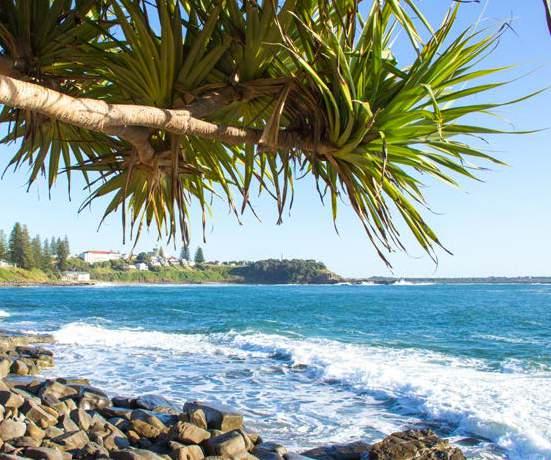
Summer 14°C to 28°C
Winter 1°C to 11°C
Average rainfall 692mm
Transport links
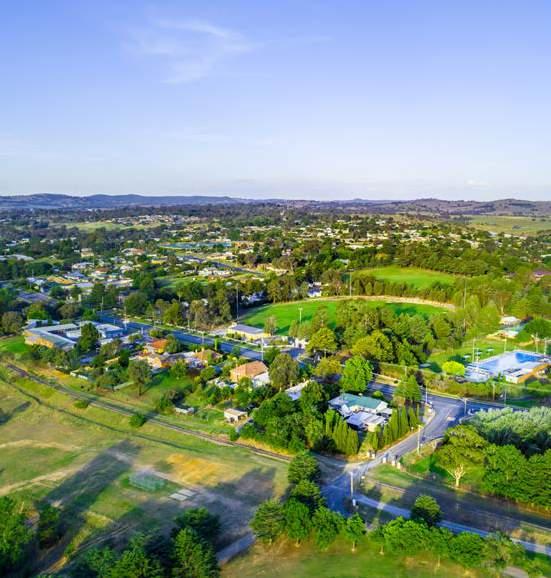
Affordability
Traditional custodians
The Ngunnawal people
Set in the Yass Valley, less than an hour from Canberra, the recurring theme of Yass is its welcoming nature and relaxed lifestyle. Could Yass be the friendliest town in Australia?
Why you might like it
Looking for the best of both worlds?
Yass is a modern, growing community with wide open spaces and clean air, all a hop, skip and a jump from our nation’s busy capital.
Being less than an hour from Canberra means you don’t have to give up access to the conveniences of a big city, but the Yass Valley truly feels like a world away. Think rolling hills, lush vineyards and tranquil countryside. Whether you want to run, walk, cycle, or drive, Yass has the kind of scenery that instantly unwinds you.
Yass also has a bustling town centre filled with boutique businesses and many larger chain stores. There’s a range of housing options to pick from, including apartments, country cottages and large homes, all much more affordable than similar city dwellings.
• Easy city access
• Friendly locals
• Wineries and walks
Distance to nearest major hospital Yass District Hospital is in Yass
Distance from nearest capital city Canberra, 53km

There is a flourishing wine industry around Yass, with a number of old and new wineries dotting the pictureperfect landscape. These cool-climate vineyards produce exceptional wines, attracting wine lovers from far and wide – but lucky you: you get to live here.
Yass is known for welcoming newcomers, with a warmth that will make it easy to integrate into the fabric of the town. And no matter what you’re into, there are plenty of events and activities to get involved in and meet your new neighbours.
It all comes together at venues like Yazzbar, a wine and jazz club that is always hopping. The annual music and arts festival Alive in the Park is also not to be missed.
The Visual Arts Society of Yass holds regular events at the local community centre, including clay workshops and lampshade making.
Right in the heart of town, The Liberty Theatre (a restored Art Deco building from 1939) offers culture and arts to the neighbourhood through cinema, theatre and live performances.
The town does well catering for music lovers, with the Yass Music Club putting on regular concerts at the Yass Memorial Hall.
The Yass Soldiers Club is a great place to socialise and get a meal seven days a week, with regular trivia, poker and bingo nights. The Yass Bowling Club is the place for social and competition bowls and the adjoining Steve’s Terracotta Restaurant is a local favourite that makes excellent steak and bistro meals.
The annual Yass Show, held every March, brings the community together through a range of exhibits, farm stock competitions, show rides and events in true country style.

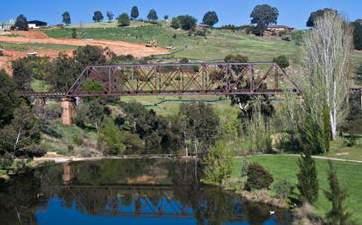

There’s a reason so many retirees choose Queensland. With warmer weather, affordable property and a coastal lifestyle, the state ticks a lot of boxes.
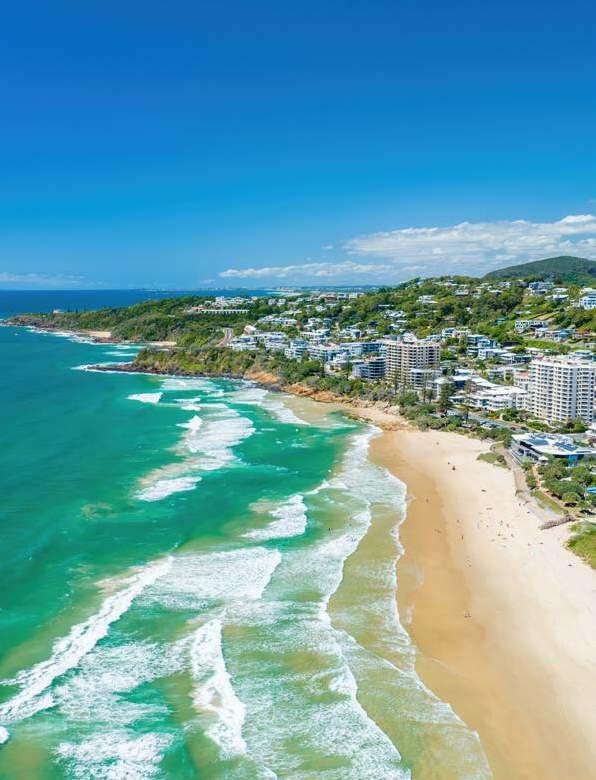
Summer 23°C to 28°C
Winter 14°C to 22°C
Average rainfall
1100mm
Transport links
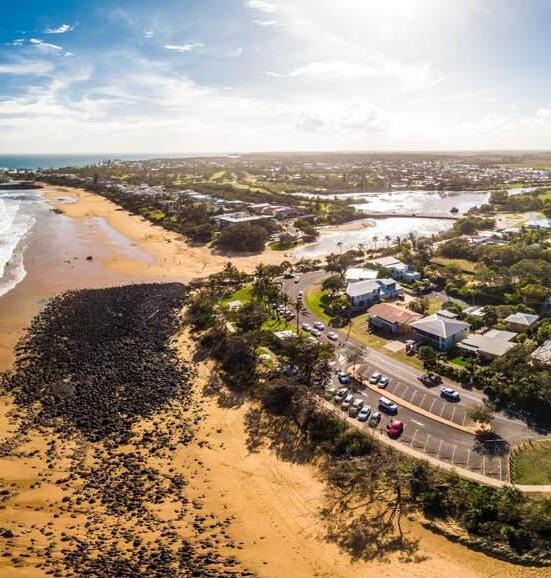
Affordability
Traditional custodians
The Taribelang people
Located at the Southern Great Barrier Reef, Bargara enjoys a pleasant, warm climate year round, with palm trees lining the foreshore.
Bargara offers an idyllic lifestyle with plenty of picturesque beaches. Dining on local produce is easy with oceanfront dining, local gelati, butchers, bakeries, and fish and chip shops.
The town is also only 14km from Bundaberg, with access to healthcare, recreational facilities and three hospitals.
Less bustling than surrounding towns, Bargara is a great place to enjoy a peaceful lifestyle without missing out on the beauty that the Great Barrier Reef has to offer.
Median dwelling price
• Proximity to the Great Barrier Reef
• Plenty of swimming spots and beaches
• Tropical paradise
$811,109
Median weekly rent $644
Population 10,772
Distance to nearest major hospital Bundaberg Hospital is 15km away
Distance from nearest capital city Brisbane, 326km

In the heart of the town is Bargara Beach, with warm temperatures comparable to that of Hawaii. It’s backed by a beachfront road, with access via both car and foot. There’s also access to winding beach walks, eateries and cafes. If you’re lucky, you might even spot a turtle or two coming to shore to nest in the summer months.
Nielsen Beach is a local beauty that’s regularly patrolled, as it’s home to the Bundaberg Surf Life Saving Club. It’s located near Nielsen Park, which has plenty of picnic tables and barbeques available for public use.
Also located nearby is The Esplanade, a scenic coastal pathway that’s perfect for walking or cycling. Aside from the views, you’ll also find plenty of restaurants and cafes.
The Basin is a safe and secure saltwater swimming spot that’s built from volcanic rock. It’s protected from waves by the rock enclosure, with gradually increasing depth and calm waters.
For local shops, Bargara Central has a Woolworths, ALDI, McDonald’s and a petrol station, along with over 20 specialty stores and services.
The award-winning Windmill Cafe Bargara is open seven days a week and serves coffee, all-day breakfast, lunch, weekend pizza and roasts. There are also vegetarian, vegan and gluten-free options available.
One of Bargara’s longest running restaurants, Kelly’s Bar and Restaurant, is family-run and sources quality produce for their in-house dining menu. The restaurant is also open for coffee and cake all day.
Dubbed ‘the local little secret’ is Bargara Lakes Tavern, an airconditioned bistro with an a la carte restaurant menu and a courtesy shuttle on set days of the week. It also hosts various events during the week, including a weekly trivia night on Mondays.
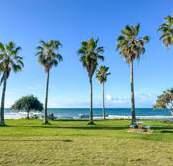
The Bargara Over Fifties Club meets every Monday from 12:30pm until 4pm. There are also regular activities planned like bus trips, dinner outings, indoor bowls and card games.
Locally, the Visitor Information Centres in Bargara and the wider Bundaberg Region are always looking for volunteer ambassadors to offer knowledge and enthusiasm. It’s a great way to get to know the area and meet new people.
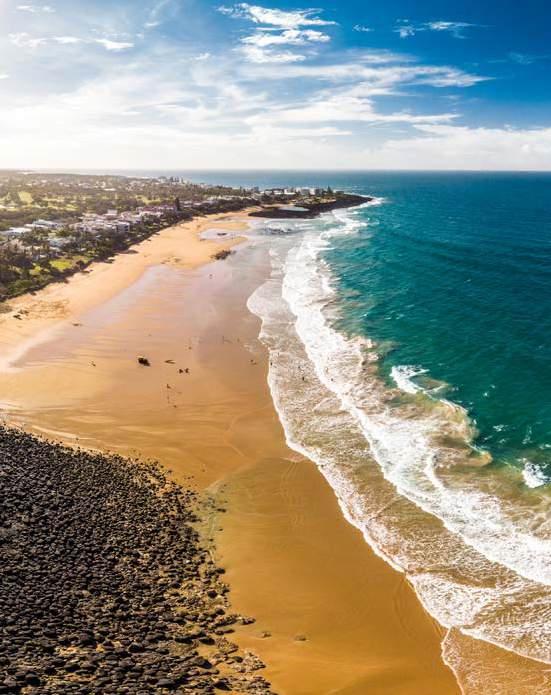

Summer 23°C to 28°C
Winter 14°C to 22°C
Average rainfall 1537mm
Transport links

Affordability
Traditional custodians
The Yugambeh People
If you want the natural coastal beauty of the Gold Coast, without the glitz and noise of Surfers Paradise, Coolangatta offers something different.
Why you might like it
Located on the Queensland–New South Wales border at the southern end of the Gold Coast, ‘Cooly’ is truly a surfers’ paradise – but it’s so much more than that.
Away from the chaos and tourism of busy Surfers Paradise (which you can visit in a 30-minute drive), Coolangatta has retained a lot of old-school charm.
Most housing on offer near the coast is older apartments, with some newer developments springing up. As you move further inland, you’ll start to see houses on decent-sized blocks.
Median dwelling price
• Beach living
• Vibrant food and culture
• Gold Coast charm
$1,323,711
Distance to nearest major hospital Tweed Valley Hospital is 14km away
Distance from nearest capital city Brisbane, 102km
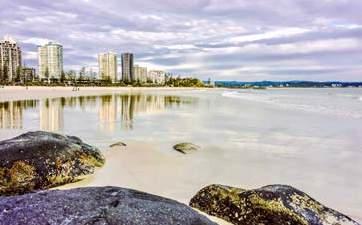

Cooly has all the amenities you need to live the good life for years to come. It draws a mature and relaxed crowd which means you can enjoy the sun, sand and pristine surf beaches by day, relaxing into quiet evenings after the sun goes down.
When Seana and Paul made their sea change, they opted for somewhere they already knew and loved. Seana says the familiarity factor was crucial for their successful transition. "Coming to somewhere that was really familiar to us was important for us.” -Seana and Paul on their retirement hop.
If you like a surf – or you just like watching world-class surfers from the comfort of your towel –Snapper Rocks, Rainbow, Duranbah and Currumbin Alley are the go-to beaches. Or visit Kirra, Tallebudgera Creek or Greenmount for a calmer beach or creek swim.
Starting or ending your day with a beach walk feels like a must here and you can do that along a beautiful beach walk that wraps its way along Greenmount Hill, connecting Greenmount and Rainbow beaches.
Keep walking up the hill towards the Queensland–New South Wales border at Point Danger and you could also be treated to some in-season whale watching.
Other Cooly-good ways to get outside include meeting up with the Twin Towns Social Walkers and Runners, taking in a round at Coolangatta and Tweed Golf Club or joining a morning Tai Chi class.
Beach fishing is allowed all along the Gold Coast (just stay away from the areas with the red and yellow flags). Try your luck at Snapper Rocks, Kirra Beach and Coolangatta-Greenmount Beach, or Currumbin and Tallebudgera creeks – and don’t forget the Tweed River (you’ll need a licence for this one).
If you want to get social, see a show or grab a bite, you can’t go past Twin Towns, a massive services club. It’s popular with locals and tourists alike, making for a lively vibe all week. The Coolangatta Surf Club is also a popular social hub, with unbeatable beach views.
The Cooly Bowls Club calls itself the “friendliest little club on the Gold Coast” and the Coolangatta Senior Citizens Centre is another excellent social spot to meet people and join a range of activities.
The bustling community markets are held every Thursday at Goodwin Park and Cooly also hosts a number of popular weekend festivals during the year (like Cooly Rocks On which proudly celebrates anything and everything vintage).
If you ever tire of the beaches, there’s great shopping in Cooly, with The Strand the place to find cinemas, boutiques, chain stores and eateries.
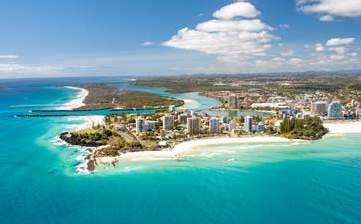
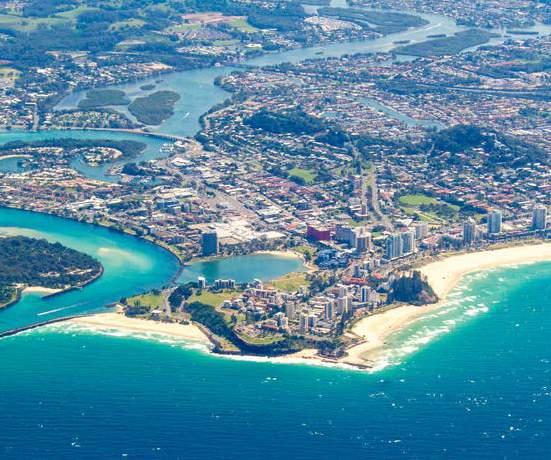

Summer 23°C to 28°C
Winter 14°C to 22°C
Average rainfall 1537mm
Transport links
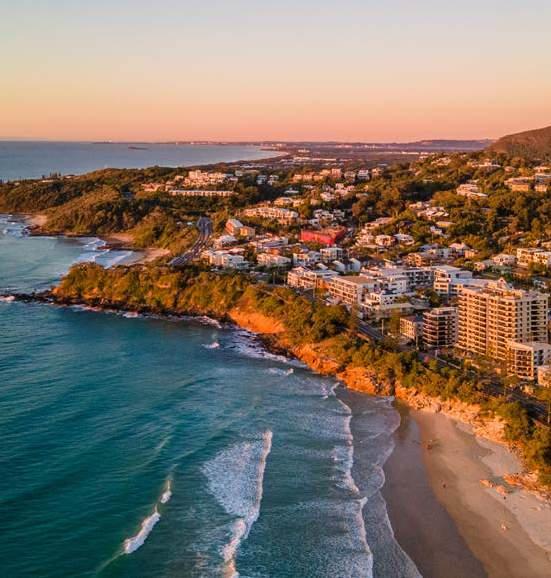
Affordability
Traditional custodians
The Gubbi Gubbi people
A relaxed lifestyle is what Coolum Beach is all about, where grassy beachfronts, parks and pristine waters make up its surroundings.
Why you might like it
Compared to other suburbs on the Sunshine Coast, Coolum Beach offers a quieter alternative without compromising on beauty or convenience.
The beachside boardwalk at Coolum Beach is an easy, even surface for walks along the water. There are also plenty of esplanade shops and public amenities available. A staple of Coolum is Salty Saturdays, a festival in the park that takes place on the second Saturday of each month. It’s a celebration of Coolum culture, with live music, lawn games plus lots of food and drink options.
Located nearby is Mount Coolum National Park, which offers stunning coastal and mountain views and is also home to about half of all the plant species of the Sunshine Coast. Great weather year-round means that outdoor living is easily enjoyable, with warm summers, mild winters and moderate rainfall.
Median
• Grassy beachfronts
• Laidback coastal town
• Idyllic ocean backdrop
Distance to nearest major hospital Nambour General Hospital is 25km away
Distance from nearest capital city Brisbane, 129km

Traditionally a surfing town, Coolum maintains that culture today, while offering peaceful living and a vibrant history.
Studio 53 Art and Surf Culture Gallery is a peek into the town’s history and also what locals are up to today. You can see multiple collections from a range of local artists, from historical pieces to modern-day sculptures.
NeoGallery specialises in modern Australian art. Having relocated from Brisbane’s arts precinct, the gallery exhibits a variety of collections, changing several times a year.
Having operated for over 100 years, Coolum Surf Club combines iconic views of the Sunshine Coast with relaxed beachside dining. Modern dishes made from locallysourced produce are served in a friendly atmosphere.
The community at Coolum Beach is committed to preserving the town’s beauty.
There are opportunities to volunteer with Coolum Coast Care for a variety of roles including admin, education, fauna projects and grant applications. Another opportunity to volunteer is with Coolum Meals on Wheels, which is always in need of volunteers for driving, cooking, deliveries and admin.
Coolum heARTS Inc is a not-for-profit organisation based in Coolum that provides workshops in the arts and music space at a reduced cost. Some activities on offer include art, ukulele lessons, meditation, mosaics and yoga. There are also volunteer opportunities.
The Coolum Hearts Art & Music Festival is an annual showcase of the Sunshine Coast’s finest artists and musicians, taking place in the Coolum Civic Centre.
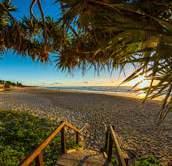


Summer 20°C to 28°C
Winter 9°C to 23°C
Average rainfall 1413mm
Transport links
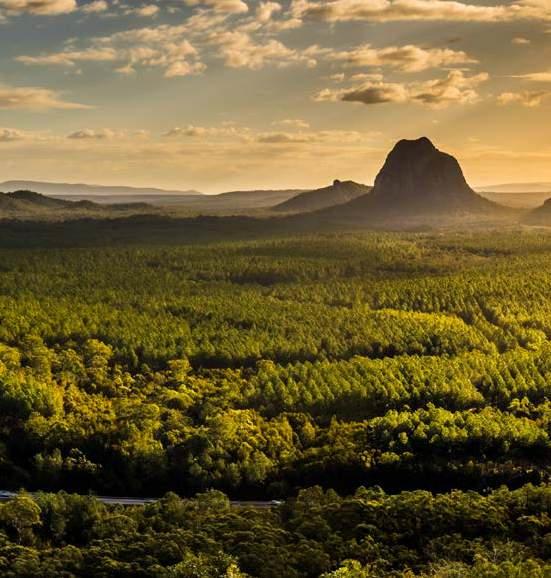
Affordability
Traditional custodians
The Yugambeh people
Coastal living is made easy at Golden Beach, with a peaceful atmosphere and plenty of amenities on hand for a comfortable lifestyle.
Why you might like it
Golden Beach is surrounded by sandy shores and sunshine, with silhouettes of the Glass House Mountains visible on the horizon.
You’ll be living on the doorstep of the Pumicestone Passage, a 35-kilometre ecological marvel that forms part of the Moreton Bay Marine Park. Here, dolphins, dugongs, turtles and more incredible sea life can all be spotted. It’s also home to 24 species of migratory shorebirds and 11 species of resident native shorebirds, making it one of the most important bird of Australia.
Golden Beach is also located only 3km from Caloundra, which is home to plenty of parks, beaches, churches and two shopping centres – Caloundra Shopping Centre and Caloundra Village.
The weekly Caloundra Markets, held every Sunday on Bulcock Street, are the largest street market on the Sunshine Coast with over 120 stalls. There’s a lively atmosphere with a variety of goods up for grabs, including fresh produce, gourmet goods and handmade crafts.
Median dwelling price
• Close proximity to Caloundra
• Lots of outdoor activities
• Beautiful beaches
$1,034,704
Median weekly rent $723
Population 5,646
Distance to nearest major hospital Caloundra Health Service is 2km away
Distance from nearest capital city Brisbane, 100km
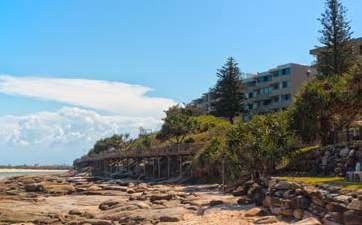
Golden Beach has calmer waters than a lot of its neighbouring beaches, making it perfect for an early morning swim or walk along the sand.
“The lifestyle benefits were immediate. Gone were the daily drives to reach Sydney’s beaches – now they're five minutes from the water. The kids have enjoyed the change in lifestyle too. And the ones that have benefited the most are our dogs, because they go to the beach every single day." Michelle and Alex’s move from Sydney
Bill’s Boat Hire and Bike Hire rents pontoon boats, kayaks, paddle boards and bikes to use at the beach. Their boats are perfect for fishing and exploring the calm waters of the Pumicestone Passage and you can take their bikes for a leisurely ride along the Coastal Pathway.
The Pelican Waters Bowls Club has two high-quality synthetic greens on-site, where barefoot bowls can be played every day of the week. There is also the Pelican Palace Chinese Restaurant, which is open Tuesday to Sunday, serving $15 lunch specials.
The Golden Paradise Beach Men’s Shed is a great place for men looking to build, enjoy an occasional sausage sizzle and get together. The Golden Beach Community Centre is also active on Facebook. Established in 1988, the venue often hosts charity drives, knitting lessons, free workshops and panel discussions.
Nearby in Caloundra, the Queensland Air Museum is Australia’s largest and most diverse historic aviation display. There’s a collection of over 80 historic military and civilian aircraft, set on two hectares of land. The museum is not-for-profit and is run by volunteers, so it’s a great place to pitch in and meet fellow locals.

The Caloundra Regional Gallery has a changing exhibit program that features leading local and national artists. Professional curators and education staff deliver a variety of exhibitions that have the Sunshine Coast’s unique culture on display. There is also a cafe on site and a number of events are hosted regularly, including workshops and artist talks.
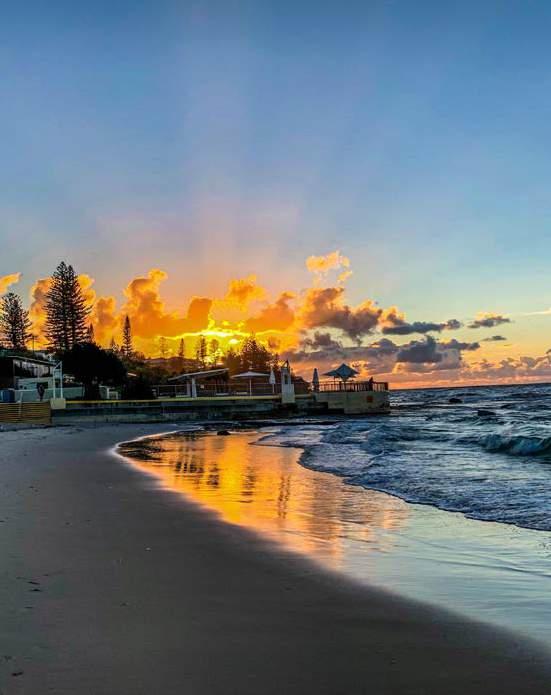

Summer 22°C to 29°C
Winter 19°C to 22°C
Average rainfall 1526mm
Transport links
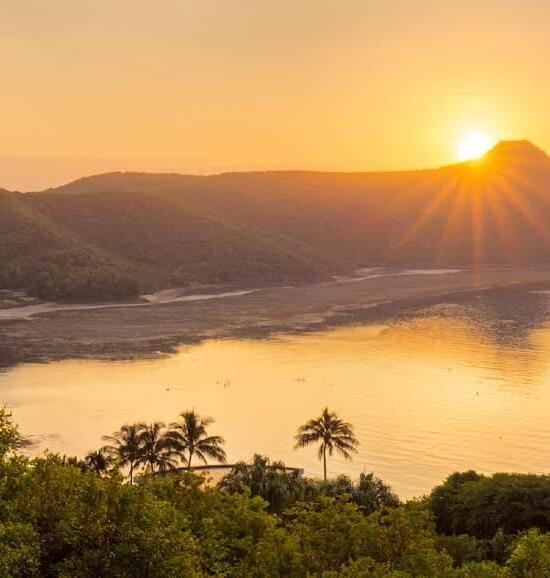
Affordability
Traditional custodians
The Ngaro people
Imagine waking up every day to the sight of turquoise waters and pristine beaches and going to sleep each night to the sound of lapping waves. Hamilton Island offers all this and more.
Why you might like it
This picturesque island, in the heart of the iconic Whitsundays, provides a perfect blend of luxury, natural beauty and small-town island charm.
Living on Hamilton Island offers a resort-style lifestyle that will have you living in luxury. The island is home to some of Australia's most exclusive resorts, including Qualia resort and Beach Club, offering great dining and spa experiences for tourists and locals alike. You can also find some wonderful gourmet dining options, with restaurants like Bommie at the Hamilton Island Yacht Club and coca chu serving up exquisite culinary experiences.
Source: Cotality 2025
• Island living
• Vibrant community events
• Top-tier healthcare
Median dwelling price no Cotality data
Median weekly rent no Cotality data
Population 1,759
Distance to nearest major hospital Proserpine Hospital is 59km away
Distance from nearest capital city Brisbane, 892km

Hamilton Island is a paradise for outdoor enthusiasts too. The Great Barrier Reef is right at your doorstep, offering world-class snorkelling and diving adventures. And the island itself offers almost endless activities, from sailing and fishing to kayaking and paddleboarding. For those who prefer to keep their feet dry, the Hamilton Island Golf Club is a unique golfing experience with stunning ocean views that you’ll never tire of – the main challenge will be keeping your eye on the ball!
The island’s small but tight-knit community is vibrant and welcoming, with numerous social and cultural events throughout the year. Hamilton Island Race Week, Australia’s largest offshore sailing regatta, attracts visitors from around the world. The island also hosts the Hamilton Island Endurance Series, including a triathlon and ocean swim, providing opportunities for staying fit, if that’s your thing, or sip a latte and clap as the competitors go by.
And if you’d like to get involved in the community, there are plenty of clubs and activities to join. The Hamilton Island Yacht Club offers sailing enthusiasts a chance to join like-minded mariners and the local art gallery provides a space for artists and art lovers to connect. Fitness classes and wellness programs at the island's sports club ensure you can maintain an active and healthy lifestyle.
Hamilton Island offers surprisingly exceptional healthcare facilities for an island, which can provide peace of mind, given that the nearest hospital is on the mainland at Proserpine. The medical centre is well-equipped to handle a range of health needs and access to mainland medical services is quick and easy when you do need them.



Summer 22°C to 29°C
Winter 11°C to 22°C
Average rainfall 1025mm
Transport links
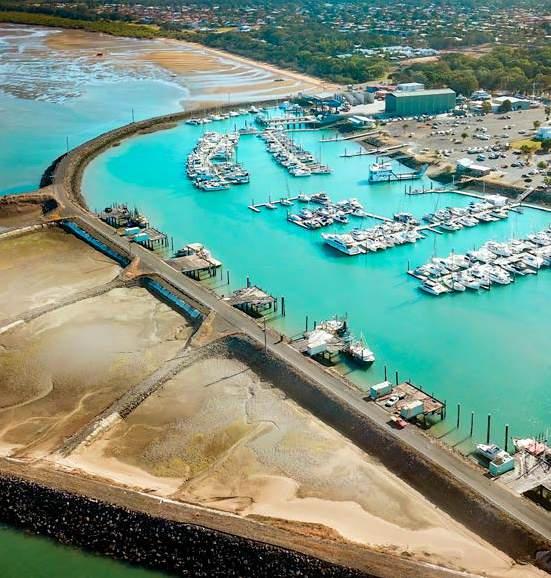
Affordability
Traditional custodians
The Butchulla People
Hervey Bay offers an affordable coastal lifestyle without sacrificing amenities or access to the city. And it comes with free whale watching. What’s not to love?
you might like it
As housing prices have continued to jump across Australia, the effects have been felt all along the coast of NSW – but take one more tiny step north and you’ll find the Fraser Coast and Hervey Bay.
“The kids were leaving home anyway and so we decided we were going to go and do what is best for us, really, after putting children at the front of all our decisions for many, many years." Seana and Paul on their retirement
Scenic Hervey Bay is known for its laid-back lifestyle and pristine beaches. It’s a small community, but big enough to house everything you need for a comfortable life: supermarkets, boutiques, an art gallery, cinema, restaurants and cafes.
This special spot is flanked by an amazing coastline, world-heritage listed K’gari (Fraser Island), Lady Elliot Island and picturesque hinterland. It’s a truly spectacular part of the world, yet remains affordable.
Median dwelling price
• Heaven for wildlife lovers
• Rainforest and beach
• Close to K’Gari Fraser Island
$727,837
Median weekly rent $618
Population 63,492
Distance to nearest major hospital Hervey Bay Hospital is in Hervey Bay
Distance from nearest capital city Brisbane, 290km
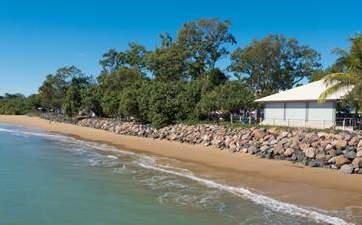
Hervey Bay promises a quiet life, but you’re only 3.5 hours away from Brisbane and 2 hours from Noosa. Plus, flights go direct from Hervey Bay airport to Sydney, Melbourne and Brisbane.
Hervey Bay is known as the whale watching capital of the world and you can watch the humpback whale migration twice a year along the area’s 17km of sandy beaches. Plus, you can make a weekend escape to the world’s largest sand island with popular K’gari just a 50-minute ferry ride away.
If you love breathing the sea air, Hervey Bay’s 14-kilometre long treelined esplanade is a great way to enjoy the coast, with plenty of parks and cafes along the way to stop for a breather. A full list of parks with barbecue facilities can be found here.
Pet-friendly Urangan Pier Markets run here twice a week. And, bonus, it’s the perfect place to throw in a line. If you’re a fan of fishing, you might also want to join the active Hervey Bay Amateur Fishing Club.
For golfers, there are two local courses to choose from, Hervey Bay Golf Club and Fraser Lakes Golf Club as well as a full-size golf driving range.
Several friendly bowls clubs in town have championship greens and great social club facilities, including Hervey Bay Bowls Club and Urangan Bowls Club.
The town has many lovely parks, with Hervey Bay Botanic Gardens the pick of the lot. It’s a key spot for bird and wildlife watching, with a large orchid house. They run a volunteer program that’s a great way to meet people.
Another way to get involved in the local community is through the Hervey Bay Neighbourhood Centre. There are a variety of volunteering roles available here. And, if you are looking for community on the water, the Fraser Coast Stand Up Paddle Board Club holds regular free come-andtry days, social paddles and beach clean-up events.
With such a strong sense of community, fantastic recreation opportunities, excellent general facilities and spectacular scenery, it’s little wonder Hervey Bay often tops the dream sea-change list.
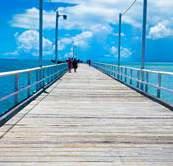
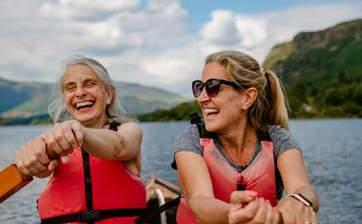
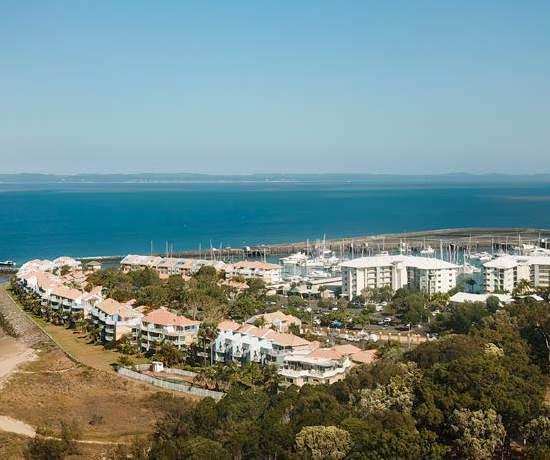
Summer 23°C to 31°C
Winter 16°C to 26°C
Average rainfall 1357mm
Transport links

Affordability
Traditional custodians
The Batjala People
Combining a tropical wonderland with a rich history and culture (including an incredible foodie scene), Ingham is a unique North Queensland gem.
Why you might like it
Just an hour south of Townsville, Ingham is a raw tropical paradise, offering a unique collection of culture, fresh produce and vast green landscape. Known as the ‘Little Italy’ of Tropical North Queensland because of its rich Italian history and culture, over half of Ingham’s residents are of Italian descent.
Lured here by the thriving sugar industry, many Italian migrants made Ingham home and now you can enjoy this tropical town while having access to an exceptional range of Italian restaurants and delicatessens.
The annual Australian-Italian Festival brings thousands of visitors to the town to enjoy Italian wine, cuisine, music and culture. But with a bit of luck, you can join the Italians and enjoy this lovely spot year-round.
Median dwelling price
Median weekly rent
• An hour from Townsville
• Small town vibe
• Fresh produce and food
$258,845
Distance to nearest major hospital Ingham Health Services is in Ingham, with Townsville University Hospital 114km away.
Distance from nearest capital city Brisbane, 1468km
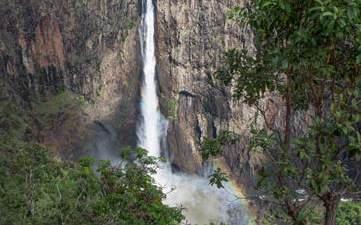
Popular spots around town include JK’s Delicatessen, a deli and cafe serving Italian treats, Lou’s Food Emporium, which claims to be ‘North Queensland’s greatest deli’ and Julie’s Pasta Shop – which is such a well-kept local secret it doesn’t have a website, but you can find it at 1 Arthur St, Ingham.
There is a trade-off of city conveniences. "There's no Uber Eats… in fact, there’s no Uber. You are living a much simpler, pared-back life, but I like it that way,” say Sara and Jason.
The area is home to Australia’s highest permanent single-drop waterfall, Wallaman Falls, dropping 268 metres into Stony Creek, which is also a great place for a picnic or barbecue.
The TYTO Wetlands are a perfect spot for bird watchers. Taking its name from the Eastern Grass Owl (Tyto longimembris), these wetlands have a bird species diversity that rivals Kakadu National Park – in a space 18,000 times smaller! Truly a twitcher’s paradise.
There are plenty of world-class fishing opportunities along the mangrove-lined inlets, beaches and jetties (as well as nearby Great Barrier Reef).
While you’re in town, enjoy the Mercer Lane Mosaic, a street-long artwork that tells the history of Ingham – perfect for a coffee and a stroll. The TYTO Regional Art Gallery is a contemporary space showcasing local artisans and craft enthusiasts. And you can learn about the unique culture and history of the Nywaigi people at Mungalla Station.
Ingham does community groups proudly and well. Hinchinbrook Community Support brings together a range of clubs and groups, covering gardening, coffee and physical activities.
And if you’re looking for a local with some history, you can’t go past Lee’s Hotel, Slim Dusty’s original ‘Pub With No Beer’. Good news: they have plenty of beer now, as well as pool competitions, trivia and a bistro serving lunch and dinner every day.
For a picnic, just out of town, the Broadwater State Forest is a place of natural beauty and serenity, filled with eucalyptus trees, trails and fishing creeks.
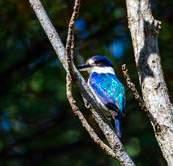
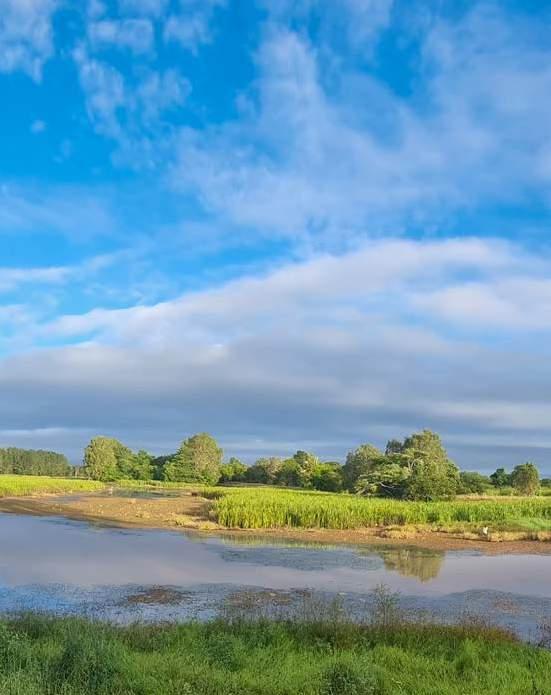
Summer 21°C to 29°C
Winter 11°C to 21°C
Average rainfall 1100mm
Transport links
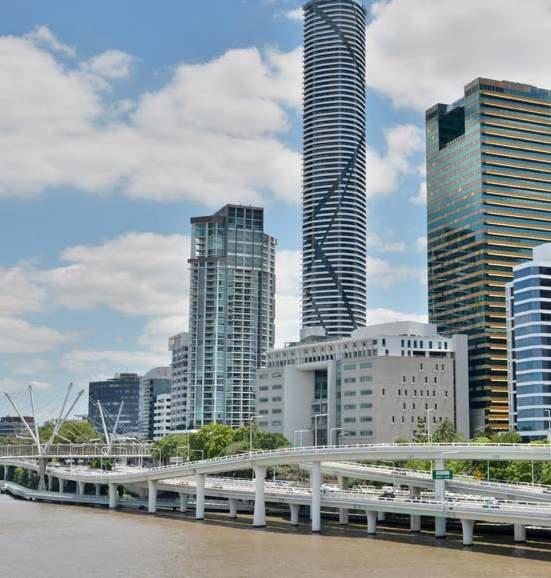
Affordability
Traditional custodians
The Turrbal people
The Brisbane inner-city suburb of Milton is perfect for sport lovers and the state’s iconic brew, with easy access to the city and surrounding suburbs.
Why you might like it
Milton is a sporting haven. It’s home to Suncorp Stadium, where rugby league, rugby union, and soccer matches are regularly hosted. With close proximity to Brisbane City, Milton offers inner city suburban living at its finest.
Its close proximity to the Brisbane River means that residents can enjoy walking and cycling along the extensive river walkway. Frew Park is a sprawling green space with picnic tables, tennis courts, and even a ping pong table.
With XXXX’s iconic brewery located in Milton, you can see the lit-up sign from across the suburb and tour the site to explore the 145+ year history of the brand. This is a great way to get familiar with the area, learn more about its backstory and immerse yourself in inner-city living.
Located opposite Suncorp Stadium is the Last Man Standing Brewery, another iconic Queensland hallmark, part-owned by our iconic speed-skating Olympian Steven Bradbury. On non-game days, you can expect a lively yet spacious experience with good beer and a fully stocked bar for non-beer drinkers. The food menu is filled with traditional pub classics like old school-style burgers, pizza and garlic bread.
Median dwelling price
• Inner-city living
• Vibrant sporting scene
• Lots of craft breweries
$793,822
Median weekly rent $672
Population 1,871
Distance to nearest major hospital
Distance from nearest capital city
Royal Brisbane and Women’s Hospital (RBWH) is 4km away
Milton is in Brisbane, 3.5km from the CBD

Milton Village Shopping Centre offers a supermarket, pharmacy, restaurants, cafes and lots specialty stores for all of your shopping needs.
There’s also easy public transport in Brisbane City that takes 5 minutes, with plenty of buses and trains joining you to various transport hubs.
The Milton Heritage Walk reveals glimpses of the area’s history, from war-time activity to modern day stories, like the Salvation Army Rescue Home or Milton House (one of Brisbane’s oldest homes).
Milton is also home to iconic Park Road, a shopping precinct with plenty of retail stores and restaurants for a day out. For Italian food aficionados, La Dolce Vita is a local stalwart, fusing flavour, local ingredients and culture to create authentic Italian dishes, while Tuk Tuk offers delicious Thai food and cocktails. Or pop into Scratch Bar for a range of craft beers, comfy couches and a dog-friendly scene.
Milton is not all sports and beer though, art lovers will also feel right at home being so close to Brisbane’s cultural heart – South Bank, QPAC, the Queensland Museum and GOMA. QPAC is the best place to catch a new musical, play or performance while GOMA has a never ending rotation of art exhibits from all over the world.
Milton offers a range of modern, low-maintenance apartment living options ideal for downsizers seeking convenience and comfort without the hassle of ongoing upkeep. Many new residential developments feature well-designed units with lift access, secure entry and on-site amenities like pools, gyms and communal gardens. These apartments are perfect for retirees who want to enjoy inner-city living while simplifying their lifestyle and home maintenance. With cafes, shops, and public transport just steps away, everything you need is close at hand. Milton’s flat terrain and riverside paths make it very walkable and easy to enjoy the area to the fullest.


Summer 24°C to 31°C
Winter 18°C to 26°C
Average rainfall 1900mm
Transport links
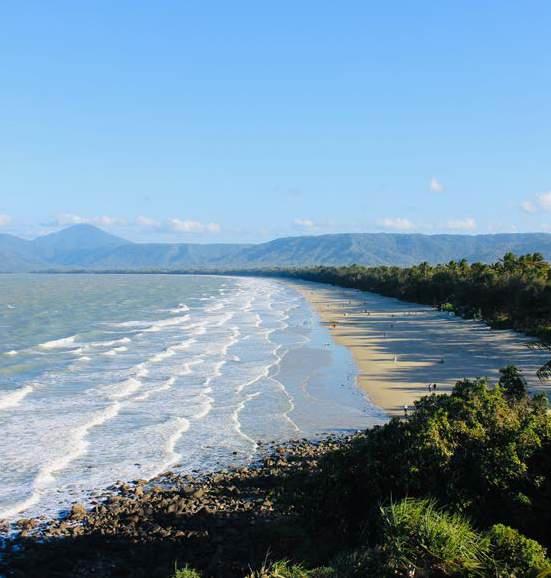
Affordability
Traditional custodians
The Yirrganydji people
Port Douglas is known for its relaxed lifestyle, stunning natural surroundings and proximity to the Daintree Rainforest and the Great Barrier Reef.
Why you might like it
Combining the magic of Far North Queensland with a beachside lifestyle, there’s a reason that so many are choosing to call Port Douglas home. Aside from easy access to the Great Barrier Reef and Daintree Rainforest, Four Mile Beach is located in Port Douglas, renowned for its golden sands fringed by swaying palms.
Whether it’s strolling the beach at sunrise or exploring the calm waters and rock pools, it’s a truly tranquil lifestyle.
The Flagstaff Hill Walking Trail is another easy walk that provides spectacular views of the Coral Sea, Low Isles, Snapper Island and the Daintree Rainforest. It is accessible via Four Mile Beach.
In the heart of Port Douglas is Port Village Shopping Centre, with undercover parking and lots of speciality stores and cafes. There are also supermarkets, banks and pharmacies.
Median
• Beach town
• Local feel
• Friendly, welcoming community
Distance to nearest major hospital Moss Multipurpose Health Centre is 20km away
Distance from nearest capital city Brisbane, 1,742km
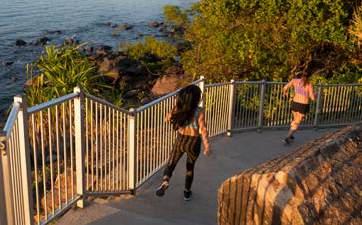
CLIMATE AND IS RELATIVELY WARM YEAR-ROUND, SO IT’S WELL SUITED TO THOSE WHO WANT TO KEEP THEIR BONES WARM AND SALT
There are also plenty of galleries in Port Douglas, such as SEA Gallery, where a number of original artworks, fine art prints and photography are on display year round. There are also regular watercolour workshops being run for people of all ages and levels of experience. Ngarru Gallery has a number of artworks on display from First Nations artists, where exhibits run throughout the year.
The Port Douglas Community Service Network Inc fosters a socially connected community. There are plenty of opportunities to volunteer and connect with the community on another level. They also host a men’s breakfast every Wednesday from 8:30am.
The Queensland Country Women’s Association also has a hub in Port Douglas. It provides a space for Queensland women to connect, collaborate and make an impact. Further volunteer opportunities are available at the NicNak Shed, which is the only op shop in Port Douglas.
Douglas Shire Council maintains Your Douglas, a website featuring Council news, project updates and a community events calendar. The Port Douglas Neighbourhood Centre regularly hosts community events like craft groups, tai chi, meditation, pickle ball, a sewing group and book clubs.
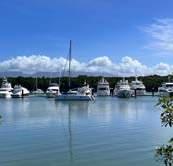
Port Douglas offers access to essential health services, including local GPs, medical centres and allied health professionals such as physiotherapists and podiatrists. For more specialised care, Cairns is just over an hour away and home to major hospitals and specialist clinics. The area also supports ageing-in-place, with inhome care services and community health programs available. While there are limited retirement villages in Port Douglas itself, nearby regions offer more options for supported living.
The best part about living in Port Douglas is probably having good weather pretty much year-round. Summers are hot but winters are a mild 18°C to 26°C which is perfect for those who love the great outdoors, gardening and staying active yearround. This, coupled with the general slower pace of life and laid back attitude of the community mean it’s a fantastic low-stress place to unwind.
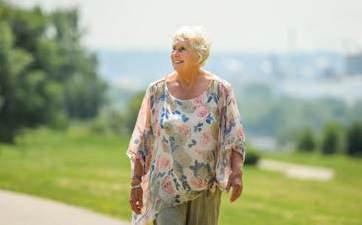
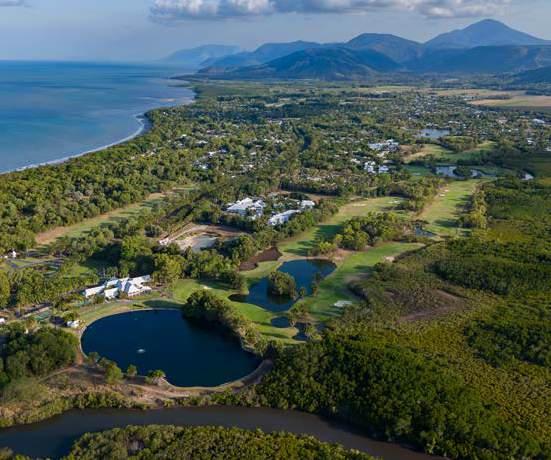

Summer 21°C to 29°C
Winter 11°C to 21°C
Average rainfall 1433mm
Transport links

Affordability
Traditional custodians
The Kabi Kabi, Jinibara and Turrbal people
Scarborough has a vibrant coastal lifestyle with stunning beaches, picturesque views and a relaxed atmosphere.
Why you might like it
There’s plenty of old village charm in Scarborough, which backs onto Moreton Bay’s protected waters.
There’s a friendly vibe and at a whole lot of cafes for a town this size –the locals clearly love to meet up for a good cuppa!
It’s also great for people who love their water toys, especially jet skiers, standup paddleboarders and kayakers. Dolphin and whale watching tours are also popular, taking in the spectacular coastline that hugs the entire town.
It’s little wonder that Scarborough is a favourite among Brisbane day trippers – it’s less than an hour’s easy drive from the CBD. Which puts this small community within cooee of every kind of big city amenity, whenever the need arises.
• Beach lifestyle
• Busy esplanade
• Close to big city infrastructure
Median dwelling price $1,100,237
Median weekly rent
Distance to nearest major hospital Redcliffe Hospital is 2km away
Distance from nearest capital city Brisbane, 40km
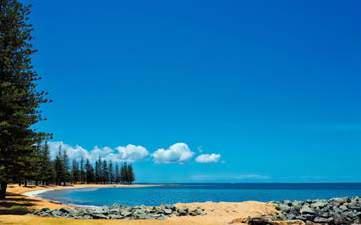
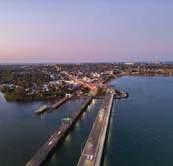
This seaside village offers a classic coastal life only 43km from Brisbane’s inner city. Even without the city’s convenience, Scarborough has a good range of activities and community facilities.
The Bee Gees Way is a council-owned tribute museum that celebrates the Gibb brothers in their home town. They grew up in nearby Redcliffe and signed their first music contract in the area – the rest is disco history.
For a refreshing dip, the Redcliffe Lagoon Settlement Cove is a saltwater swimming pool right next to the ocean. It’s a top spot to stop for a while with fish and chips from the nearby chippy. For the particularly robust and eager, early morning winter swims are also a must-do at Redcliffe!
But Scarborough isn’t just about nostalgia and a swim. Locals love the waterfront parks and leafy picnic spots that line the foreshore, perfect for a lazy afternoon with a book or a barbecue with friends.
The marina is another highlight, a hub for boating and fishing that gives the area its relaxed, nautical feel. Keen anglers will find plenty of places to drop a line, while walkers and cyclists can enjoy the Moreton Bay cycle paths that wind along the water.
The café culture is also thriving, with everything from simple seaside takeaway joints to stylish coffee haunts where you can sip a flat white while gazing out to the islands.
Speaking of which, Scarborough is also a jumping-off point for day trips to Moreton Island, giving adventurous retirees or weekend wanderers easy access to snorkelling, sand tobogganing and dolphin-spotting.
All in all, Scarborough has that elusive combination of seaside serenity, community warmth and just enough buzz to keep life interesting.
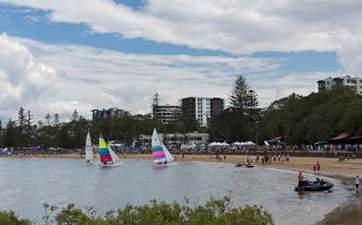
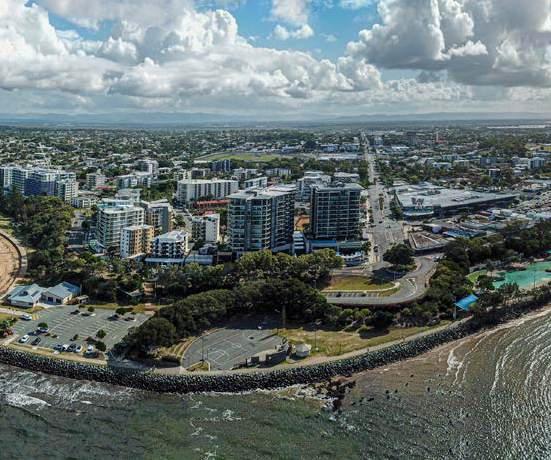
Summer 18°C to 29°C
Winter 3°C to 16°C
Average rainfall
765mm
Transport links
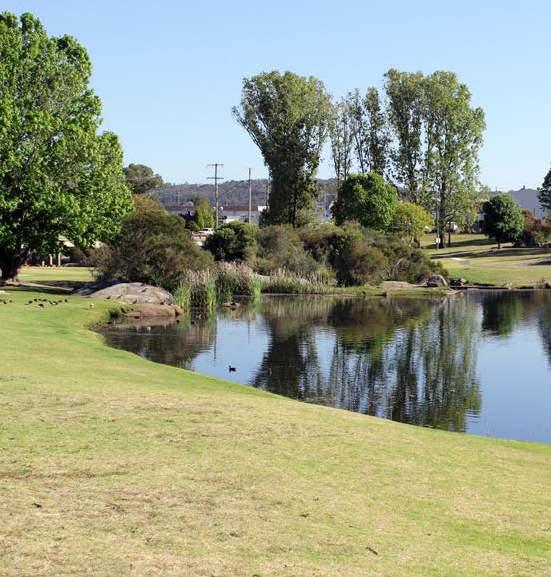
Affordability
Traditional custodians
The Kamburwal people
Queensland's Granite Belt is rich in natural beauty, history and culture and it’s a great place to join a creative community that’s not far from big city Brisbane.
Why you might like it
The Granite Belt in Queensland’s Darling Downs is known for its wine, history and charm – and Stanthorpe is a great place to experience all three.
With a cool climate (relative to Queensland, at least), fertile soil and vibrant community spirit, Stanthorpe offers an idyllic country town lifestyle, just a couple of hours from the hustle and bustle of Brisbane.
Although Stanthorpe isn’t a big town, it has all you need to live comfortably, including supermarkets, medical facilities, boutique shops and fantastic cafes.
It’s also home to a vibrant art scene, which you can see in the murals, sculptures and mosaics around town (try the Artistic Stanthorpe Walking Trail on the official Southern Downs Visitor App for a full tour).
• Granite belt living
• Small town lifestyle
• Cooler climate (for Queensland)
Distance to nearest major hospital Stanthorpe Hospital is in Stanthorpe
Distance from nearest capital city Brisbane, 217km
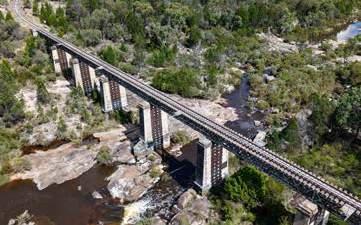
IT’S ONE OF THE ONLY PLACES IN QUEENSLAND TO EVER SEE SNOW. (BUT DON’T WORRY, IT ONLY HAPPENS EVERY FEW YEARS.)

Art trails, music, gardens and … snow
Stanthorpe’s surroundings only add to its rural charm, with rolling hills, verdant vineyards and pristine national parks all on your doorstep.
The fertile soil means the area is wonderful for gardeners as the local community garden group can attest.
Artworks Granite Belt is a hub for artists to meet, with a gallery, cafe and a range of classes and workshops to join. The Stanthorpe Regional Art Gallery also welcomes volunteers.
To learn a new skill or make a friend or two, U3A Granite Belt is a volunteer organisation that promotes healthy ageing, learning and socialising. The group currently services over 70 members in Stanthorpe and surrounding suburbs.
Music lovers are welcome to join the Granite Belt Choir or the Granite Belt Music Council.
Another much-loved community event is The Apple & Grape Harvest Festival, a beloved Stanthorpe tradition celebrating the region’s rich produce and wine heritage. Held every two years, the festival features street parades, live music, food and wine tastings.
The area has great walkability and is ripe for some outdoor exploration. Walking tracks and national parks like Girraween offer fantastic views and birdwatching. The Chestnut-rumped Heathwren, Satin Bowerbird, Spotted Quail-thrush, Eastern Spinebill and Yellow-tufted Honeyeater will get birdwatchers outside enjoying some low impact outdoor exploration.
Stanthorpe offers a solid range of health care providers to support retirees as they age. This includes well-equipped Stanthorpe Hospital, other medical clinics, dental care and allied health providers such as physiotherapists and podiatrists. For those looking to age in place, there are in-home care services and community support programs available through local providers. The town’s strong community network ensures that older residents can maintain independence while having access to the care and assistance they need as they age comfortably.
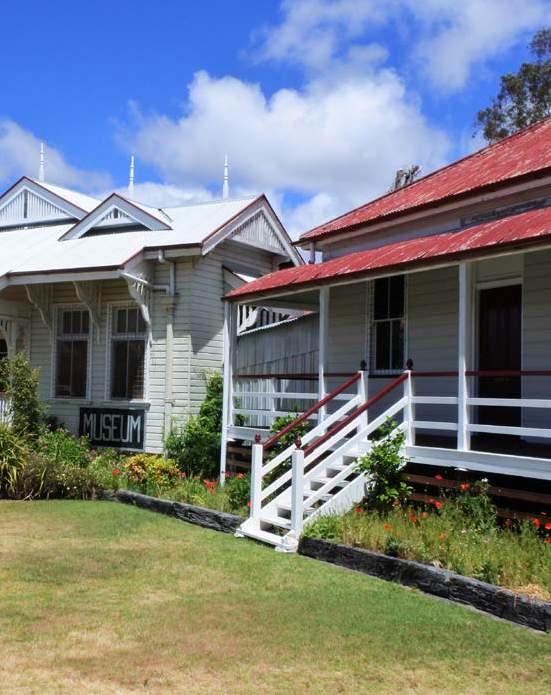
Lizzie and Joe turned a weekend hobby into a complete lifestyle change, trading their Brisbane careers for a thriving bed and breakfast business in Glen Aplin on Queensland's Granite Belt –proving that sometimes the best ideas grow from following your passion.
What started as a classic weekend escape story quickly became something much bigger for this Brisbane couple. Lizzie, who worked in healthcare and Joe, with his IT background, bought a doer-upper property in Glen Aplin as their weekend retreat from busy city lives.
From weekend getaway to new digs
"We used to leave Brisbane on a Friday and come down here to work in the garden and do up the place," Lizzie explains. For two years, they were weekend warriors, driving the three hours each way and gradually transforming their country property. Then Joe took the plunge first, moving down full-time while Lizzie kept her city job.
But the pull of their new life proved too strong. With their kids grown and independent, Lizzie realised it was time for a complete change. The healthcare system had left her feeling burnt out and she was ready for something entirely different.
"One New Year's Eve, I rang my boss just before midnight and quit. He laughed and said, 'It's about time,'" she recalls
Their parachute opened in the form of Sabo's on Severn bed and breakfast. What had been a hobby property evolved into a business opportunity, though not quite in the way they'd planned.
The pandemic provided an unexpected launch pad. "All of a sudden, I found myself catering for breakfast, lunch and dinners for groups of people — all social distancing," Lizzie explains. "The police were our first overnight guests as they were managing the border just For Joe, the decision to leave everything behind was about taking a leap of faith. "So many people don't have the nerve to do it," he says. "But I've always said, jump and the parachute will open. You just have to trust it'll work out."
up the road. They needed somewhere safe and quiet where they'd be well-fed. It all grew from there with word of mouth."
From there, the business naturally expanded. They launched their cookery school, Cooked from Scratch and began catering for weddings, funerals and special occasions. They now collaborate with local producers and venues and host their own popular events like Christmas in Winter, which books out every year.

The transformation from city professionals to country hosts has been complete, but it hasn't meant slowing down. If anything, Lizzie and Joe seem to have found a new gear, driven by genuine passion for food, hospitality and community connections.
"Life's busy in a different way and it's meaningful," Lizzie says. "We don't miss the city for a second."
Their approach is refreshingly personal – they focus on making guests feel like part of a big family rather than just customers. It's this genuine warmth that has built their reputation and keeps people coming back.
The move has opened up opportunities they never could have imagined in their previous careers and
given them the energy for a whole new chapter in their working lives. They've become part of the local food scene, working with regional producers and their property provides the perfect base for exploring the Granite Belt's wineries and attractions.
For Lizzie and Joe, the leap from weekend property owners to fulltime country business operators is a little bit different from the end-ofcareer others might be making, but it has also proved that sometimes the best life changes happen when you stop planning and start following your passions.
Lizzie and Joe’s version of retirement shows it doesn't have to mean stepping back – sometimes it means stepping into something completely new that you never knew you were capable of.
Summer
19°C to 28°C
Winter 9°C to 20°C
Average rainfall 1563mm
Transport links
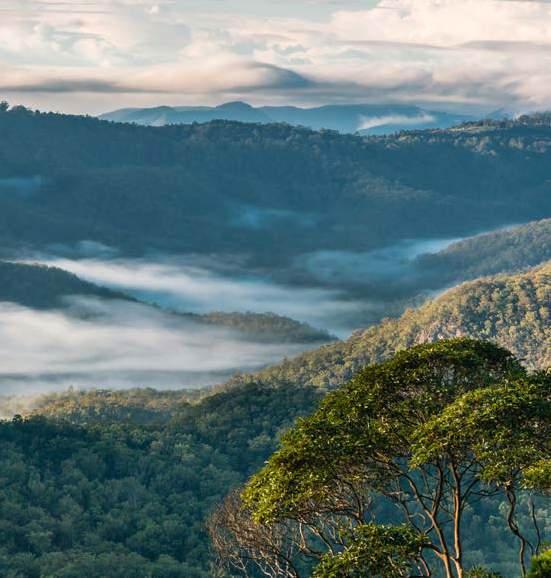
Affordability
Traditional custodians
The Wangerriburra people
With a pleasant, cool climate and sub-tropical rainforests in its immediate surroundings, Tamborine Mountain is home to incredible biodiversity and good rainfall.
Why you might like it
The picturesque rainforest region of Tamborine Mountain is nestled inland between Brisbane and the Gold Coast. Often referred to as “the green behind the gold”, the area is a peaceful haven with ancient rainforest, plenty of galleries and eateries and boutique wineries.
There are a few different shopping villages, such as Main Street, which has over 70 stores including fresh produce, clothing, jewellery and local wineries that also offer tastings.
The Tamborine Mountain Local Producers Market takes place every Sunday morning in the Green Shed. There’s farm-fresh produce and handcrafted delicacies available, in a welcoming community atmosphere.
Living in Tamborine Mountain also means opportunities to volunteer, particularly with the Tamborine Mountain Community Care Association. The organisation’s vision is to provide and advocate for services and educational programs to encourage independent living.
• Peaceful, rural lifestyle
• Cooler climate
• Unique biodiversity
Distance to nearest major hospital Logan Hospital is 70km away
Distance from nearest capital city Brisbane, 74km
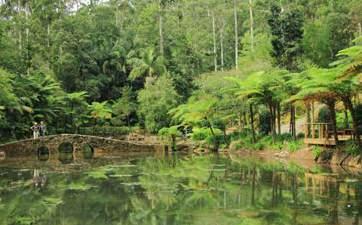
Tamborine Mountain is home to Tamborine National Park, which offers glimpses of the Pacific Ocean, Gold Coast skyline and other national parks of the Scenic Rim. The Cedar Creek Falls track is particularly popular because it offers a leisurely walk with beautiful views of the gorge and waterfalls.
Tamborine Mountain Creative Arts provides a creative haven and artistic outlets such as painting, drawing, creative writing, sewing and pottery. There are multiple classes on offer each week. The Tamborine Mountain Garden Club is a great place for avid gardeners, meeting on the second Tuesday of every month at the Vonda Youngman Community Centre.
Club Tamborine offers membership options for lawn bowls, croquet, or social. There are also social events every month, including live music, trivia and drink specials. For plant lovers, the Tamborine Mountain Botanic Gardens is open every day of the year, with opportunities to purchase plants twice a week. The gardens are administered entirely by volunteers, so they’re always keen to meet newcomers who want to lend a hand.
Tamborine Mountain celebrates a variety of annual arts and cultural events that bring the community together. The Tamborine Mountain Arts Trail, held over the Labour Day long weekend in May, invites visitors to explore more than 20 local artist studios, enjoy pop-up exhibitions, hands-on workshops and outdoor sculptures. In spring, the Tamborine Mountain Scarecrow Festival brings all things weird and whimsy to the region, as locals and visitors craft imaginative scarecrows displayed along a scenic discovery trail.
Tambourine Mountain is about a 40-minute drive from the Gold Coast and a 1-hour drive from Brisbane. While there is a local bus service to nearby towns and cities, most residents have cars and driving is common. The streets are quiet and easy to navigate with good parking options in village areas.
The region offers a diverse range of housing options, from charming heritage cottages and modern homes to spacious acreage properties surrounded by nature. While purposebuilt retirement villages are limited, there are downsizer-friendly options
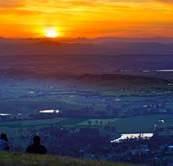
available, appealing to those who want to spend less time maintaining their home. The area's real estate is in high demand, particularly among retirees looking for a peaceful treechange while still being within driving distance from the beautiful Gold Coast beaches. Many elevated properties in the area have stunning views of the hinterland or coastline, adding to the mountain’s unique lifestyle appeal.

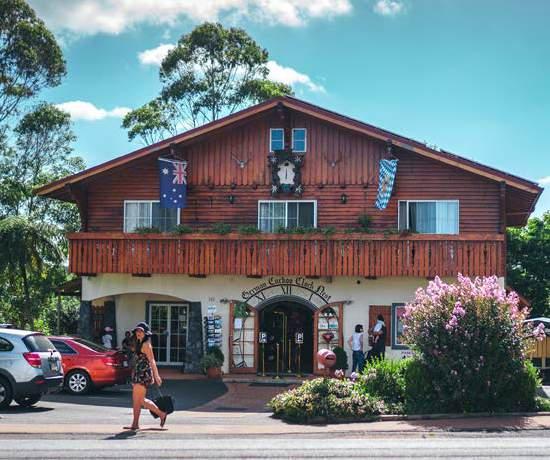

Summer 17°C to 29°C
Winter 6°C to 16°C
Average rainfall
715mm
Transport links

Affordability
Traditional custodians
The Kaneang, Pibelmen and Wadandi people
With endless outdoor adventures and local gatherings, Bridgetown offers the perfect blend of relaxation and excitement.
Why you might like it
Located 3 hours south of Perth, Bridgetown feels like another world. Known as one of the most picturesque towns in Western Australia, Bridgetown lies in the Blackwood River Valley and it positively glows with country charm. The region is also abundant in produce, wineries, crafts, art and stunning scenic drives. If you want a place to slow down, breathe deeply and softly arrive in an active and inspiring community, Bridgetown could be exactly what you’re looking for.
Unsurprisingly, the picturesque scenery that surrounds Bridgetown and the area has lured many creatives and artists. As well as bringing vibrancy to life in the town, you’ll find exhibitions of local artists’ work in the region’s many galleries.
Median dwelling price
• Get close to nature
• Small town affordability
• Action sports scene
$657,597
Distance to nearest major hospital Bridgetown Hospital is in Bridgetown
Distance from nearest capital city Perth, 258km

BRIDGETOWN MAY BE SMALL, BUT IT HAS EVERYTHING YOU NEED FOR YOUR DAILY LIFE, SUCH AS A SUPERMARKET, PHARMACY, VET, BUTCHER,
You can learn about local artists and see where they’re displaying their work at Blackwood River Arts Trail. The Bridgetown Art Trail booklet offers a walking route through town so you can immerse yourself in the local art galleries.
It’s not all slow pace here though, with plenty of action and adventure for those who seek it. You’ll find canoeing and kayaking, hiking, mountain biking, horse riding and more.
The Blackwood River walk is a local favourite and you can join the Bridgetown Walking Group to meet other friendly locals who love exploring the area together on foot.
There are also some good takeaway options, but don’t expect any delivery services – this is the sort of place you go out and talk to people!
If you want to get involved with your community, you can grab a meal and join in the activities at the Bridgetown Club, such as card quiz and open mic nights.
And Bridgetown Hub offers a range of workshops to encourage connection within the community and a book club that meets regularly for book chats and a friendly meal.
Also worth a mention is that the tiny village of Bridgetown buzzes with music and activity each year, when the iconic Blues at Bridgetown music festival comes to town, drawing performers and visitors from all over the world.
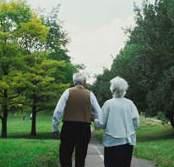
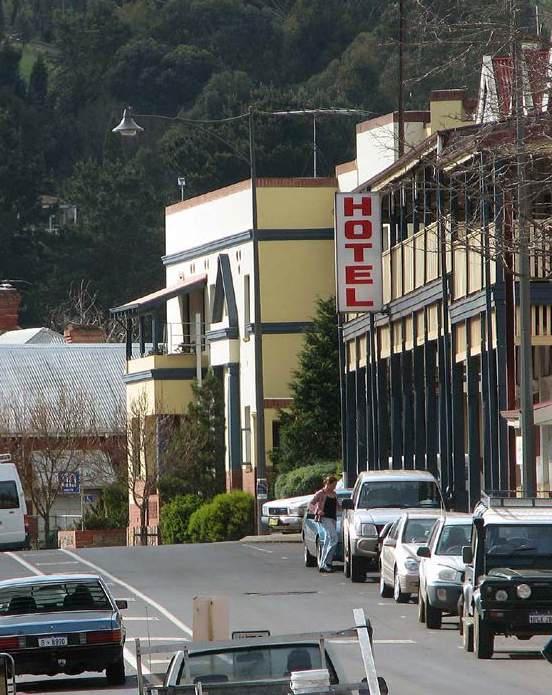
Summer 16°C to 26°C
Winter 10°C to 16°C
Average rainfall
578mm
Transport links

Affordability
Traditional custodians
The Kepa Kurl Wudjari and Ngadju peoples
Located on Western Australia’s southeast coast, Esperance boasts one of the most spectacular landscapes in Australia.
Why you might like it
Esperance is known to have some of Australia’s whitest sands, with beaches like Blue Haven contributing to this reputation. It’s protected from the wind, with swimming and morning strolls made easy by its beautiful location.
“Once we bought the house they [the locals] said, ‘Oh, you're transitioning’," she laughs. "It's quite a common thing. People will buy a holiday house and they'll come and go until gradually it gets to a point where, when it’s time to go back, [and] you don't want to get in the car and go home." Sara and Jason on their gradual sea change. Another scenic beach is Twilight Bay, offering safe and idyllic swimming conditions. Birdwatching, fishing and coastal walks are all easily done at Twilight Bay.
Locally, Esperance Boulevard is a shopping centre with supermarkets, variety stores, banks, pharmacies and fast food options. You’ll also find Esperance Cinemas, offering local entertainment with comfortable seats and the latest blockbusters.
The Shire of Esperance Council also runs frequent social programs where you can meet your neighbours and join in with activities like movie club, craft club, games group, physio group and day trips.
Median dwelling price
• Unrivalled scenery
• A wealth of community services
• Remote, quiet living
$509,988
Median weekly rent $541
Population 13,883
Distance to nearest major hospital Esperance District Hospital is in Esperance
Distance from nearest capital city Perth, 693km

A nostalgic feel
Esperance is a great spot for peaceful living, with its remote location making housing affordable and crowds unlikely. There is also good access to hospitals, libraries, bars and eateries locally.
33 Degrees is a newly renovated pub with plenty of classics on the menu and regular events run weekly, including raffles, trivia and food and drink specials. The Quarters is a familyrun restaurant that uses the freshest local ingredients to cook up delicious meals and treats.
Esperance Public Library has free membership for residents, with access to all library facilities. There are also monthly tech talks on offer with a light lunch provided.
The Esperance Museum holds two major collections — Object Collection, that offers a glimpse into the history of Esperance and Local History Collection, which has mainly been collected through volunteers or by donation. For those looking for a volunteer opportunity best suited to them, the Esperance Volunteer Resource Centre has been active since 1999, connecting volunteers with their best-suited opportunities. They also host regular training sessions and events for the local community.
Djilba Wildflower Festival is a popular annual festival that showcases the beautiful flora that the climate allows. There are educational talks about the 600 varieties of wildflowers as well as vibrant flower displays, workshops and art exhibitions. The festival is held every year in September when spring has sprung and the flowers start to bloom.
Getting around in Esperance is a mix of convenience and limitations for retirees. The regional airport offers regular flights to Perth, which makes it easier to visit friends and family, or alternatively it’s a lengthy 693km drive. The town itself is small, so hopping around by car, bike or foot is relatively stress-free. Public transport is fairly limited so most residents opt for having a car or rely on taxi services.
While being far from Perth, Esperance offers affordable housing that the major cities could only dream of, with options ranging from seaside homes to low-maintenance units and retirement villages. Its peaceful, low-density environment appeals to retirees seeking a quiet lifestyle close to nature. This relaxed pace and reasonable cost of living make it an attractive retirement destination for many people. Esperance has
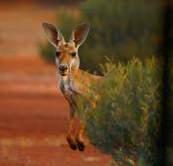
unbeatable stunning natural beauty, with its renowned pristine beaches and crystal-clear waters. The town’s friendly community and abundance of outdoor activities make it an ideal place for retirees to enjoy an active, healthy lifestyle while soaking in the peaceful coastal atmosphere.

Summer 17°C to 29°C
Winter 9°C to 18°C
Average rainfall
608mm
Transport links

Affordability

Traditional custodians
The Whadjuk people
With a thriving live music scene and an engaged, welcoming community, there are plenty of reasons to make Fremantle your retirement destination.
Why you might like it
There’s something magical about Fremantle, with its blend of rich history, vibrant culture and coastal beauty. It may be just 30 minutes from Perth, but this bustling port city is an entirely different world with its heritage charm, cobblestone streets and modern conveniences.
Freo is renowned for its beautifully preserved 19th-century architecture, including the iconic Fremantle Prison and the Round House. Strolling through the historic streets, you’re surrounded by an array of boutique shops, cafes and art galleries that reflect the city’s creative spirit.
Fremantle is also a foodie’s paradise, with plenty of restaurants, pubs and markets offering a wide variety of cuisines. It can get busy though, so you may like to get used to booking ahead. The Fremantle Markets, operating since 1897, are a local favourite, with fresh produce, local crafts and delicious street food. For a more refined dining experience, places like Bread in Common and Manuka Woodfire Kitchen provide fine dining in charming settings.
• A blend of history, culture and coastal beauty
• Historic charm
• Lively cafe and pub scene
Median dwelling price
Median weekly rent
$1,107,053
$860
Population 31,930
Distance to nearest major hospital Fremantle Hospital is in Fremantle
Distance from nearest capital city Perth, 22km
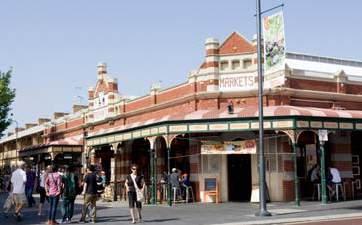

And beer lovers can’t go past waterfront frothies at the iconic Gage Roads and Little Creatures breweries.
Its position, stretching along the WA coast, means Freo has plenty of opportunities for outdoor activities. South Beach is a local favourite for swimming and the Fremantle Sailing Club caters to boating enthusiasts. The scenic Fremantle Esplanade is perfect for leisurely walks, picnics and enjoying the sea breeze (you’ll need a good coat for the cooler months – that breeze can be chilly!).
Flagship local events include the Fremantle Street Arts Festival, the Fremantle Heritage Festival and Wardarnji, which celebrates the beauty of Noongar culture with song, language, dance and story by First Nations artists. The Fremantle Arts Centre is a hub for cultural activities, offering exhibitions, concerts and workshops that cater to all interests.
Fremantle is also known as the home of live music in WA. Whether you’re into small basement bars, local jazz clubs, indie acts or bigger venues, there’s always live music to see. You can see a range of venues on the This is Fremantle website.
If you like to stay active and social, there are various clubs you can join. The Fremantle Bowls Club and the Fremantle Sailing Club offer social and recreational activities and The Meeting Place is a local centre that brings the community together with a range of unique courses, workshops, events and talks.
If you’d like to get involved in helping out in your new community, the City of Fremantle has a dedicated website listing current volunteer opportunities, with something for just about every interest.
Housing options in Fremantle are diverse, from heritage homes and modern apartments to luxury waterfront properties, so there’s something to suit everyone. If you’re lucky, you might even score a stunning view of the harbour or the Indian Ocean. If you’re after something in the inner city, just check what the noise levels are like at night, given Freo’s reputation for live music.
Healthcare in Fremantle is excellent, with Fiona Stanley Hospital providing a range of medical services and specialist care. And being so close to Perth means you have easy access to any additional medical facilities you might need.
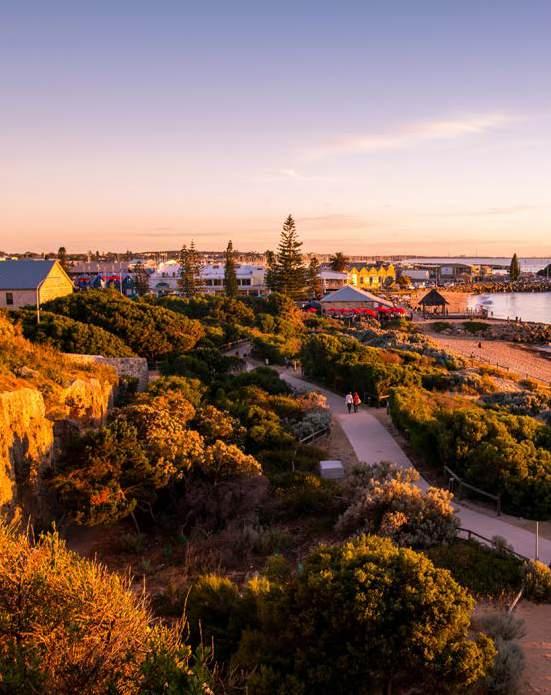
When retirement is on the horizon, downsizing is often the practical next step. For Howerd, the story was no different when he decided to sell his property in Perth.
At 70, Howerd decided it was finally time to step back from full-time work and unlock the equity in his investment property to fund a new chapter in life.
The Perth resident and his wife, Jan, still carried a mortgage on the threebedroom investment villa they’d bought in Banksia Grove back in 2007.
"The main reason to sell was that I wanted to retire," Howerd explained and rising property values in early 2024 had created the perfect window.
The first step of downsizing
Unsure of who to list with, Howerd turned to OpenAgent's agent comparison service. "I found it ideal," he said. "The first agent called back within an hour and came the same day." Local agent Carole Saville’s strong track record and gentle demeanour won his confidence on the spot.
He tackled a renovation and, on Carole's advice, secured retrospective approval for a previously built storeroom-turned-fourth-bedroom – an unexpected cost, but one that would maximise the sale price.
The campaign drew 18 groups through the first home open and produced two quick offers, both of which collapsed. One buyer withdrew to chase another property, while the next couldn’t secure finance.
Carole kept momentum high and, on the third pass, secured a cash buyer at $700,000, exactly the figure Howerd wanted. "Third time lucky – we sold."
Clearing the investment mortgage left Howerd and Jan with "an estate we didn't think we'd have." The funds are now invested, letting him step into full retirement.
Three days a week, he joins the local Men’s Shed – his latest project, a cubby house, has already found a buyer at a primary school – and he’s planning a month-long trip to New Zealand.
Looking back, Howerd says choosing an agent through OpenAgent made the process stress-free. "We felt [Carole] would act in our best interests and she did," he explained.
"Now, I can get on with what I want to do."
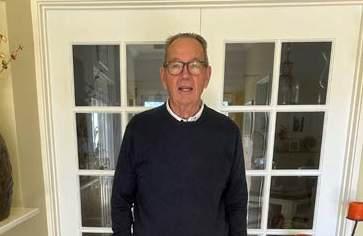
Carole offered some advice for downsizers who may find securing a new home challenging, particularly in a competitive market like Perth, suggesting three helpful scenarios:
• Pre-list and wait: photograph and prepare the current home so it can launch instantly once the downsizer finds something they like.
• A long settlement after sale: doable but risky for older owners, as they could be caught out if they haven’t secured the next place.
• A subject-to-finding clause: accept an offer that allows a set number of weeks to locate a new home, removing the risk for cautious vendors.
She added that the priority should be "presentation, presentation, presentation – always", and urged downsizers to "choose an agent that really understands your needs and wants" rather than simply chasing commission.
Summer 17°C to 29°C
Winter 8°C to 16°C
Average rainfall
550mm
Transport links

Affordability
Traditional custodians
The Kaurna people
Greenwith is a suburb in Adelaide that combines suburban living with close access to city amenities and facilities.
Why you might like it
Located just 23km from the Adelaide CBD, Greenwith offers a relaxed lifestyle surrounded by parks, walking trails and picturesque nature reserves. But you’re never far from the conveniences of Adelaide, with a direct train offering express services to the city.
Locally, The Stables Shopping Centre is located in Golden Grove, 2km from Greenwith. It has parking for 260 cars and includes a supermarket, medical centre, pharmacy and other variety stores.
Gallery 1855 is a communityfocused visual art space in Tea Tree Gully, with a number of exhibitions, workshops and events for the locals to enjoy. Workshops include art social groups, an artist circle, craft markets and clay lessons.
The City of Tea Tree Gully is always on the lookout for volunteers for the Active Ageing Transport program, community bus drivers and assisting with the delivery of the Children’s Wellbeing program.
• Hilly with lots of park area
• Close to City of Adelaide
• Plenty of public transport
Distance to nearest major hospital Modbury Hospital is 7.5km away
Distance from nearest capital city Adelaide, 20km
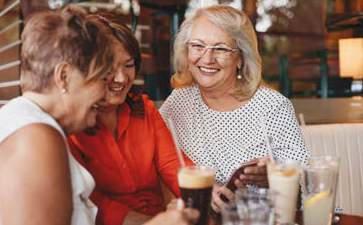
For an out-of-the-box way to scratch that creative itch, Scrapbooking with Faye is held every Friday evening in the neighbouring suburb of Holden Hill. The group encourages socialising, sharing your individual ideas and sharing a meal together.
The Greenwith Community Centre is owned and managed by the City of Tea Tree Gully and includes a number of community activities like adult education, special interest groups, seniors groups and fitness programs. The Gully Residents Group is on Facebook and an easy way to interact with the very active online community.
Italian Kitchen @ Two Twenty serves up authentic, homestyle Italian food. Menu highlights include the homemade arancini, slow-cooked beef Ragu and the prawn and pesto pasta. Golden Saigon is another standout, serving up Vietnamese-style street food that’s both delicious and reasonably priced.
Greenwith offers retirees a unique blend of peaceful suburban living with easy access to urban amenities. The abundance of parks and walking trails is perfect for a healthy, active lifestyle with morning strolls or just getting some fresh air. For nature lovers, the nearby Cobbler Creek Recreation Park provides stunning picnic spots, birdwatching, and bushwalking opportunities, fostering a deep connection with the natural environment.
Public transit in the area is reliable with bus links to Adelaide city and the surrounding suburbs. If driving is more your speed, use the nearby arterial roads for a simple and straightforward commute. Greenwith has the benefits of a more relaxed lifestyle while still having the convenience of being connected to the city, making it easy to visit family and friends.
Healthcare services are easily accessible, with medical centres located in adjacent suburbs, ensuring retirees have the support they need close to home. This combination of convenience, community, and natural beauty makes Greenwith an attractive choice for retirees seeking a relaxed yet connected lifestyle.

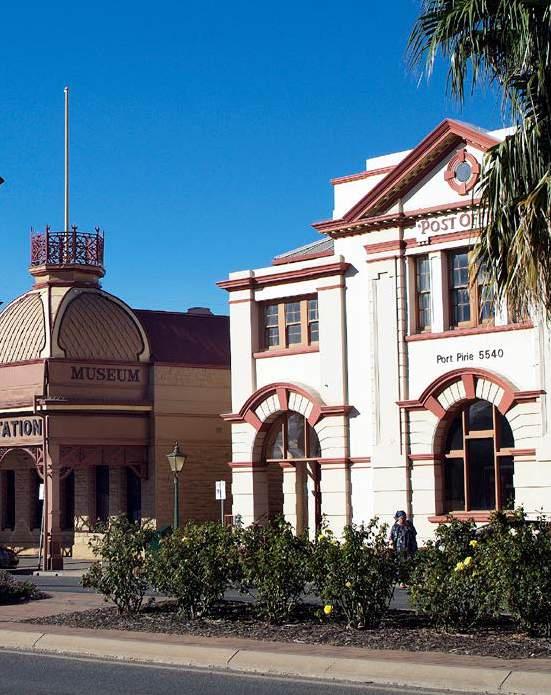
Summer 14°C to 24°C
Winter 8°C to 16°C
Average rainfall
610mm
Transport links
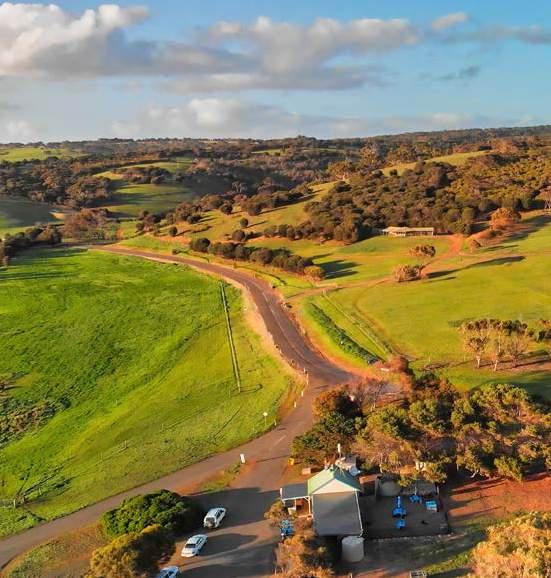
Affordability
Traditional custodians
The Ngarrindjeri and Ramindjeri peoples
Just off the South Australian coast is Kangaroo Island, the stunning home to the finest that the Australian wilderness has to offer.
Why you might like it
If the chance to see wild koalas, kangaroos and sea lions on a daily basis excites you, look no further than the glorious Kangaroo Island. A bustling hub on weekends and holidays, Kangaroo Island is a pristine and peaceful home for you and the myriad wildlife during the work week –island living has never been this lush!
The Kangaroo Island community is a small but tight-knit one, with a thriving creative culture, good healthcare and some of the most affordable waterfront properties in Australia.
The Penneshaw Pub is the unofficial home of beer and cheer on the island that also offers uninterrupted views over Backstairs Passage. With the choice of indoor and outdoor alfresco areas, there’s a countryside atmosphere like no other. The pub also has frequent specials throughout the week, such as $20 schnitty on Mondays or $24 steak on Wednesdays.
Kangaroo Island Council accepts volunteers on a regular basis in the admin and customer support areas. It’s a great way to meet locals on the island and make a real difference to communities in the area.
Median dwelling price
• Huge array of native wildlife
• Island living
• Quiet during the week
$506,297
Median weekly rent $410
Population 4,900
Distance to nearest major hospital Kangaroo Island Health Service is in Kingscote, Kangaroo Island
Distance from nearest capital city Adelaide, 156km
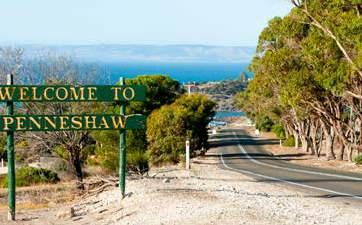
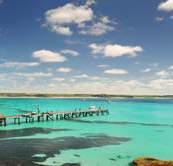
One of the more popular beaches perched in Kangaroo Island is Emu Bay Beach and is especially notable for its clear waters, long shoreline and direct vehicle access (unlike other beaches on the island). Emu Bay Beach is the perfect location for a sunrise stroll or a morning paddle, or even a bike ride if you like to get out for a pedal.
Fine Art Kangaroo Island is filled with the work of outstanding Kangaroo Island artists, with curated high-quality art pieces. Featured artists include Fred Peters, Janet Ayliffe and Jenny Clapson. It’s easy to get lost in the artwork for hours, with over 50 artists in total with connection to Kangaroo Island having their work showcased.
The Australian Red Gum Gallery is the gallery of Jonny Gloyne, who divides his time between turning wood and teaching others how to do the same. If you visit the gallery at specific times, you’ll be able to watch Jonny crafting another unique piece in real time. It’s an incredibly unique experience and one that’s cherished by locals across the island.
Kangaroo Island is also overflowing with dining options. Sunset Food and Wine is a modern bistro that overlooks American Beach. It was the first restaurant on Kangaroo Island to be awarded a Chef Hat. Menu options include poached oysters, lamb rump and even their famous baked honey custard tart for dessert.
For a more casual dining experience, Mille Mae’s Pantry offers specialty coffee, fresh baked goods, local foods, beer, wine and cocktails. Plus, the cafe is dog-friendly, so you can bring your furry friend along for an afternoon.

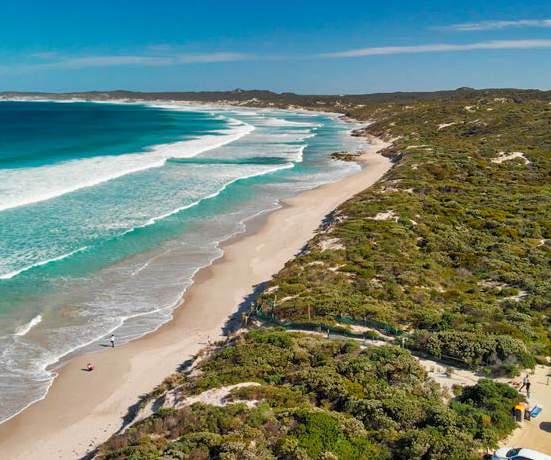
Summer 16°C to 28°C
Winter 8°C to 17°C
Average rainfall
612mm
Transport links
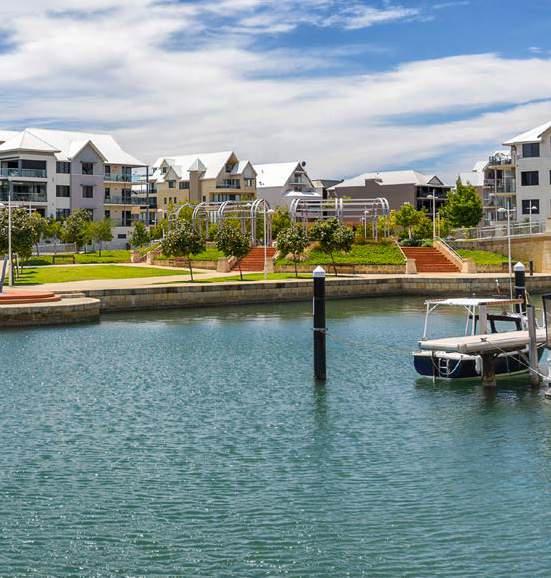
Affordability
Traditional custodians
The Noongar people
Mandurah offers a laid-back lifestyle with plenty of recreational activities. From leisurely strolls to exploring captivating murals, every day brings new opportunities for relaxation and adventure.
Why you might like it
Located less than an hour south of Perth, Mandurah is Western Australia’s second largest city. It’s a popular spot for Perth retirees to flock to, thanks to its laid-back lifestyle combined with proximity to city conveniences.
The foreshore is a wonderful spot to swim, stroll and watch the pelicans and dolphins play (over 100 dolphins call Mandurah home).
Tourism is big here, so you might have to share your town with visitors, but on the upside there are plenty of restaurants, cafes, shops and options for exploring the region. The range of waterways in the area have earned Mandurah the nickname of ‘Little Venice’. Along with its ocean beaches, the area is excellent for swimming, fishing and boating.
Median dwelling price
• Beach living
• City conveniences
• Laidback locals
Distance to nearest major hospital Peel Health Campus is 2.9km away
Distance from nearest capital city Perth, 72km

Outdoor living year-round
Mandurah’s Mediterranean climate means you can live an outdoor lifestyle all year round (although you’ll still need to rug up in winter) and – just like Perth – the city is built along the coast, so you’re never too far from the beach.
Living life on the water is second nature in Mandurah. You might like to spend time at one of the many pristine beaches, like the northern-facing Falcon Bay Beach, or the supervised Town Beach. Or for kilometres of clean sand and safe, calm waters, Silversands Beach is a winner.
The region also has some world-class golfing options, including The Cut. Teetering on the edge of the Indian Ocean, The Cut is Western Australia’s ‘must-play’ golf course.
Golfers are spoiled for choice here, so you can also play a round at Meadow Springs Golf and Country Club, Mandurah Country Club (watch out for the 50+ resident kangaroos on the course!) and Pinjarra Golf Club.
An active and creative life
If you’re into arts and crafts, Mandurah Arts and Crafts has a social group of ‘mature ladies’ who meet once a week, offering their crafty know-how and friendship to newcomers. It’s an easy-going group that welcomes newcomers with open arms.
The Mandurah Fishing and Sailing Club is a hub of the town and operates a 220-bay floating marina, as well as learn-to-sail classes, regattas and events.
Mandurah Bowling Club hosts the weekly Peel Community Bingo Club nights on Tuesdays, with the bowling club also offering a range of social and competitive bowling and special events.
And as well as the outdoor Olympicsized pool you’d expect, the Mandurah Aquatic and Recreation Centre has an impressive lineup of heated pools, gym equipment, fitness classes plus wet and dry sauna.
"Life's busy in a different way and it's meaningful," Lizzie says. "We don't miss the city for a second." Lizzie and Joe
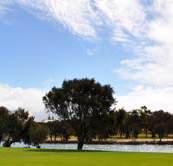
There are also plenty of galleries to visit and explore in the area. As a visitor, you won’t want to miss Thomas Dambo’s ‘Giants of Mandurah,’ a free outdoor exhibition of 5 giant wooden sculptures celebrating the extraordinary beauty and natural assets of Mandurah’s waterways, wetlands, bushland and wildlife. As a resident, you can volunteer to help keep this treasured art exhibit ready for show.
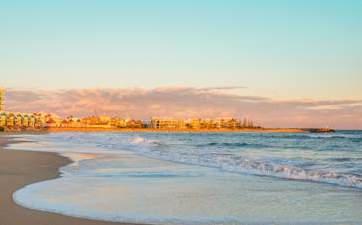
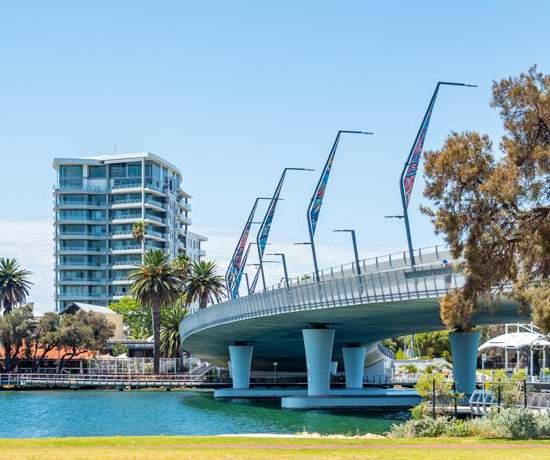
Summer 14°C to 29°C
Winter 6°C to 16°C
Average rainfall
742mm
Transport links

Affordability
Traditional custodians
The Peramangk people
Retire to the largest town in the iconic Adelaide Hills, with verdant landscapes, rich heritage and a relaxed country lifestyle – all within easy reach of Adelaide conveniences.
Why you might like it
As the largest town in the Adelaide Hills, Mount Barker is a wonderful lifestyle choice thanks to its serene landscapes, rich cultural heritage and comfortable country town vibe.
With a charming main street full of historical buildings, balanced out with a range of modern amenities, Mount Barker presents an inviting retreat for those escaping city life in favour of a more chilled-out lifestyle.
Located at the southern end of the Adelaide Hills, Mount Barker has now become a part of Adelaide’s commuter belt (it’s only 33km from the city centre), so you might find it busier than some other country town options, but with that comes the luxury of easy access to the city and plenty of places to shop, dine and explore.
Median dwelling price
• Lush hills lifestyle
• Good facilities
• Close to Adelaide
$828,005
Distance to nearest major hospital Mount Barker District Soldiers’ Memorial Hospital is in Mount Barker
Distance from nearest capital city Perth, 258km
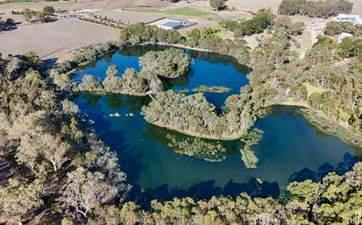
Despite its city access, life in Mount Barker unfolds at a leisurely pace, with that fantastic country living feeling. You just don’t have to sacrifice the urban conveniences you’ve come to know and love to live your country dream. The air is crisp here – you’ll need those thermals in winter – and the views are endless, with green rolling hills, mixed farming and lush vineyards all around. And let’s not forget the wines of the Adelaide Hills – the cool climate region is home to some of the country’s best pinot noirs and sparkling wines.
If you like an outdoorsy lifestyle without getting too sweaty, Mount Barker offers an array of outdoor recreational pursuits, from leisurely walks through Laratinga Wetlands to scenic drives along Mount Barker Summit Scenic Drive. There are countless opportunities to immerse yourself in nature, reconnect with the land and savour the region's tranquil ambience.
There are plenty of options for those wanting to maintain an active lifestyle in Mount Barker, including the Adelaide Hills Masters Cycling Club, the Mount Barker Swimming Club, the Mount Barker Croquet Club and the Aston Hills Golf Club.
There are also plenty of nonsporting clubs to join and classes to try, including arts and crafts, floral arranging, book clubs, 4-wheel drive groups and community sheds.
Mount Barker Council also runs a range of social programs, including Chat & Connect, bus trips, ‘Barker Blokes lunches, shopping, card groups, park walks and cafe and cinema visits.
The council also welcomes volunteers to help with a variety of services and programs. It’s a great way to meet locals and contribute to your new community.


Joseph, 67, and Colleen, 68, are proof that retirement doesn't have to mean slowing down. While many are ready to put their feet up for a well-deserved rest, this couple chose to follow their passion into the wine industry. They're working harder than ever – and loving every second of it.

Joseph and Colleen Delpeché have always had a sense of adventure. Originally from Sydney, Joseph and Colleen spent two years travelling around Australia and homeschooling their children, before packing up and moving to Perth. Then, after 16 years and with their children fully grown, Joseph and Colleen decided it was time for their next adventure.
With their son enrolled in a winemaking course that required him to travel to Mount Barker to pick grapes, Joseph and Colleen decided to go along and help.
"That sparked our interest and it grew from there."
Nine years ago, they bought Chatsfield vineyard – now home to Delpeché Wines – initially planning for their economics-graduate son to manage it. But when love intervened and he chose a different path, Joseph and Colleen found themselves committed to making it work.
This is far from your typical retirement story. For the first seven years of vineyard ownership, Joseph continued his mining work to fund the operation, while Colleen stayed at the vineyard, keeping their books.
Two years ago, at 65, Joseph finally "retired" from mining to work the vineyard full-time – but this hasn’t been about slowing down for him and Colleen. "It's a lot more involved than
what we thought," they admit. "We should have done a lot more research and possibly used other people to investigate the property, because there was quite a bit for us to do."
But Joseph and Colleen both say it’s been a labour of love. Their retirement involves everything from growing and harvesting grapes to bottling and marketing wine. "We put on all the hats. We grow it, we harvest it, we give it to the winemaker and once we get that bottle back, then we've got to sell it."
Joseph and Colleen love living at “beautiful spot” Mount Barker, although they’ve had to get used to bracing winters. "We're only 50 kilometres from the Great Southern Ocean, sometimes those Antarctic winds really hit."
But their efforts are starting to pay off. At the Australian Small Winemakers Show, they entered three wines and won silver and bronze medals. "We have a good product here," the couple says.
There is always more to do, with the couple planning to open their cellar door this summer, as well as sharing their wares at various food and wine shows across WA.
Their three children have all questioned their retirement choice at one time or another, wanting to see their parents relax and travel, as they’ve always wanted to do.
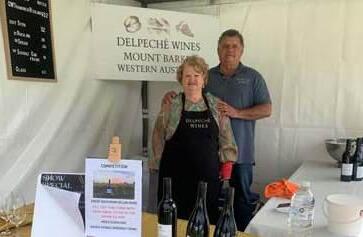
"Every one of them says, 'Sell it up. Go and enjoy yourself. Buy that cruise ticket,'" the couple says. "In some ways, we'd love to do that, but we have a fair bit of unfinished business. I think we can achieve quite a lot here."
If there’s a downside to their retirement choice, it’s distance from their family. "Our grandchildren are up in Perth, it’s wonderful when they come down, but we've distanced ourselves a little bit too far away from our grandkids."
There are many ways to embrace your retirement years and while some may be enjoying more traditional pleasures, Joseph and Colleen have chosen a path that gets them up every morning with purpose. "We love the lifestyle. We didn't set out to be millionaires here. It's our passion – we just want it to be sustainable."
Summer 11°C to 29°C
Winter 7°C to 16°C
Average rainfall
357mm
Transport links

Affordability
Traditional custodians
The Ngarrindjeri people
Murray River is filled with natural landscapes, a laid-back country atmosphere and a tight-knit, supportive community.
Why you might like it
Murray Bridge is built around the Murray River, which is a picturesque setting that allows for lots of fishing, boating and kayaking on calm waters. The Murray Bridge Discovery Trail is an easy walk around the region that runs through the fascinating history of the area, with 9 points along the way.
The Murray Bridge Water Discovery Trail is a leisurely journey along the Murray River to experience its culture, heritage and natural environment. The full-length route is 10.3km one way, but there are shorter segments to break it up into smaller chunks. Less than an hour’s drive away is the Adelaide Hills Wine Region, which is renowned for its events, cellar doors and wine tastings. The events in particular take place for locals and members only, including special event tastings, classes, lunches and dinners.
The Murray Bridge Golf Club is widely recognised as one of the best country courses in the state, set among lush greenery and lined with trees and water. Also on site is the Murray Bridge Golf Club bistro, which is now open for lunch on weekends. There are also weekly competitions: the Women’s competition on Tuesday, the Men’s competition on Wednesday, and the regular competition on Saturday.
Median dwelling price
Median weekly rent
• One of the fastest-growing regional areas in South Australia
• Relaxed, rural lifestyle
• Urban amenities
$532,303
$496
Population 22,349
Distance to nearest major hospital
Murray Bridge District Hospital is in Murray Bridge
Distance from nearest capital city Adelaide, 78km
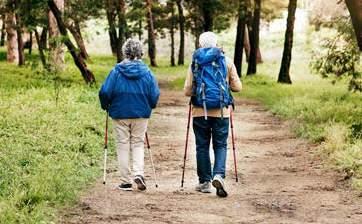

Fishing is a popular pastime in Murray Bridge and there are plenty of fishing spots to catch callop, redfin, yabbies and European Carp. Some of the more popular fishing boat ramps include Woodlane Reserve, Avoca Dell and Long Island Reserve. If you’re needing to hire a boat, Freedom Boat Hire is renowned in Murray Bridge for top-notch service.
For history buffs, the Captain’s Cottage Museum captures the history of Murray Bridge and surrounding suburbs. It’s home to an extensive collection of historic engines and farm machinery, model boats, train and toy exhibits and a photographic collection. It’s a great form of insight into the history of Murray Bridge.
The Murray Bridge Community Centre offers lots of different community activities including creative writing, crochet, mosaics and yoga. The community centre also offers different services for locals, including general legal services, tax help and referrals to organisations including The Haven Safety Hub, Relationships Australia and Baptist Care SA.
Located in the Murray Bridge Arts Precinct is the Murray Bridge Regional Gallery, offering a public program of craft workshops, artist talks and gallery tours throughout the year.
The gallery also co-hosts the annual Sixth Street Makers Market, with over 30 stalls coming together with a range of South Australian handmade and bespoke delights to support small businesses and local artisans.
The Rural City of Murray Bridge Council also hosts regular events and workshops to meet members of the community and bolster skills. Some of these include a yarn group, cafe sessions and regular Thursday night movies shown at the Murray Bridge Library.
When it comes to local amenities, Murray Bridge Marketplace is a shopping village with grocery stores, pharmacies, banks and other variety stores. There are also plenty of places to grab a bite or a drink. St George’s Bakehouse is a local cafe with breakfast, brunch, lunch and coffee options.
Murray Bridge is also home to Sturt Reserve, a haven for locals to soak up the weather, go for a stroll, or simply enjoy some sun time.
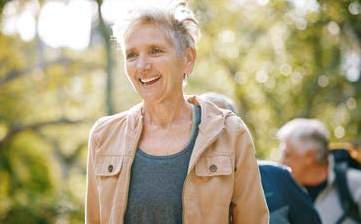

Summer
15°C to 26°C
Winter
7°C to 17°C
Average rainfall
468mm
Transport links

Affordability
Traditional custodians
The Ramindjeri and Ngarrindjeri peoples
Victor Harbor is a coastal gem with abundant recreational options. Step back in time and enjoy the simple life of beach strolls and local markets, all about an hour from Adelaide.
Why you might like it
Perched on the postcard-worthy Fleurieu Peninsula, Victor Harbor beckons with its breathtaking coastal vistas, relaxed seaside ambience and abundant recreation options.
If pristine beaches, charming heritage architecture and a vibrant community spirit sound good to you, Victor Harbor is definitely worth considering as your seachange haven.
Start your days with a leisurely stroll along the iconic Granite Island Causeway, etched with Indigenous artwork linked to Dreaming stories, where you can breathe in the sea air and take in panoramic views of Encounter Bay.
Walk the circumference of Granite Island on the Kaiki Walk, a 3km coastal trail, climb the bluff to watch the sunrise, or walk along the track to Kings Head to watch the waves crashing on the rocks.
• Vibrant seaside town
• Abundant wildlife
• Close to the city
Distance to nearest major hospital Victor Harbor Hospital is in Victor Harbor
Distance from nearest capital city Adelaide, 82km
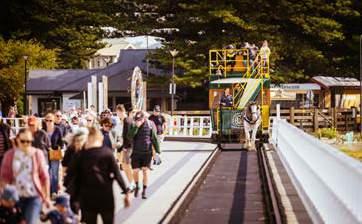
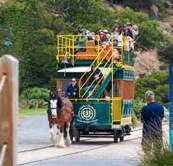
Fairy penguins and a unique tram
You can also take The Horse Drawn Tramway to Granite Island and try to spot the wild colony of penguins that inhabit the shores. In town, the Victor Harbor Farmers Markets are a leisurely way to pick up the week’s fresh produce or browse the stalls.
There are plenty of opportunities to connect with nature here, with swimming and surfing at Granite Island and Middleton Beach and coastal walking tracks along the Heysen Trail (the entire trail is 1200km but you can just choose a local segment).
Fishing is a popular pastime here all year round, but from December through to March each year people flock here to fish for tuna. The Victor Harbour Fishing group is a great way to meet other enthusiasts.
There are also a couple of good golf courses: McCracken and Victor Harbour golf courses –why not join both?
Victor Harbour RSL hosts regular dinners and social events, Victor Bowls is a hive of activity and friendly competition for beginners and veterans alike and Fleurieu Pride provides connection and social events for LGBTIQ+ people in the community.
It’s a sign of its growing population that over the past few years Victor Harbour has become home to many major stores, including Bunnings and Aldi. So everything you need is right here. If you can’t find what you need, it’s just over an hour’s drive to Adelaide on the A13.
The weather here is milder than Adelaide and it gets a fair amount of rain, but the benefit is that in winter you can enjoy crisp 20-degree days and pretty much have the beach to yourself... and your new local friends, of course.
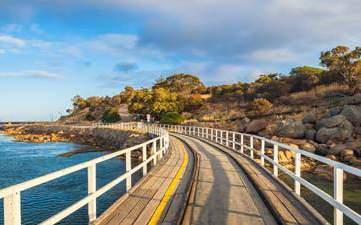

Summer 17°C to 28°C
Winter 9°C to 16°C
Average rainfall
370mm
Transport links

Affordability
Traditional custodians
The Narungga people
This historic port town may be small but it packs a visual punch thanks to its position on the stunning Yorke Peninsula. An old mining and shipping town, it’s now popular with tourists and locals alike.
Why you might like it
Wallaroo claims to be one of South Australia’s most popular seaside resorts and it’s easy to see why. Just 160km north of Adelaide, Wallaroo boasts long, wide northern beaches, a multi-million dollar marina complex and plenty to keep you busy.
The town was built during the copper mining boom in the late 1800s (they don’t call it the Copper Coast for nothing!) and was once home to the largest smelting complex in the southern hemisphere. These days it’s a popular holiday town which a lucky few get to call home all year-round.
Wallaroo is a great spot if you like the outdoor beach lifestyle, with beach swimming, fishing and diving all being popular local pastimes. North Beach is huge, spanning 2.3km and it has a gradual slope into the water, so it’s a calm, safe swimming spot.
You can also drive on the beach and even at the busiest times, there’s plenty of room for everyone. The ironically named Office Beach is safe for swimming too and is conveniently located near the town centre, with shade sails to provide comfort and protect you from the sun.
Median dwelling price
• Cornish heritage
• Excellent fishing
• Beautiful, unspoiled beaches
$518,248
Median weekly rent $448
Population 4,426
Distance to nearest major hospital
Distance from nearest capital city
Wallaroo Hospital and Health Services is in Wallaroo
Adelaide, 160km

A favourite activity among tourists and locals alike is the Wallaroo Silo Light Show, which is on nightly. The themed show is projected onto the end of the painted silos in the township just after sunset and is best viewed from Jetty Road.
Unsurprisingly, given its location, Wallaroo is also a favourite spot for fans of fishing, with snapper and whiting in abundant supply and it’s also an excellent area for squid when the water is clear.
Wallaroo Jetty is a popular fishing spot, extending 869 m into the pristine waters and – if you don’t get a nibble – you can always grab a pie at the local favourite Jetty Road Bakehouse afterwards.
Sailing is also a popular activity in the area, with the Wallaroo Sailing Club running competitions, races and social activities.
The Copper Coast Dragon Boat Club also welcomes new members for competitive or social dragon boating. The Wallaroo Community Sports Club complex is a local hub that offers bowls, croquet and golf for members and visitors.

Copper Cove Marina is a relatively new complex that is one-third the size of the original town. For a lucky few it offers homes with their own pontoons, for the rest of us it’s home to Coopers Alehouse, where you can enjoy a local beer and a meal with spectacular gulf views.
You’ll find everything you need for your everyday needs in Wallaroo including supermarkets, a post office and health professionals such as chemists, doctors and dentists. There are also cafes, restaurants, bakeries and other spots that can make your seaside life that bit more fun.
While there’s heaps to do in town, the ferry across the Spencer Gulf provides easy access to Lucky Bay without the long drive.

Summer 19°C to 28°C
Winter 11°C to 18°C
Average rainfall
612mm
Transport links

Affordability
Traditional custodians
The Whadjuk Noongar people
Wellard is known for its community atmosphere, amenities and easy access to public transport.
Why you might like it
For suburban living blended with city and coastal access, Wellard ticks all of the boxes and even more conveniently, it’s just 38km from the Perth CBD.
Amenities-wise, all the essentials are just a stone’s throw away. Wellard Square offers a convenient mix of shopping, medical services and dining options. It’s also home to a Community Hub where regular groups and clubs are hosted.
Wellard has plenty of green space, including Wellard Park in Kwinana. With lots of park benches, picnic tables and shaded areas, it’s the perfect location for a leisurely stroll or some fresh air.
Median dwelling price
• Affordable suburban living
• Easy access to Perth CBD
• Proximity to coastal beaches
$706,087
Distance to nearest major hospital Fiona Stanley Hospital is 15km away
Distance from nearest capital city Perth, 31km

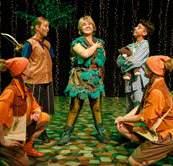
The John Wellard Community Centre offers a range of creative, educational and social programs for residents. Tech workshops, yoga classes and sewing groups are a few of the activities on offer. Nearby, in Kwinana, the Choir for the People is hosted at the Koorliny Arts Centre. It’s the perfect opportunity to start a new hobby or to further develop your singing skills.
For a pub meal, The Wellard is a farm-totable venue that’s open daily from 11am. The venue also runs regular events, such as competitions, special event set menus and live music every Sunday.
There are a lot of opportunities to volunteer in Wellard and surrounding suburbs too. The City of Kwinana’s Volunteer Centre is always looking for people to help out in a range of spots. Wellard’s Red Cross store is also always happy to welcome volunteers.
You’re also sure to find a community group to suit you in Wellard, including the Kwinana Heritage Group, Kwinana Model Railway Club, Rotary Club of Kwinana and the WA Guild of Woodcarvers.
Wellard is also close to two of Perth’s most popular beaches: Rockingham Beach and Kwinana Beach.
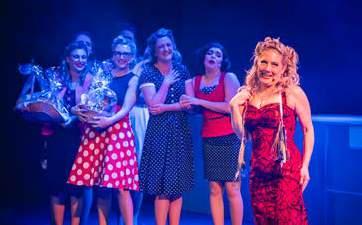
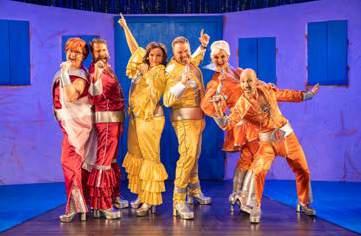


With affordability, history and coastal living at the forefront, Australia’s island state has its own unique beauty to bring to the table.

Summer 14°C to 20°C
Winter 7°C to 12°C
Average rainfall
468mm
Transport links

Affordability
Traditional custodians
The Bundjalung, Gumbaynggir and Yaegl peoples
With preserved streetscapes and a vibrant arts scene, Clarence is home to pretty historic villages like Richmond and Cambridge.
Why you might like it
On the eastern shores of the Derwent River, Clarence is one of the 5 municipalities that make up Greater Hobart.
The Clarence district encompasses the smaller towns of Cambridge, Richmond and Seven Mile Beach and it offers a relaxed coastal lifestyle with easy access to both urban amenities and natural wonders.
There’s a strong arts scene in Clarence, with historic site Rosny Farm (built around 1806) being converted into Rosny Farm Arts Centre, a vibrant hub for a range of music, art exhibitions and workshops.
Median dwelling price
Median weekly rent
• Historic villages
• Lush surroundings
• Close to Hobart
$730,270
Distance to nearest major hospital Royal Hobart Hospital is 12km away
Distance from nearest capital city Hobart, 5km

Village life across Clarence
Richmond is one of Australia's most authentic and well-preserved Georgian villages in the Clarence district, with the country’s oldest Roman Catholic Church and oldest bridge, built in 1823 and still in use today.
Richmond also has great shopping and dining and is home to some excellent wineries. Richmond Art School offers regular classes for adults.
Visit the Richmond Village Market every Sunday for local produce and crafts sold by Tasmanian artisans.
Bellerive Village is a great spot for dining (don’t miss Belle’s Burgers) and strolling by the sea. It’s also home to Bellerive Oval, one of Tasmania’s largest sporting grounds.
Lindisfarne is another vibrant hub of shops, cafes and parks and South Arm Peninsula is a busy beachside community with monthly markets, an RSL, a pharmacy and a bustling community centre.
If you like a good stroll (or power hike), the Clarence Foreshore Trail is a 14.5km path that follows the bayline from Geilston Bay to Howrah, through parklands and beaches, with weeping willows, yacht-watching and salty ocean air to pull you along.
Fitness in the Park is a free fitness group in Richmond Village Green park where anyone is welcome. For country music fans, Clarence Country is a fun weekly live music event with local musicians gathering to play any country song by request.
Clarence has a strong community feel and there are plenty of groups to join, like the Coal River Valley Garden Club or the Coal River Valley Sustainable Living Club.

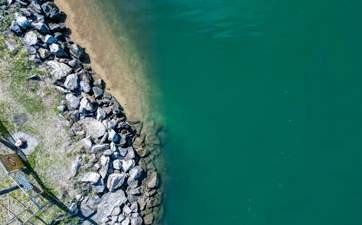
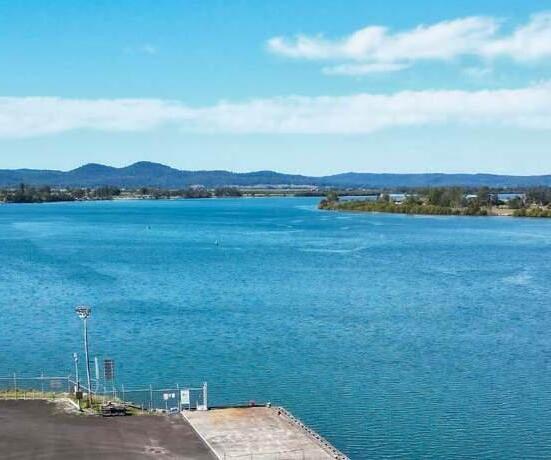
Summer 9°C to 21°C
Winter 2°C to 11°C
Average rainfall
745mm
Transport links
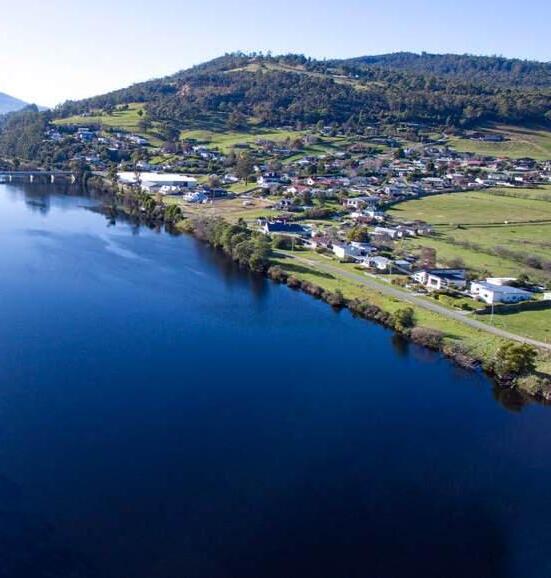
Affordability
Traditional custodians
The Melukerdee and Lyluequonny peoples
Just a stone’s throw from Hobart, Huonville offers a dreamy rural lifestyle with a thriving artisanal community and stunning landscapes.
Why you might like it
Mainlanders who visit Tasmania often fantasise about retiring to the Apple Isle and places like Huonville that feed the fantasy.
Huonville is the best of that great Tassie dream: green grass, ancient forest, rich pastures, four seasons, stunning river and loads of wildlife –all just half an hour from the modern conveniences of central Hobart.
What really sets Huonville apart is its people. Retiring here means not only surrounding yourself with beauty, but also with people who value creativity, connection and sustainability.
The town is known for its strong sense of community, where neighbours quickly become friends and it’s easy to feel part of something bigger. The Huon Valley has long been a haven for artists, makers and creative types drawn to the slower pace and natural beauty. You’ll find local galleries, artisan workshops and weekend markets filled with everything from hand-thrown ceramics to awardwinning cider, honey and cheeses.
• Artisanal community
• Rural living
• Peaceful surroundings
Median dwelling price $651,879
Median weekly rent
Distance to nearest major hospital Calvary St John’s Hospital is 37km away
Distance from nearest capital city Hobart, 38km
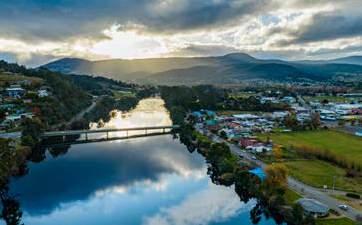
WHO
– YOU’LL LOVE THE SUMMER SUN, THE STUNNING COLOURS OF SPRING AND AUTUMN AND EVEN SOME WINTER SNOW.
Huonville has a vibrant artisanal community, with local producers, artists and crafty types showcasing their talents and wares throughout the valley.
You’ll find plenty of locals selling their produce in roadside stalls, as well as at a range of bustling weekly markets throughout the area.
At the markets you’ll also find local cheese producers, woodworkers, potters and artists and there’s a range of galleries and studios you can visit as well.
It’s no wonder there’s so much art inspired here, everywhere you go in Huonville seems to have spectacular views of the verdant surroundings. The tannins in the Huon River (a result of the abundant buttongrass planes) give it a reflective surface you won’t be able to resist photographing.
And, as a local, you’ll become accustomed to seeing wildlife everywhere you go – including wedgetailed eagles, pademelons, wallabies, echidnas, quolls and Tassie devils.
It’s said that, if you have a dam on your property, odds are you also have at least one platypus.
If you’re a bushwalker, you’ll be spoiled for choice and also part of a thriving community. You can do some of the more popular walks – from entry-level to day-long adventures – with the help of the Huon Valley Council.
Springtime brings blankets of flowers to the cottage gardens and orchards across the valley and summer is a great time to get out on the water, fishing, yachting and – for those brave enough – even swimming.
While housing prices appear similar to that of the city, properties out here tend to be larger or more attractive, with many offering acreage or water views. It’s not uncommon to grow your own veggies, along with raising some animals such as chickens, goats, horses, sheep – or perhaps even an alpaca or two.

But what makes Huonville a wonderful place to live is its sense of community. It’s welcoming to everyone and people care about supporting one another and preserving this pristine environment. There is a range of social groups welcoming newcomers as ‘Huon Beings’ on the Huon Valley Council page.
And wine lovers will find some of Tassie’s best cool climate pinot noirs, chardonnays, rieslings, shiraz and pinot gris in the area.
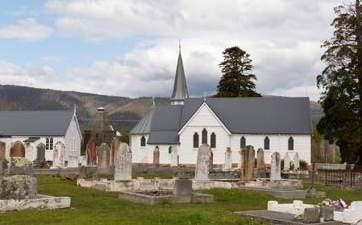
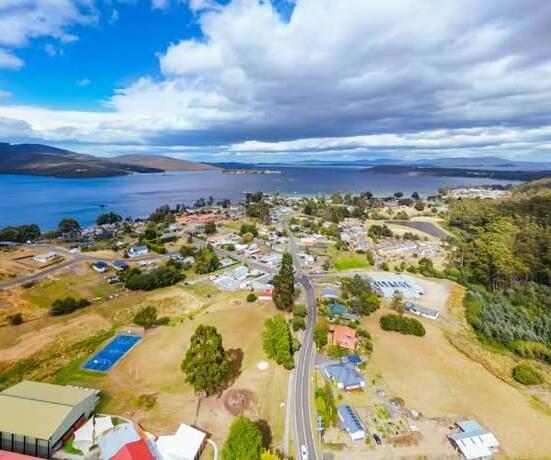
Summer
11°C to 23°C
Winter 2°C to 12°C
Average rainfall
665mm
Transport links

Affordability
Traditional custodians
The Palawa peoples
This northern Tasmania city boasts walkable streets and the stunning Cataract Gorge. It’s also a UNESCO City of Gastronomy with a thriving food and wine scene.
Why you might like it
In the heart of Tasmania's northern countryside, Launceston beckons with historic charm, natural beauty and a flourishing cultural scene.
And, sure, while it’s clear that pretty much anywhere in Tasmania can lure you with history, nature and culture, Launceston is special. As the nation’s third-oldest city, it’s home to loads of historic architecture and an extra-rich history.
Known as Lonnie or Launnie to the locals (the spelling is a hot topic of debate), Launceston is on the larger side, with a population of over 70,000, so it has all the urban comforts you want, plus a tight-knit international community, where neighbours become friends and newcomers are embraced with open arms.
Median dwelling price
Median
• Historic homes
• Beautiful nature
• Riverside living
$534,069
Distance to nearest major hospital Launceston General Hospital is in Launceston
Distance from nearest capital city Hobart, 200km
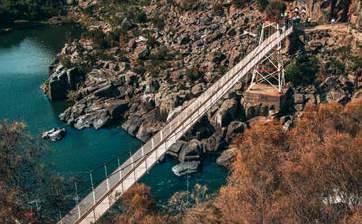

What’s great about living in Launceston is that it’s easy to stay healthy and active.
For theatre lovers, Albert Hall is a large convention centre with high Victorian architecture and is known as a landmark and popular meeting spot of the area. The Princess Theatre and Earl Arts Centre is a well-preserved traditional venue that presents a wide program of theatre and dance celebrating local culture.
You’ll also find the stunning Cataract Gorge just a short stroll from the city centre. This true urban wilderness is 5km of forested river reserve wrapped around a dramatic gorge. Cataract Gorge is thought to be about 65 million years old and is said to be a place of peace.
You can sit under an ancient tree and soak up the area’s natural beauty, go for a swim, visit the tea rooms, or take the Gorge Scenic Chairlift for a bird’s eye view of the entire scene.
Launceston also has a thriving food, fermentation and drinks scene (it’s a UNESCO City of Gastronomy – and if you didn’t know that was a thing, it just means it's one of only 49 cities in the entire world notable for its foodie scene).
Take advantage of that at Harvest Market, where you can pick up a fresh bottle of milk straight from the farm, buy ethically farmed salmon at 41 South and dine in a converted watermill at Stillwater Restaurant, one of Tasmania’s most awarded restaurants.
And if you’re into wine, the famous Tamar Valley is only a 15-minute drive away.
Tamar Valley also prides itself on being ‘the good kind of quirky’ – boasting that in one day you can visit a nudist beach, try the world’s largest jumping pillow, visit a gravelly beach, see a turbo chook, pat a pig, see Australia’s oldest colonial graffiti, visit a museum where 13 million ounces of gold have been produced and drive Australia's longest navigable estuary. That may sound like a big day, but imagine what you could accomplish if you lived here!
If you want to get involved with your new Launceston neighbours, there are plenty of events you can join in, from yoga to community art projects. Check out the local council page for a full calendar.

Summer 12°C to 23°C
Winter 5°C to 16°C
Average rainfall
724mm
Transport links
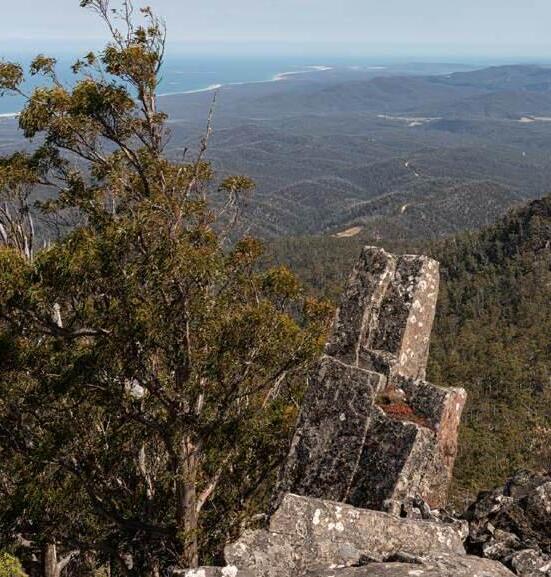
Affordability
Traditional custodians
The Palawa (Paredarerme) peoples
Discover the charm of small village life in St Marys, surrounded by a stunning mix of beach and bush.
Why you might like it
If you love all that Tasmania has to offer and want to embrace a village lifestyle, St Marys on the east coast could be exactly what you’re looking for.
Combining beach and bush beauty with a strong artsy feel, St Marys is a quaint and friendly hamlet between Bay of Fires and Freycinet National Park.
This is a quiet area where boating, fishing and bushwalking are the collective loves. For avid hikers, making it up St Patrick’s Head will reward you with 360-degree views of the valley and the entire coast.
As with any small town, St Marys is not a place to move to if you value your anonymity, but it could be for you if you love the idea of a town that stops for a chat, genuinely cares how you are and is always ready to lend you a cup of sugar.
Median dwelling price
Median weekly rent
Distance to nearest major hospital
• Beach and bush
• Tiny rural locality
• Affordable acreage
Helens District Hospital and Community Centre is 36.5km away
Distance from nearest capital city Hobart, 220km
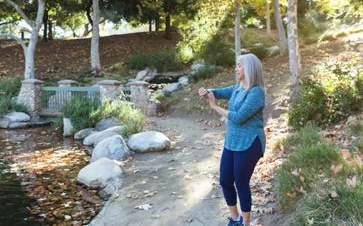
Heritage homes with a modern-day mindset
St Marys was once a convict working station and you can still see many convict-built buildings along Main Street.
Much of the action centres around the shops and cafes in the centre of town – and, of course, St Marys Hotel, where a staggering 130 people are members of the social club – almost 20 per cent of the population!
The hotel hosts regular events like dinner parties, Christmas in July, karaoke nights and live music.
The Break O’Day Regional Arts organisation brings the community together through regular events such as markets, live music, food stalls and celebration of the local arts culture.
Avid car enthusiasts will want to spend a bit of time at the Cranks and Tinkerers Museum, located inside the St Marys train station, which has interesting displays of old cars, motorbikes, planes and boats.
St Marys Repurposing & Upcycling hosts regular workshops for the community to learn how to restore and upcycle their belongings.
You’ll find a selection of older style and heritage homes in St Marys that are much more affordable than in Hobart, or even Launceston or Huonville. Just make sure you have good insulation and heating – winter temperatures often dip below zero.
While residents once went to nearby St Helens for their shopping, St Marys is now equipped with a chemist, several cafes, a service station, a news agency, a hardware store and two IGA supermarkets. So you may not need to borrow that cup of sugar after all...
*Due to St Helens small size, this data is combined: St Helens – Scamander.
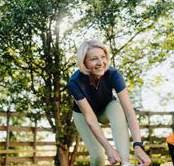


There’s something for most in Australia’s southern mainland state, with tons of bushland, coastal and rural options.
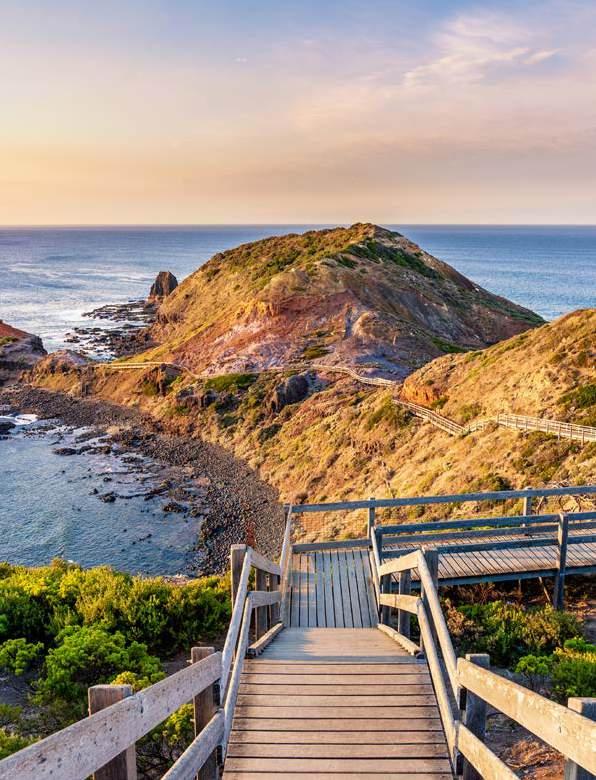
Summer 14°C to 28°C
Winter 3°C to 12°C
Average rainfall 934mm
Transport links
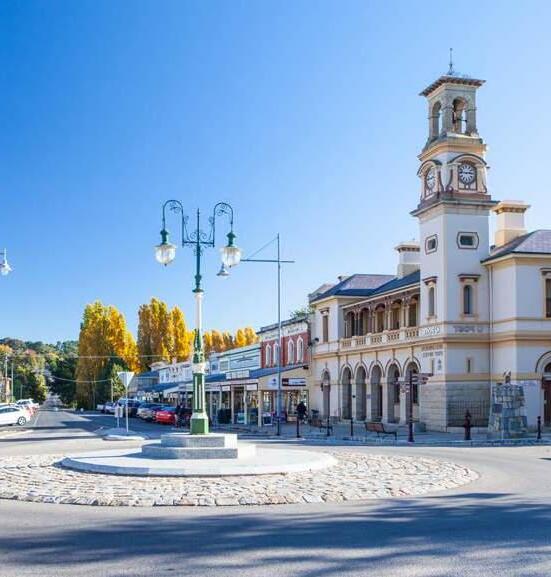
Affordability
Traditional custodians
The Pangerang people
Located in Victoria’s High Country is Beechworth, which is home to history, heritage and lots of wineries and restaurants.
Why you might like it
Those who love culture with a touch of historical atmosphere will find solace in Beechworth, where opportunities to connect, relax and wander are plentiful.
For a stroll to get to know the area, there are plenty of easy walks surrounded by lush trees and beautiful bushland. The Mayday Hills Ha-Ha Wall Walk is a half-hour circuit around a historical landscape and beautiful garden, with history peppered at every turn. Another option in Mayday Hills is the White Oak Walk, which is a 45-minute stroll through the 27 acres of garden that make up Mayday Hills.
Median dwelling price
Median weekly rent
• Historical charm
• Friendly locals
• Vibrant food scene
$777,662
$530
Population 3,290
Distance to nearest major hospital Wodonga Health – Wodonga Campus is 30km from Beechworth
Distance from nearest capital city Melbourne, 300km
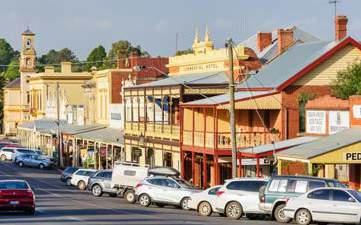
The Beechworth Historic Precinct is a treasure trove of artefacts and stories. The Burke Museum tells the story of the town in the Gold Rush era, including a nineteenth century recreation of the “Street of Shops”. There are over thirty thousand items on display, all of which tell the story of your new home.
The Beechworth Chinese Gardens celebrate and honour the rich Chinese heritage of the town. Designed with Feng Shui principles in mind, the series of ponds, plantings and peaceful places makes for a day well spent.
Vineyards are plenty in Beechworth, with one of the most notable being the Indigo Vineyard Winery, located in the heart of the Beechworth Wine region. They’re most known for their winery lunch experience that combines tastings with pizza, platters and beautiful farmland views. Another standout is Castagna Vineyard, with tastings available by appointment. Once you live here, you can work your way through them all.
with an extensive menu on hand, Bridge Road Brewers has all that and more. There are twenty housebrewed beers available, as well as a curated selection of wine, gin and whisky, all local to the region. The accompanying pizzeria is also one of the best in the area.
For that community feel, Quercus Beechworth is designed for locals to come together, build and socialise. Their Repair Cafe takes place on the first Saturday of each month and it’s the place to visit if an item needs repairing. There’s also a free fortnightly IT Help Desk for all members of the community having trouble with data recovery, troubleshooting software, or simply those wanting to level up their IT knowledge.

Beechworth Dancing is a weekly function where attendees can learn and practice social ballroom dancing, including the waltz, foxtrot, rumba, cha cha and more. All dance abilities are welcome.
The Quercus Community Garden is filled with flowers, Australian natives, vegetables, herbs and fruit trees. Aside from actively gardening, it’s also a great place to relax and unwind. You can even take home produce from the garden, including herbs or green vegetable leaves.
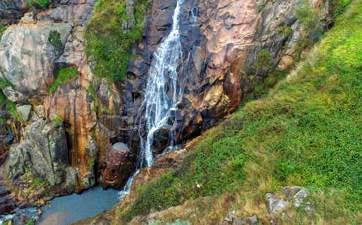
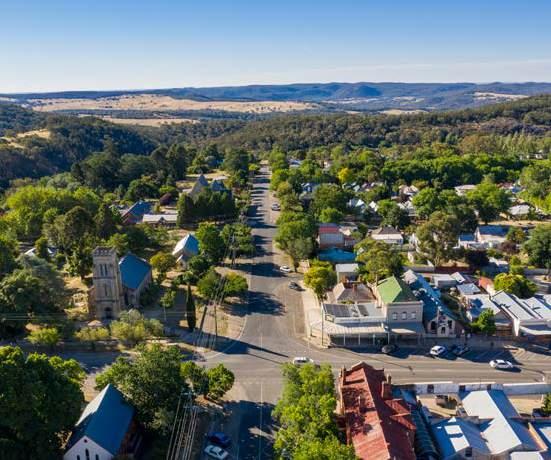
Summer 17°C to 28°C
Winter 7°C to 16°C
Average rainfall
760mm
Transport links
Affordability

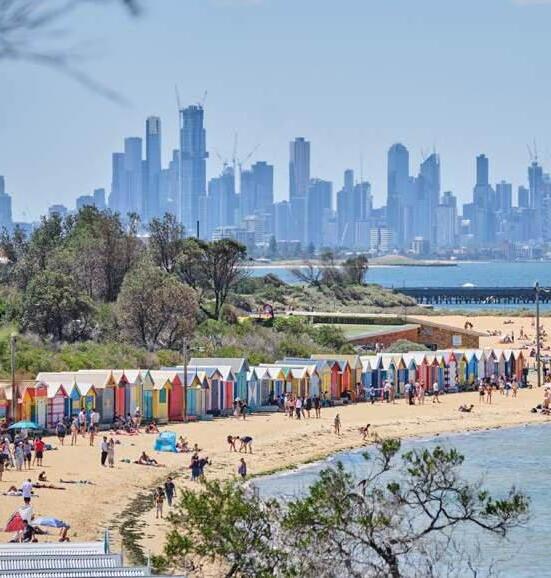
Traditional custodians
The Bunurong people
Brighton’s iconic beach is the perfect backdrop for seaside living, with top-notch dining, boutique shopping and plenty of opportunities for socialising and staying connected to your local community – all just a short tram ride from Melbourne’s CBD.
Want a luxe beach lifestyle without sacrificing the sophistication of metropolitan Melbourne living? Brighton is your answer.
Iconic Dendy Beach in Brighton is home to 82 colourful bathing boxes, which have graced countless postcards and tourist slide nights and the beach itself is a wonderful place for your daily walk, with its city views and calm waters. The nearby heritagelisted Bathers’ Pavilion has restaurants, shops and event spaces – whether you’re after a post-swim ice cream, an intimate meal, or even a private dining space. The two-chef-hatted Bathers’ Restaurant is a local highlight.
Brighton has much more to offer those who enjoy dining out, with a vibrant dining scene along Church St and beyond. Enjoy gourmet meals at renowned spots like the White Rabbit, Bottarga and Botticelli. The area also has some wonderful boutique shops, galleries and specialty stores for you to explore.
Median dwelling price
Median weekly rent
• Convenient city access
• Incredible transport options
• Top-notch healthcare
$2,073,383
$1,112
Population 23,252
Distance to nearest major hospital Cabrini Brighton Hospital is in Brighton
Distance from nearest capital city Melbourne, 10km
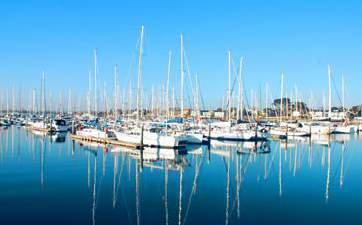
An outdoor, thriving community
If you like to get out in the sunshine, the Royal Brighton Yacht Club is perfect for sailing enthusiasts and it also has a popular bar and restaurant for continuing the socialising on dry land. If land is more your thing, Dendy Park and Elsternwick Park are green spaces perfect for walking, picnicking and enjoying the outdoors. If you’re a golfer, you’ll love your new local, Brighton Golf Course, which tests every level of golfer, with its narrow fairways and small, wellbunkered greens.
The community in Brighton is active and vibrant, with the Brighton Bayside Life Activities Club, a retiree group, welcoming new members to join their social activities, from walking and cycling to board games and movie and theatre outings. Brighton Library also hosts events and programs, offering a way to join your local community and participate in continuous learning.
The Brighton Baths are a wonderful place to stay fit and active, with the scenic ocean pool being one of only two remaining sea baths in Victoria. After your swim, you can retire to the health club for group fitness classes, personal coaching and the healing powers of its steam room.
Healthcare in Brighton is top-notch, as you’d expect from any Melbourne suburb, with a variety of medical centres and services. Cabrini Brighton Hospital is your closest hospital and the Cabrini Hospital in Malvern is the closest for emergency services, just 9km away.
Housing in Brighton provides a uniquely appealing streetscape, with a range of Edwardian and Victorian period homes sitting alongside modern townhouses and apartments. No matter what your housing preferences, you’ll find a home you’ll love in Brighton.
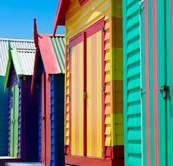

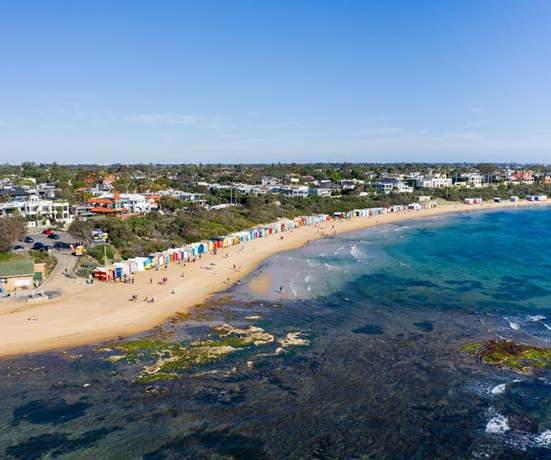
Summer
16°C to 32°C
Winter 4°C to 13°C
Average rainfall
465mm
Transport links

Affordability
Traditional custodians
The Yorta Yorta people
Echuca is Australia’s paddle steamer capital and offers gentle living among ancient river red gums on the banks of the Murray and Campaspe rivers.
Why you might like it
If you ever dreamed of running away to live on a paddleboat on the set of All the Rivers Run, Echuca could be the escape you’re looking for.
Located at the junction of the Campaspe and Murray rivers on the Victoria-New South Wales border, Echuca is Australia’s renowned paddle steamer capital. It’s also the joining place for the Barmah National Park and the Murray Valley National Park, forming the world’s largest river red gum forest. The area is popular for camping and is also an important place for the Yorta Yorta people.
You’ll often see Echuca mentioned in the same breath as Moama, which is its twin town across the New South Wales border.
• Riverside living
• Historic town
• Welcoming community Median dwelling price
Distance to nearest major hospital Echuca Regional Health is in Echuca
Distance from nearest capital city Melbourne, 223km

As you would expect, the town is full of historical buildings that house shops and cafes, including the riverside Star Hotel, which does great wood-fired pizzas and regularly hosts live music.
It also still has the underground escape tunnel, which led out to the back alley, so drinkers could escape police raids after the pub lost its licence in 1897 (it’s all above board now, don’t worry; you can leave by the front door).
There is also an emerging foodie scene in Echuca, with new restaurants and cafes springing up regularly and a range of craft breweries, wineries and a gin distillery to keep you busy.
The Echuca Moama website keeps an updated list of appetising local options.
And while we’re on the subject, it’s worth noting that the Great Aussie Beer Shed and Heritage Farm Museum is an interesting look at Australia’s brewing history, with one of the nation’s largest collections of beer memorabilia.
Summers are hot and dry, which makes Echuca the perfect site for a range of river activities, including swimming, kayaking, paddleboarding, skiing, boating and fishing.
The Echuca Moama Fishing Club welcomes new members and can tell you the best spots to find Murray cod, yellowbelly and silver perch.
Echuca Bowls Club also welcomes new members and it’s a great place to meet the locals and have a drink and some fun. They also welcome volunteers to help out.
The town has everything you need for a comfortable day-to-day life, including cinemas, supermarkets and good medical facilities. The nearby Moama Markets are held fortnightly and are a great place to pick up fresh produce and tasty treats from over 120 stalls.
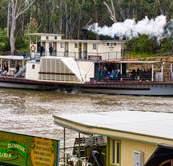
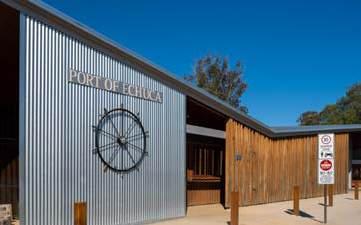
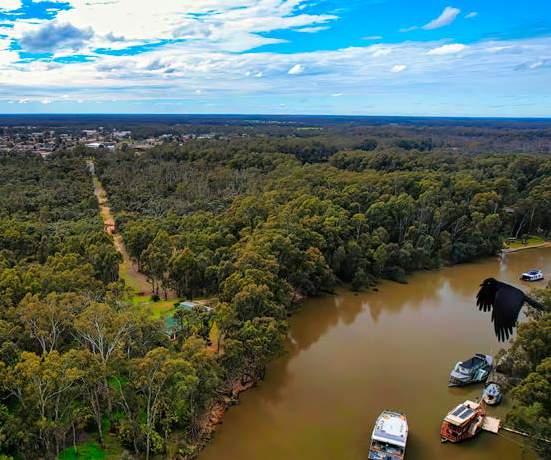
Summer 12°C to 26°C
Winter 4°C to 13°C
Average rainfall
647mm
Transport links

Affordability
Traditional custodians
The Wurundjeri people
Retire to Gisborne, where city amenities meet country charm, just a short drive from Melbourne. Enjoy the tranquillity of tree-lined streets and lush parklands among the majestic Macedon Ranges.
Why you might like it
Gisborne may only be a 45-minute drive from Melbourne, but it feels like stepping into another world.
It’s a town of distinct seasons, comfortable country homesteads, treelined streets and lush parklands set in the majestic Macedon Ranges – all with the amenities you expect from a modern town.
Think of all of the natural beauty of Picnic at Hanging Rock (located a short drive down the road)... only without the mysterious disappearances.
Median dwelling price
• City meets country
• Majestic Macedon Ranges
• Short drive to Melbourne
$955,974
Median weekly rent $665
Population 10,142
Distance to nearest major hospital Sunbury Day Hospital is 19km away
Distance from nearest capital city Melbourne, 50km

Speaking of trees, there are four distinct seasons to enjoy in Gisborne, but the town really comes alive in autumn, with a vivid colour display you’ll never tire of.
Jackson’s Creek Walk is a wonderful way to get some exercise and take in the beauty of the area. And of course, Hanging Rock is a must-visit for its accessible walking paths, trout fishing (don’t forget your fishing licence) and abundant bird watching.
There is also a dog-friendly cafe within the reserve, offering cosy indoor dining by the fire and an everchanging cake menu.
Back in town, Gisborne Botanic Gardens features a range of plants native to New Zealand – which recognises New Zealand’s own Gisborne city as the town’s sister city. The Gardens welcomes volunteers, which is reflective of the town’s strong sense of community. There are plenty of ways to get involved and meet likeminded locals – join in at the museum, work at the resale shop, visit the elderly and more.
For hikers, the Gisborne Bushwalking Club goes on regular day walks, with the occasional overnight adventure as well.
The Gisborne Singers is a choir you can join without audition – just come along to any rehearsal. Gisborne Masters is the local football club that welcomes all ages, or you can join the lively group at aqua aerobics at the Macedon New Gisborne Swim Centre.
Produce and artisanal products are in good supply out here, with your new neighbours including Villa Pileggi Olive Oil, Gisborne Cherries and the South Gisborne Cherry Farm, Gisborne Peak Winery and Mountain Distilling. The Gisborne Olde Time Market is regularly ranked in the top 5 markets in Victoria. It’s held on the first Sunday of each month.
Gisborne Village Shopping Centre is the retail hub of the town, with everything you need for daily life, including a post office, supermarket, bakery, florist, newsagency, butcher, hairdresser and more.


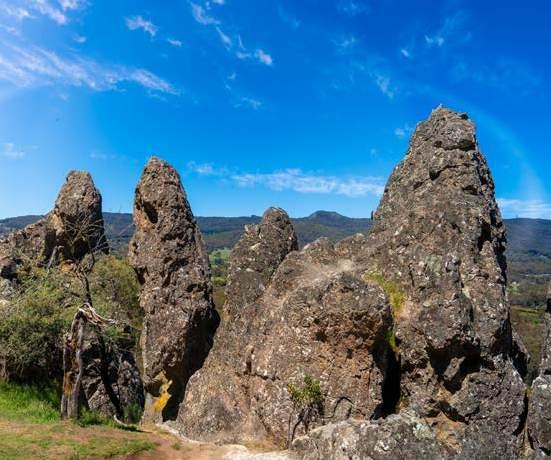
Summer 12°C to 26°C
Winter 4°C to 13°C
Average rainfall 492mm
Transport links
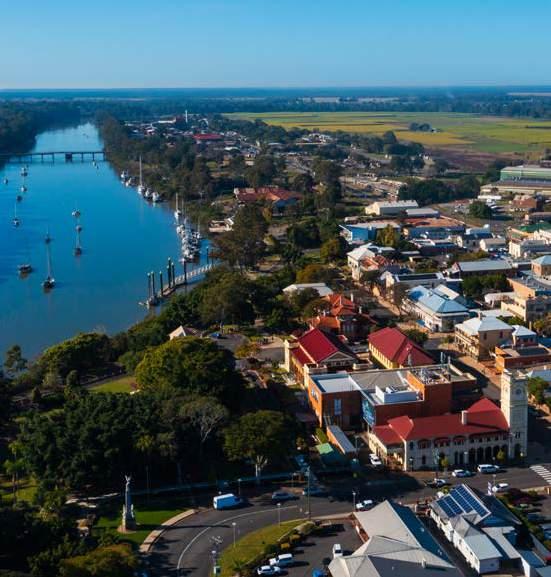
Affordability
Traditional custodians
The Gubbi Gubbi people
Eternal optimists might come here hoping to find gold, but the genuine warmth of country living is the real reward in Maryborough. Delight in the historic architecture and lush gardens.
Why you might like it
For an authentic country town with friendly people, you can’t go past Maryborough, in the heart of Victoria’s Goldfields region.
The first thing you’ll notice is the grand, gold rush architecture and the beautiful, lush gardens – despite the town being in a dry, temperate climate.
On a visit to Australia in 1895, Mark Twain described Maryborough as a “railway station with a town attached” and in true-blue Aussie style, we’ve been celebrating that railway station and back-handed compliment ever since.
The historic station is now the hub of the city, with a museum and gallery, cafe and visitor centre – plus it still operates as a train station, connecting Maryborough to the bustling regional centres of Bendigo and Castlemaine. And Maryborough has become so much more than just a train station.
Plus, it can be a great spot to downsize. "Our last house was really big and on a sloping block, so we had to spend a
Median dwelling price
• Gold rush history
• Affordable living
• Train connections
$367,294
Median weekly rent $396
Population 8,160
Distance to nearest major hospital Maryborough District Health Service is in Maryborough
Distance from nearest capital city Melbourne, 160km
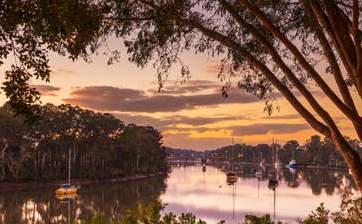
lot of time maintaining that. “Having a house that's much smaller and easier to maintain is a really big bonus." Says Debbie Nelsson 65, after moving from Melbourne.
Phillips Botanical Gardens is a local favourite, with great areas for bird watching, walking tracks and shady picnic tables. The town also has excellent amenities, like the Maryborough Tennis Centre and Mill House, which offers an art space for locals to come together for creative classes or to volunteer with a social team.
Art lovers will also enjoy the Central Goldfields Regional Art Gallery (which also welcomes volunteers) and the Possum Gully Fine Arts Gallery.
The Maryborough Highland Society was established in 1857, making it one of the oldest buildings in the state.
It’s also the town’s social hub, offering bistro meals, weekly events, bowls and tennis. Its biggest event is the annual Highland Gathering on New Years Day, which attracts visitors from all over Victoria. The popular Gathering was established during the gold rush in 1858, and naturally, it celebrates all things Scottish (Scotsmen were among the first settlers in the town), complete with highland dancing and highland games.
Of course, if you’re going to live in the goldfields, you’ll want to try your luck at gold prospecting. Gold nuggets are still being discovered across the region and government surveyors estimate there is still over $500 million worth of gold underground in Victoria.
It doesn’t hurt to dream, right?
Visit the Coiltek Gold Centre in Maryborough for maps showing areas most likely to produce nuggets and be sure to purchase a Miners Right online at Earth Resources and ensure prospecting is permitted in your search area.
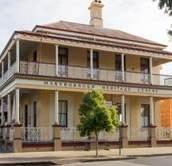
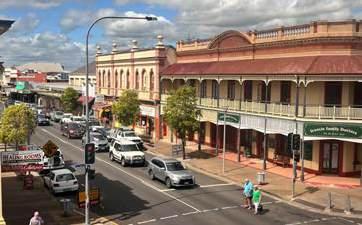

Debbie and John Nelsson turned a spontaneous moment into the perfect retirement plan. What started as a casual look in a real estate window while on a caravan trip has turned into financial freedom, a closeknit community and the lifestyle they'd always dreamed of in Maryborough, Victoria.
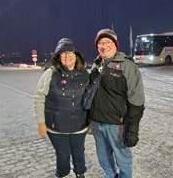
After raising two children and enjoying successful careers – Debbie as a school principal and John as a policeman and then a primary school teacher – the couple always planned to move to the country when they retired. As avid caravanners, they regularly went to nearby Barringhup for weekends and holidays and would do their shopping in Maryborough.
"One day we came in to go to the races and we went into the supermarket to get some snacks," Debbie, 65, recalls. While most of us have taken a few moments to browse real estate windows on weekends away, Debbie and John took it a step further.
"There was this little house for sale,’” Debbie says. “We looked at each other and said, 'Should we have a look?' So we never got to the races. We bought a house!"
That spontaneous moment in 2015 turned into a strategic three-year plan. They rented the Maryborough property out for three years while they prepared for their move from Melbourne, finally relocating in 2018.
The planning that made it work
Debbie and John, 67, say their success came from early planning and strategic financial decisions. "We owned a house and a unit in Melbourne,” Debbie says. “So we decided, if we sold the house, if we didn't like it here, we still had the unit as a backup.”
The financial benefits helped make the move a positive one, with property being a lot more affordable in the country. "We could sell our property in Melbourne, buy two houses here and still have plenty to put into our travel fund," Debbie says.
So they sold their five-bedroom, family home and bought both their Maryborough home plus an Airbnb property on the same street, which brings in an income and is also a place to stay when friends and family come to visit.
The couple deliberately chose a lowmaintenance house after years of managing a large property. "Our last house was really big and on a sloping block, so we had to spend a lot of time maintaining that," Debbie says. "Having a house that's much smaller and easier to maintain is a really big bonus."
Their financial freedom has enabled Debbie and John to live the retirement lifestyle they’ve always wanted. "We tend to sleep in – there's no need to set alarms," Debbie laughs. "And we're probably away at least six months of the year."
Their travel schedule is enviable: three months a year in their caravan touring Australia and three months overseas. In recent years, the couple have travelled and been on cruises covering Alaska, Antarctica and South America, with plans for Egypt and other areas of Africa coming up.
John says it’s important to get out and meet people. "I'm a firm believer that you need to have hobbies –and one hobby's not good enough,” he says. “You've got to have a few to meet different people doing different things."
John has always loved fishing and he has also discovered the joys of gold prospecting with friends and wood turning. "I saw a lathe for sale for only $100. I bought it, built it up, redid it and now I'm using it," he says. "The grandkids say 'Grandpa fixes everything!'"
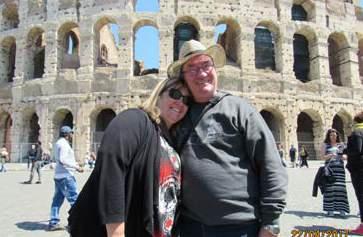
The level of community spirit in Maryborough has been one of the biggest surprises for the couple, with a strong level of community support. "I like the sense of community here," Debbie says. "There's a very strong community spirit of helping people out.
"Someone will put up on Facebook saying they're doing it tough and will ask if anyone can help with something and before you know it, they've got it," Debbie explains. "I've done a lot of dropping stuff off at people's houses that I don't know."
The practical benefits are important to Debbie and John. "Everything's walkable – we're 800 metres from the hospital, so you can walk wherever you want to go," says John.
The only real challenge is medical services, with a six-week waiting list for GPs, but there is always help in an emergency, so the couple feel safe knowing help is never far away.
For Debbie and John, that spontaneous look in a real estate window has delivered everything they hoped for their retirement: financial freedom, community connection and the flexibility to explore the world while having a welcoming home base to return to.
They say the key to their success was planning ahead. "One thing we did do was discuss it early to make that decision really early," Debbie explains. "Getting rid of your family home sometimes seems to be a big thing for some people. For us, we'd already talked about it and knew about it and we're quite happy to do it."
Summer 16°C to 26°C
Winter 6°C to 14°C
Average rainfall
1100mm
Transport links
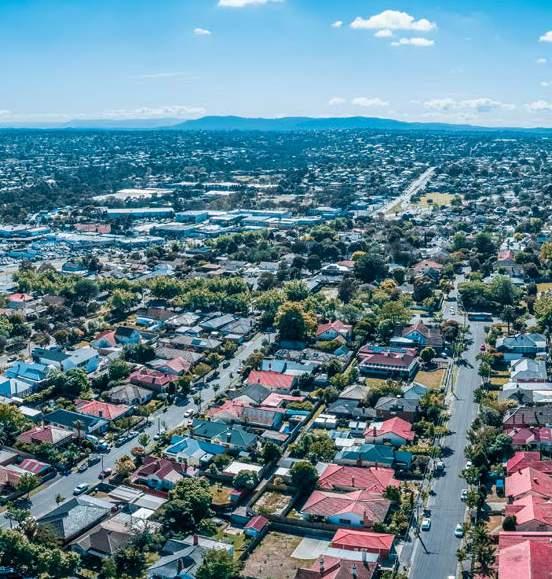
Affordability
Traditional custodians
The Wurundjeri Woi Wurrung and Bunurong peoples
Known as Melbourne’s Greek hub, Oakleigh is a haven filled with the most delicious food, drink and a colourful, welcoming atmosphere.
Why you might like it
Oakleigh is only 20km from the Melbourne CBD, with easy access via car, bus, or train. But Oakleigh also has its own CBD that spans over 9 city blocks, with many older commercial buildings dating back to earlier days of the city.
The Scotchmans Creek Trail is a 13km path that is a popular walk or cycle for locals. Enjoy an afternoon stroll while soaking up the sun, or leisurely cycle through some of Oakleigh’s hot spots.
One of the areas that the Scotchmans Creek Trail passes through is the Oakleigh Golf Course, a 9-hole course that hosts over 15,000 rounds a year. It’s also home to the Oakleigh Golf Club which hosts regular competitions and social events for its members.
Median dwelling price
• Close to Melbourne CBD
• Vibrant food and drink scene
• The “Greek heart” of Melbourne
Distance to nearest major hospital Monash Medical Centre is 6.5km away
Distance from nearest capital city Melbourne, 16km

Oakleigh Glendi is an annual festival in celebration of the Greek community’s rich culture through performances, food and music. Spread over two days, attendees can enjoy live singing, plenty of Greek food and drink and an artisan market area to pick up jewellery, craft items, Mediterranean spices and savoury snacks.
Eaton Mall is an outdoor shopping stripe that is also a showcase of Greek culture, with plenty of Mediterranean dining options. From fresh loukoumades to the juiciest souvlaki, this is where Oakleigh’s Greek community thrives.
One of the more notable Greek-owned businesses in Oakleigh is Nikos Quality Cakes. Their bustling cafe and awardwinning cake creations mean that a custom order for a special occasion is easy, but so is popping by for an impromptu afternoon treat.
Vanilla Lounge is a cafe, restaurant and function space that has been serving the community of Oakleigh since 2008. Their Mediterranean menu, from traditional Greek biscuits to popular classics, is a journey for the tastebuds.
The Oakleigh Evening VIEW Club is a women’s group in association with The Smith Family. The group enjoys regular social gatherings, meetings, book stalls and day trips.
For avid swimmers or those wanting to learn, the Oakleigh Recreation Centre includes seasonal outdoor pools. There’s also a health club on site, with group classes such as yoga, stretching and specific exercises designed to target mobility and functional strength.
Oakleigh Central is a local shopping centre with supermarkets, pharmacies, banks, a medical centre and many variety stores. There are also lots of food options, with a food court and separate takeaway shops available.
The historic Oakleigh House Museum is home to over a thousand artefacts including silver, china and fine art. There’s also the opportunity to volunteer and help out in ways such as gardening, hosting special events, or being a tour guide.
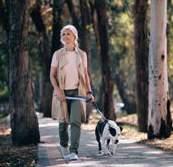

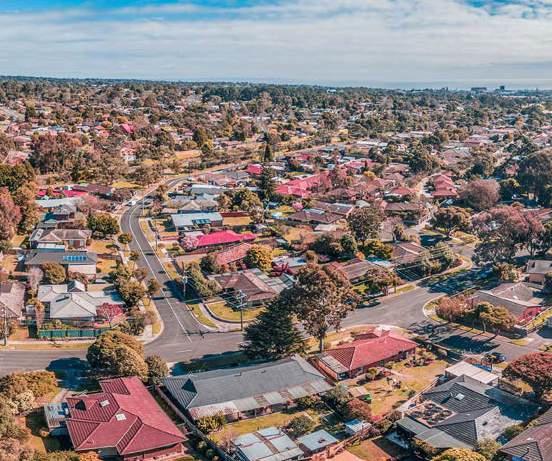
Summer 14°C to 24°C
Winter 6°C to 15°C
Average rainfall
695mm
Transport links

Affordability
Traditional custodians
The Gunaikurnai people
If you want a life on or near the water, Paynesville could be your new home. Surrounded by canals and inlets, this charming village is ideal for boaties.
Why you might like it
A charming village surrounded by water on three sides, Paynesville offers a gentle, uncomplicated life. It’s the boating capital of Victoria’s Gippsland, with canals and inlets providing plenty of sheltered mooring opportunities. Most properties are within walking distance of the lake and you won’t find a single traffic light in town!
Water activity enthusiasts flock to Paynesville for holidays, but if you’re living here, you can settle into a lifestyle of fishing for black bream, tailor, whiting and mullet, windsurfing, swimming, jet skiing and boating –alongside the plentiful dolphins that frolic in these waters.
• Stunning waterways
• Peaceful rural town
• Great for boaties
Median dwelling price $540,394
Distance to nearest major hospital Bairnsdale Regional Health Service is 18km away
Distance from nearest capital city Melbourne, 300km
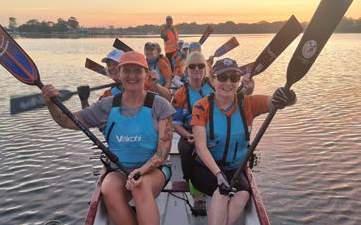
ON THE WATER IS JUST A DREAM FOR MANY, BUT IF YOU WANT TO MAKE IT YOUR RETIREMENT REALITY, YOU’LL BE HAPPY IN PAYNESVILLE
Life on the water
Nature lovers will also be happy to regularly take the 5-minute ferry ride to Raymond Island, where you’re guaranteed to see koalas every time you visit.
The Koala Trail on the island is a 2-kilometre stroll and is sure to become part of your routine. Despite being a small town, Paynesville’s popularity with tourists means it has excellent amenities, with waterside dining, a large supermarket and a friendly community atmosphere anchored by plenty of social clubs.
Once you’ve worked up an appetite on the local walking trails, enjoy the fresh local seafood and seasonal dishes at one of the restaurants in town with views of the water, such as Pier 70 or Sardine Eatery & Bar. The pub is always popular for a meal and there are plenty of spots to picnic close to water and the bush.
The Toonalook Amateur Fishing Club Paynesville hosts regular events and competitions and is a friendly place to get all the fishing intel before you head out on the water.
The Paynesville Bowls Club offers competitive and social bowls, the Kingfisher Dragon Boat Club welcomes new members and the Paynesville Neighbourhood Centre is a not-for-profit organisation that offers a range of social and recreational activities, as well as adult education classes.
Bairnsdale Golf Club is just down the road, with special programs like Women in Golf and a lawn bowls coaching clinic. It’s open to the public for bowls or the bistro and new members are always welcome.
The Paynesville Farmers and Makers Market is held on the last Saturday of the month with local crafts and produce and a lively atmosphere.
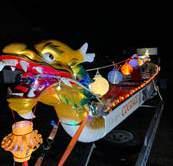
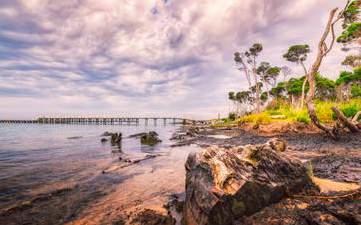
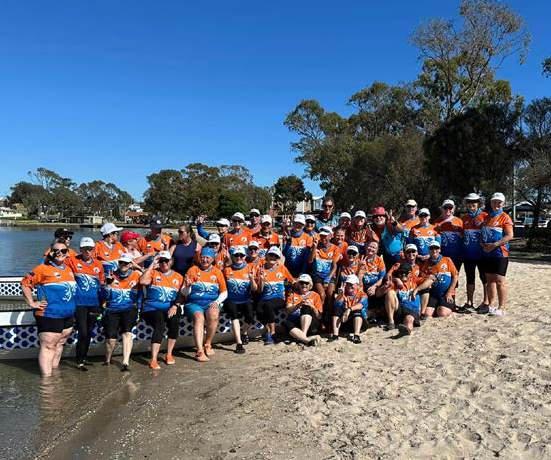
Summer 14°C to 22°C
Winter 7°C to 15°C
Average rainfall
695mm
Transport links
Affordability

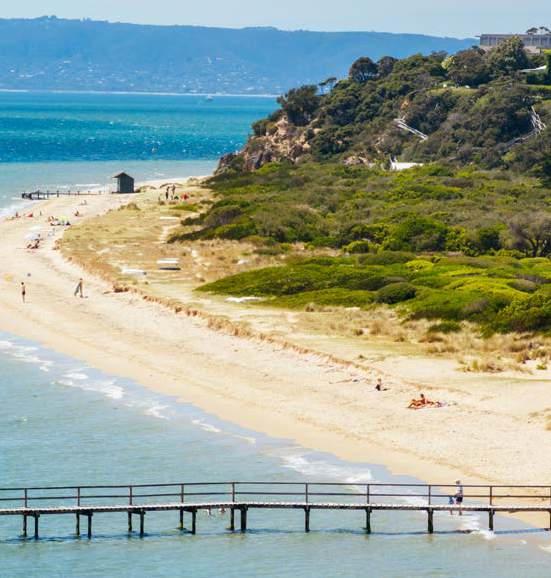
Traditional custodians
The Bunurong people
Located at the tip of the Mornington Peninsula, with ocean views for days, Portsea is close enough to everything to keep you connected, but also feels like a world away.
If a quiet, upscale lifestyle away from the hustle and bustle of Melbourne appeals to you, Portsea could be the retirement spot for you.
The area has some wonderful beaches, including Portsea Front Beach and Shelley Beach, which are perfect for swimming in the warmer months and for leisurely walks all year round.
And the famous Portsea Pier offers locals the chance to fish, dive and swim in the clear water and soak up some of the best ocean views in the region.
Median dwelling price
Median weekly rent
• Beachfront living
• Bustling arts and culture scene
• Scenic coastal & native bushland views
$2,589,235
$944
Population 787
Distance to nearest major hospital Rosebud Hospital is 17km away from Portsea
Distance from nearest capital city Melbourne, 110km
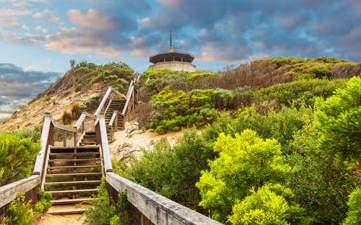
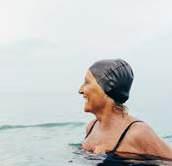
A food and wine haven
There are quite a few noteworthy restaurants and cafes, such as the Portsea Hotel, where you can enjoy delicious meals with spectacular ocean views.
Nearby, the Mornington Peninsula’s renowned wineries offer exquisite tastings and dining experiences, specialising in pinot noirs and chardonnays.
If you love the outdoors, the Point Nepean National Park has plenty of historic sites and scenic walking trails and golf lovers will be in their element at the prestigious Portsea Golf Club, which features stunning coastal views and a championship course, consistently ranked in Australia’s top 50.
The Portsea Surf Life Saving Club is a great way to stay engaged and meet new people, and the Sorrento Sailing Couta Boat Club is the place to be for sailing and boating enthusiasts –and if you don’t have your own boat, there are always skippers looking for crew members.
Art lovers can join workshops and exhibitions at the nearby Mornington Peninsula Regional Gallery and you can join to be a friend of the gallery for special offers and events. History buffs might like to join the Mornington Peninsula Local History Network.
The Sorrento RSL is also a popular local social hub, with meals, regular live performers and opportunities to connect with your neighbours.
Housing in Portsea ranges from luxurious multi-level clifftop beach mansions to charming original bungalows, many with panoramic ocean views. Healthcare is excellent, with medical facilities in Sorrento nearby and Rosebud Hospital less than half an hour away.
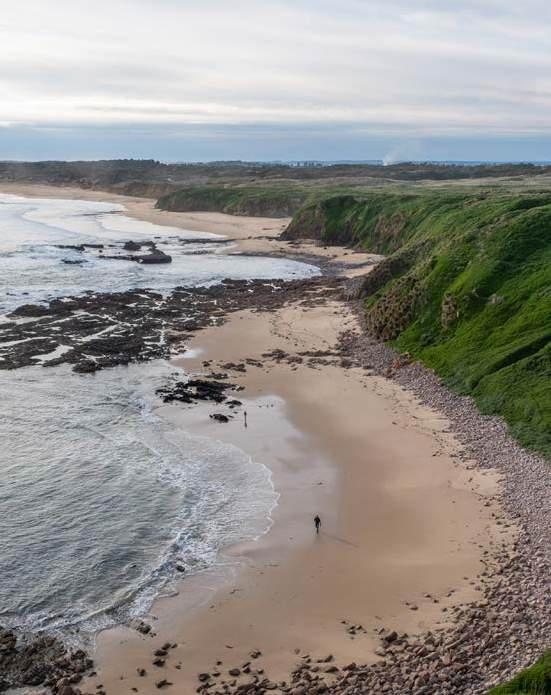
Summer
15°C to 23°C
Winter 7°C to 15°C
Average rainfall
795mm
Transport links
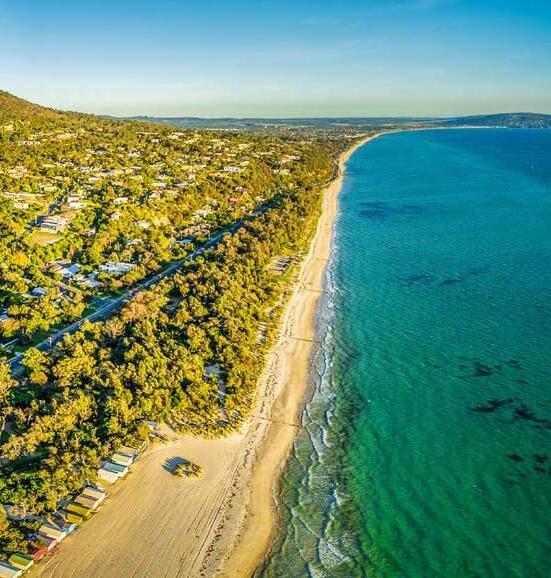
Affordability
Traditional custodians
The Bunurong, Wurundjeri
Woi-wurrung and Wadawurrung peoples
Perched on the picturesque Mornington Peninsula, Rosebud exudes a laid-back allure. Beachside living meets convenience, along with a busy and welcoming community.
Why you might like it
Rosebud offers the best of both worlds: spend your retirement living in a charming seaside town, while still being only an hour’s drive down the freeway to everything Melbourne has to offer.
Rosebud is popular among retirees and young families, so it’s a vibrant and friendly area, with all the amenities you need.
The population swells in the summertime as families flock to the coast. It’s testament to this little town’s friendliness that, despite the jump in population, everything just keeps on joyfully flowing.
• Close to Melbourne
• Mornington Peninsula living
• Relaxed lifestyle
Median dwelling price $769,805
Distance to nearest major hospital Rosebud Hospital is in Rosebud
Distance from nearest capital city Melbourne, 75km

WHILE THE HOUSING COST IS COMPARABLE TO MANY MELBOURNE SUBURBS, YOU GET A LOT MORE BANG FOR YOUR BUCK OUT HERE AND THE BEACHSIDE LOCATION IS UNMATCHED
If you live in Rosebud, it’s easy to leave the car at home and walk just about anywhere local including to the safe and clean beach, which is protected by offshore sandbars and stretches for 9km.
The foreshore reserve offers barbecues and shady picnic spots to pleasantly while away an afternoon.
If you like a longer walk, the area has a variety of coastal walking trails with pretty beaches, bird watching, bush, lighthouses and lookouts.
There is a strong community in Rosebud and it’s very welcoming. Try joining the Rosebud Over 50s Social Club, which is open most days, offering a range of activities to keep you social and active, including dance and fitness classes, a quilters group and regular social days.
The Rosebud RSL has a popular bistro with regular bingo and quiz nights and bus trips away. The Rosebud Italian Club welcomes people from all backgrounds and promises love, happiness and good food!
Another reason to love Rosebud is its proximity to the 50 boutique cellar doors around the Mornington Peninsula, famous for its pinot noir and chardonnay. With wineries this close, you can make your visits a regular event and take your time choosing a favourite.
Mornington Peninsula Golf Club is in Rosebud too, with practice facilities open to the public and membership open in all categories. There is also excellent dining at the club’s Bistro 62 and a large bowling green for competition and social bowls.

The Rosebud Hotel is an iconic social hub, directly opposite the beach. You’ll find young and old hanging out here, with a range of social activities including footy tipping competitions, live music and poker – plus it offers great meal deals for seniors.

Find a unique and tropical lifestyle in the Northern Territory, with a relaxed pace and lower cost of living compared with other major Australian cities.
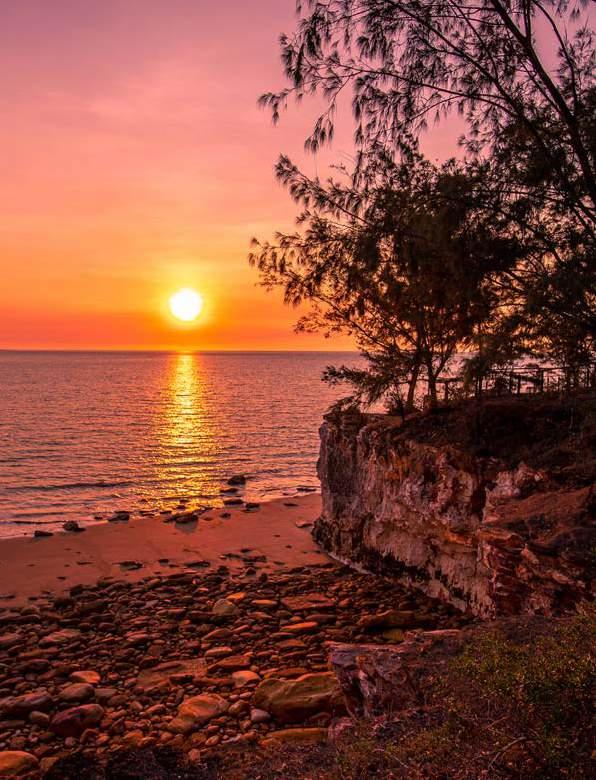
Summer 24°C to 32°C
Winter 19°C to 32°C
Average rainfall 1725mm
Transport links

Affordability
Traditional custodians
The Larrakia people
With everything you need to live a relaxed tropical lifestyle without missing out on city conveniences, Fannie Bay could be your forever home.
Why you might like it
Just 5km from Darwin's CBD, Fannie Bay is one of the city’s most coveted neighbourhoods, thanks to its unique blend of tropical charm and urban convenience – and, of course, its iconic sunsets.
The waterfront runs the entire length of the suburb, from the museum precinct at one end right up to the edge of the recreational area of East Point Reserve, which has plenty of scenic walking and cycling trails, picnic spots and a chance to see local wildlife.
The bay is a popular spot for locals – from a walk along East Point Road to an afternoon of sailing or fishing, or catching up with friends for a meal at the Darwin Ski Club or the Darwin Trailer Boat Club.
Fannie Bay is also home to the Darwin Turf Club, which hosts the famous Darwin Cup, a highlight of the local social calendar. If sailing and boating is more your thing, the Darwin Sailing Club has excellent facilities and a welcoming community of enthusiasts.
TERRITORY CITY OF DARWIN
• Prestigious real estate
• Spectacular sunsets
• Luxe waterfront living
Median dwelling price
Distance to nearest major hospital Royal Darwin Hospital is 12km from Fannie Bay
Distance from nearest capital city Darwin, 5km
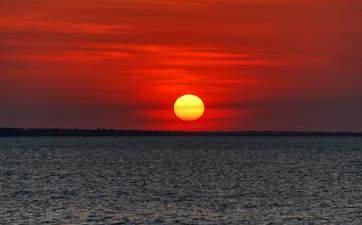
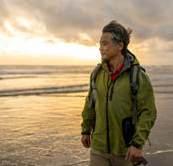
Amenities have never been more accessible
Fannie Bay has its own small shopping village with specialty stores, a supermarket and bottle shop, take away food and a cafe. The neighbouring suburb of Parap also has a larger shopping village and the famous Parap Village Markets.
The Fannie Bay Gaol Museum provides a glimpse into the area's history and welcomes volunteers to help out, while the George Brown Darwin Botanic Gardens showcase the region's unique flora and is also a great place to offer your time as a volunteer.
There are also plenty of local fitness classes, community events, or take up a new hobby like sailing or fishing. The vibrant community spirit and welcoming atmosphere make it easy to make new friends and feel at home. You can join their local Facebook group to find out what’s going on in the area.
Healthcare in Fannie Bay is topnotch, with easy access to Darwin’s comprehensive medical services, including Royal Darwin Hospital and a range of specialist clinics.
With healthcare sorted, you can relax into the lifestyle.
One of the greatest joys of Fannie Bay is its natural beauty. The foreshore stretches out with shady walking paths, perfect for morning strolls or evening bike rides as the sun drops into the Arafura Sea. The sunsets here are legendary: fiery skies of orange, pink and purple reflected on the water, with sailboats dotting the horizon. It’s the kind of daily spectacle that makes you pinch yourself and wonder why you didn’t move here sooner.
Nature is everywhere in Fannie Bay. Birdlife fills the mangroves and coastal reserves, with rainbow bee-eaters, kingfishers and cockatoos putting on a show. If you’re a beachcomber, the sandy stretches are wonderful for gentle walks, shell-collecting or simply enjoying the breeze.
Of course, this is the Top End, so yes, crocodiles are part of the landscape. You won’t be swimming in the bay (unless you want to become part of the local croc story), but that’s half the charm. Locals love to joke that while the sunsets here take your
breath away, the salties will too, so stick to the boardwalks, fishing spots and safe lagoons. The crocs add a certain rugged character to the place, reminding you that you’re living somewhere wild and spectacular.

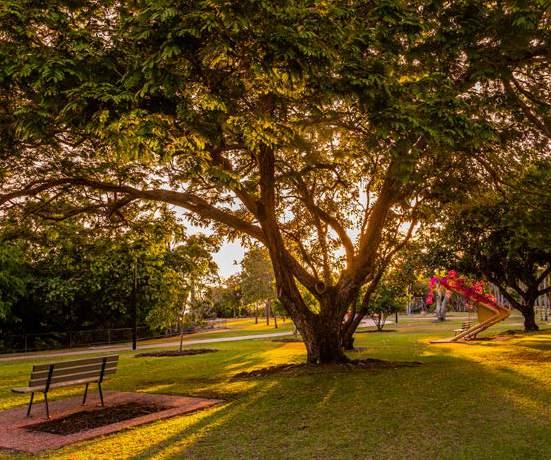
To create a meaningful and practical resource for Australians planning their next chapter, we used Cotality data to assess and compare towns and suburbs across the country. We then researched across a broad range of regions to arrive at the best 50 locations. Our goal was to provide a holistic snapshot of what makes a location truly liveable and retirement-friendly. Not just on paper, but in everyday life.
Each location in the guide was assessed across five key areas:
Housing affordability was compared both within each region and nationally, using Cotality data to identify places where retirees could get strong value for money. We looked beyond median prices to highlight areas offering relative affordability compared to similar towns and suburbs.
Housing availability considered how easy it is to buy or rent in each location. This included the volume of properties on the market, how long homes tend to stay listed before selling or renting, and the mix of dwelling types available – all important factors when you're trying to make a move without unnecessary stress.
Transport options were assessed based on how connected each place is – both within the town and to the region and beyond. We factored in access to major roads, public transport options (like buses and trains), community transport, proximity to airports and capital cities and how easy and enjoyable it is to get around by bike or on foot.
Healthcare access looked at the availability of GPs, medical centres, allied health services and, importantly, proximity to a major hospital with emergency care. For many, this is a non-negotiable in later life.
Lifestyle factored in the local culture, recreation options, greenspace accessibility and social infrastructure – think clubs and community groups, restaurants and cafes, live music, leisure facilities and other opportunities to stay active and social.
Within our top 50 we also spotlighted 10 outstanding ‘gold-plated’ locations. These are premium spots across the country that might not be affordable to all, but offer exceptional liveability and value when compared to their peers.
We hope this guide has been a useful compass for helping you discover the perfect place for you.
